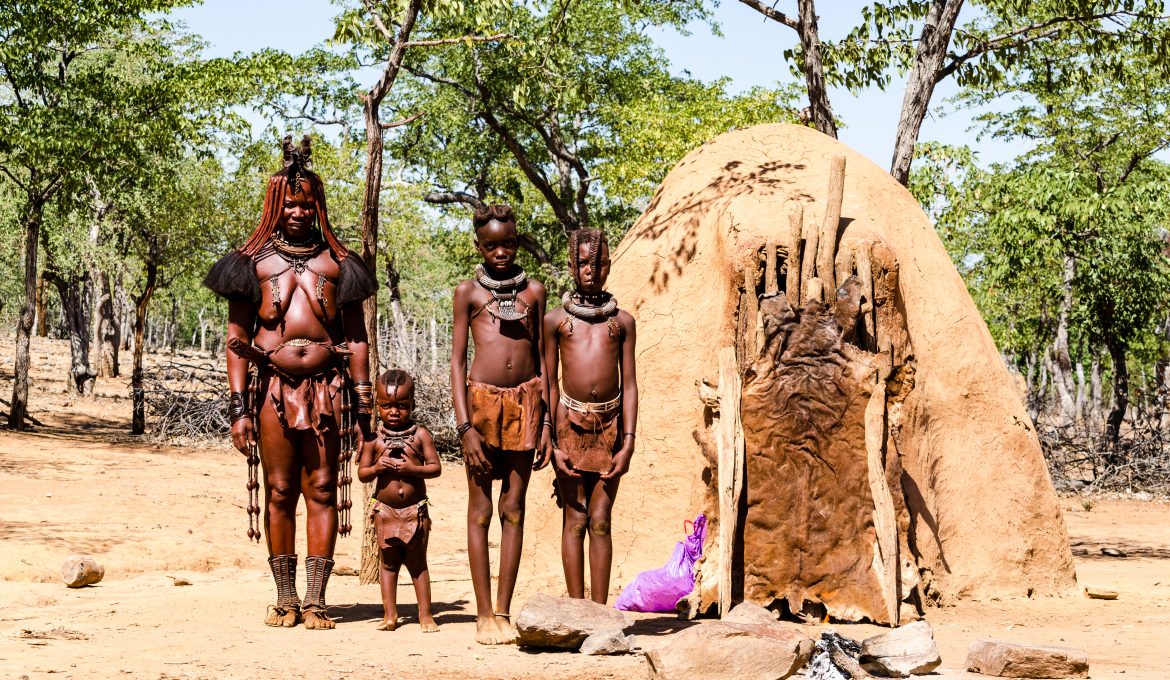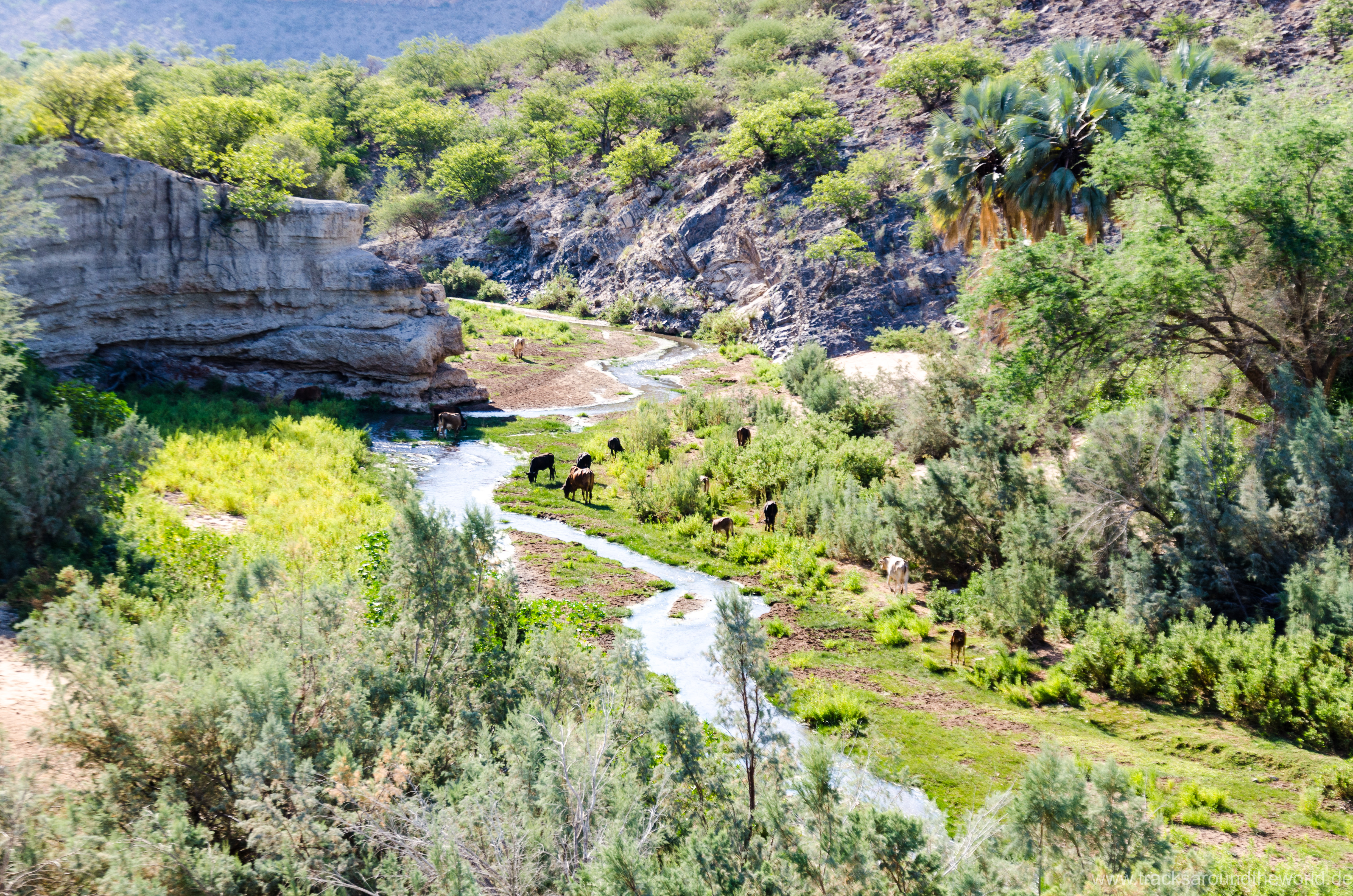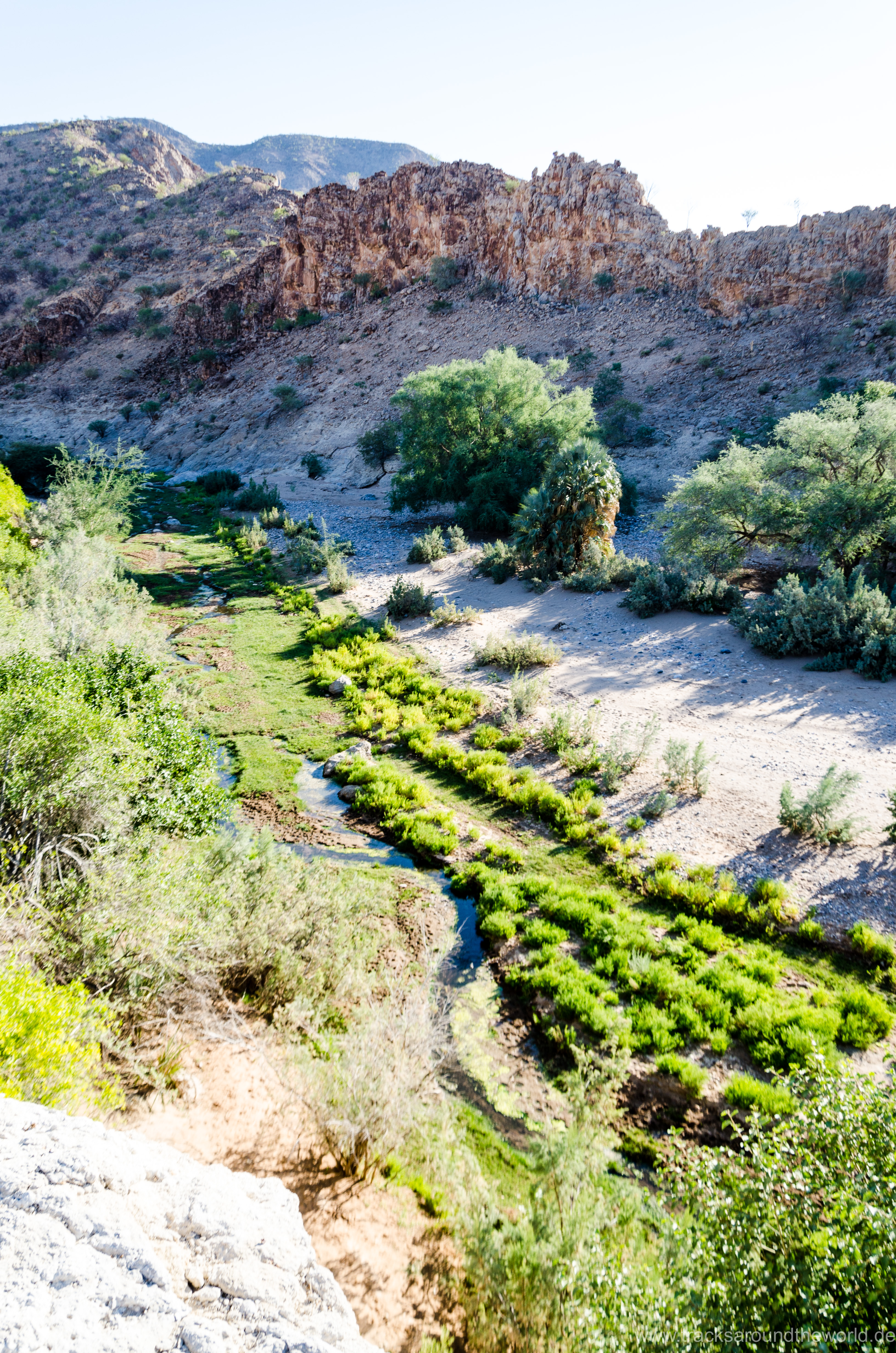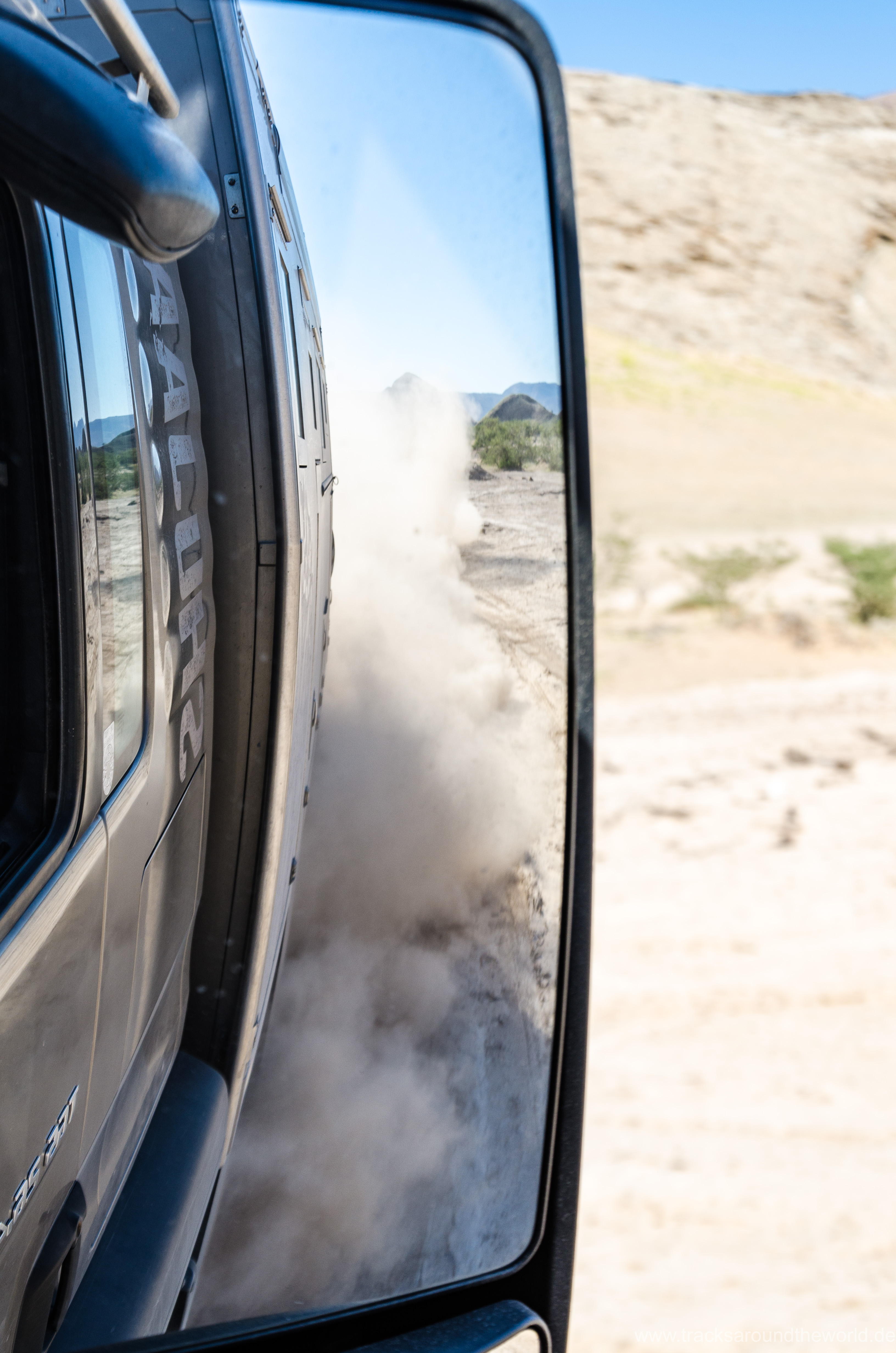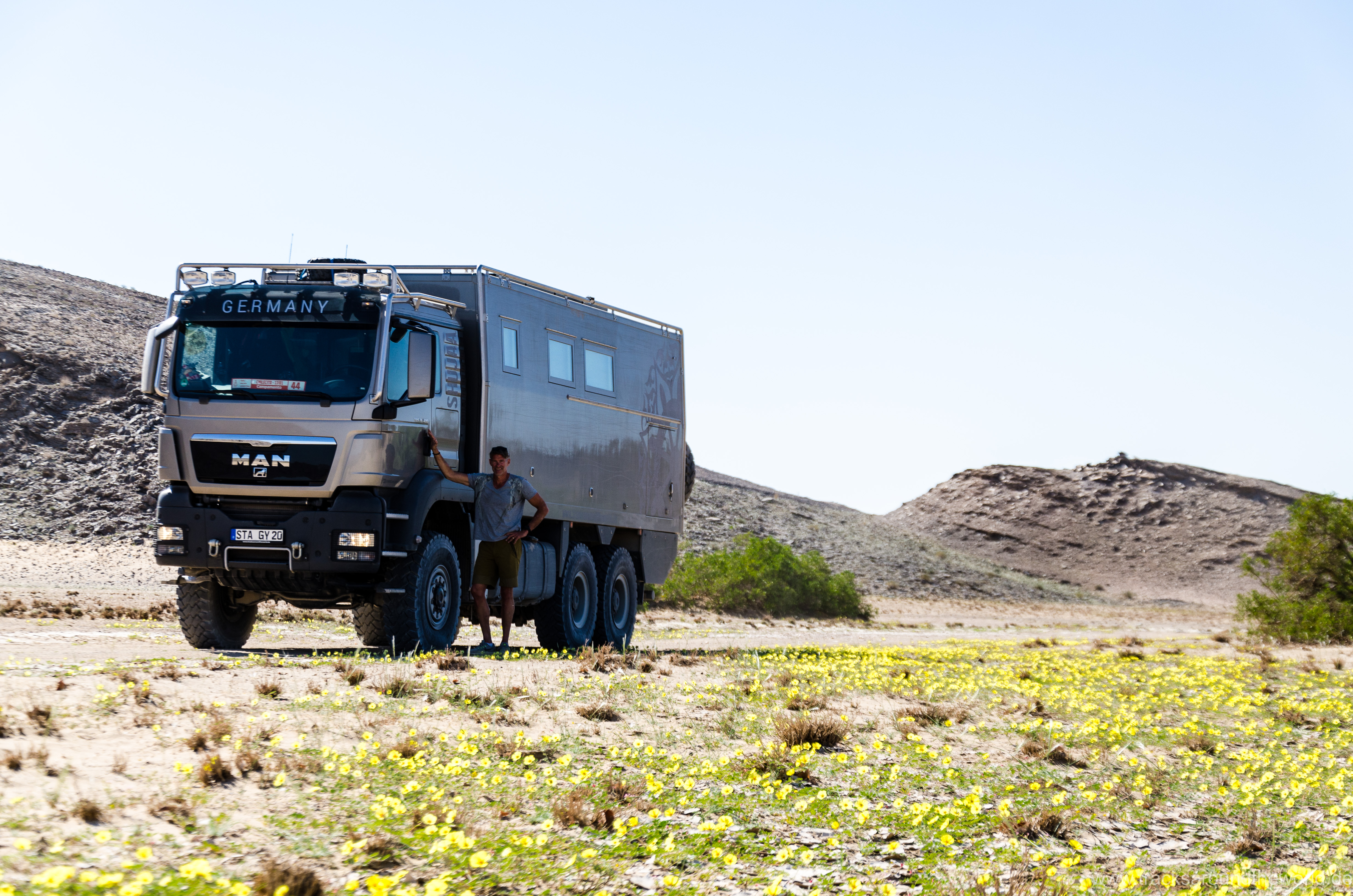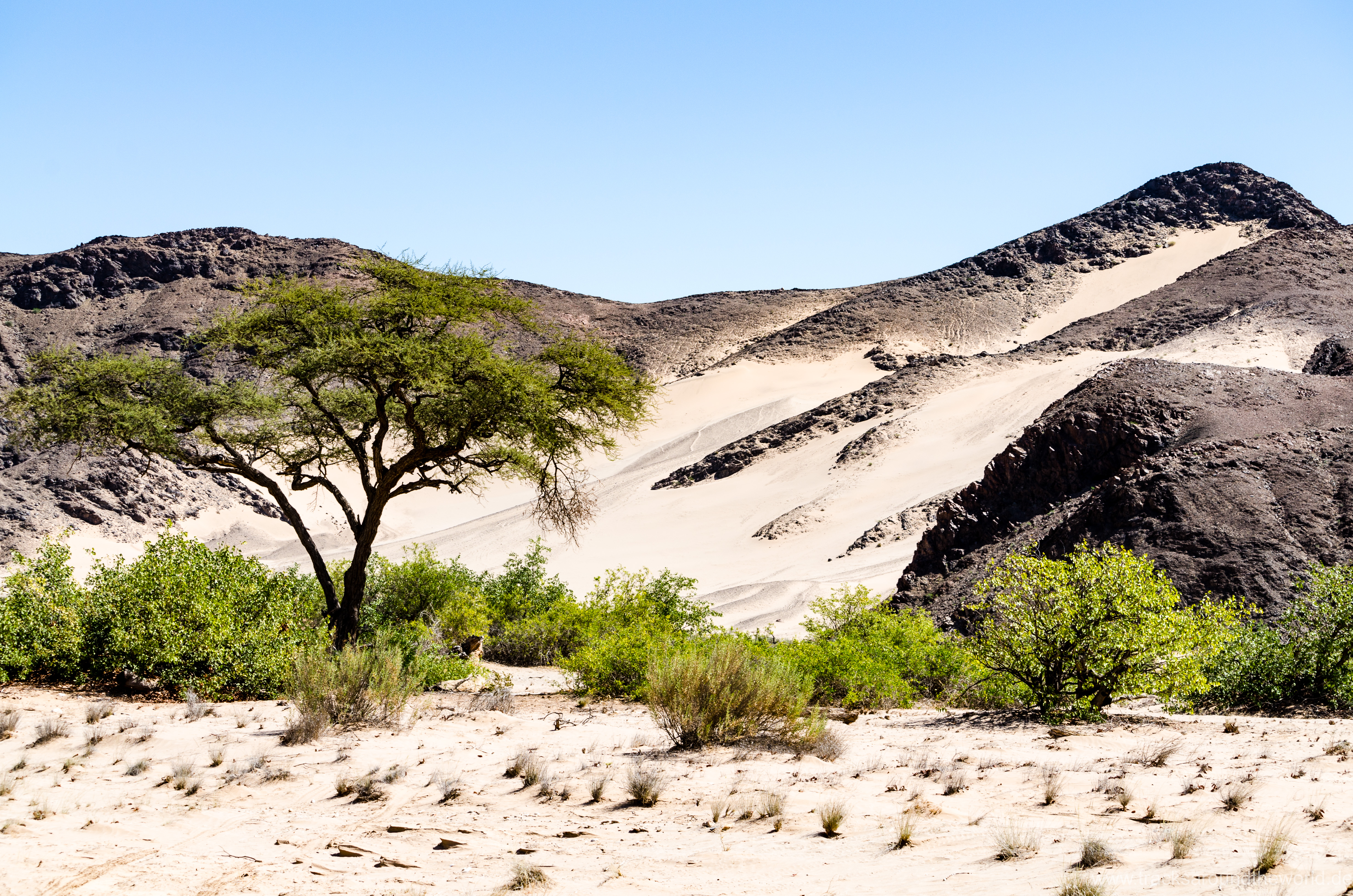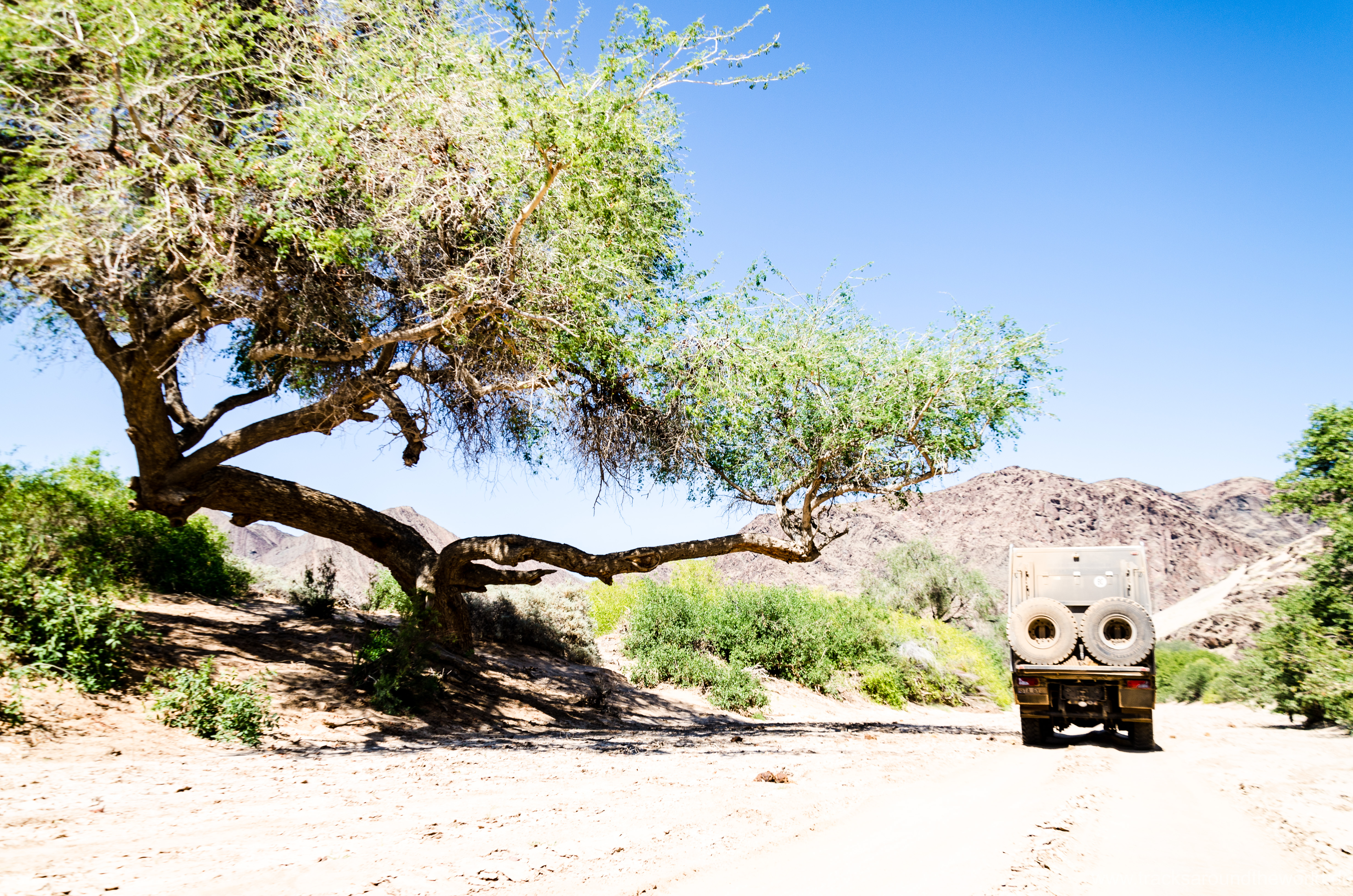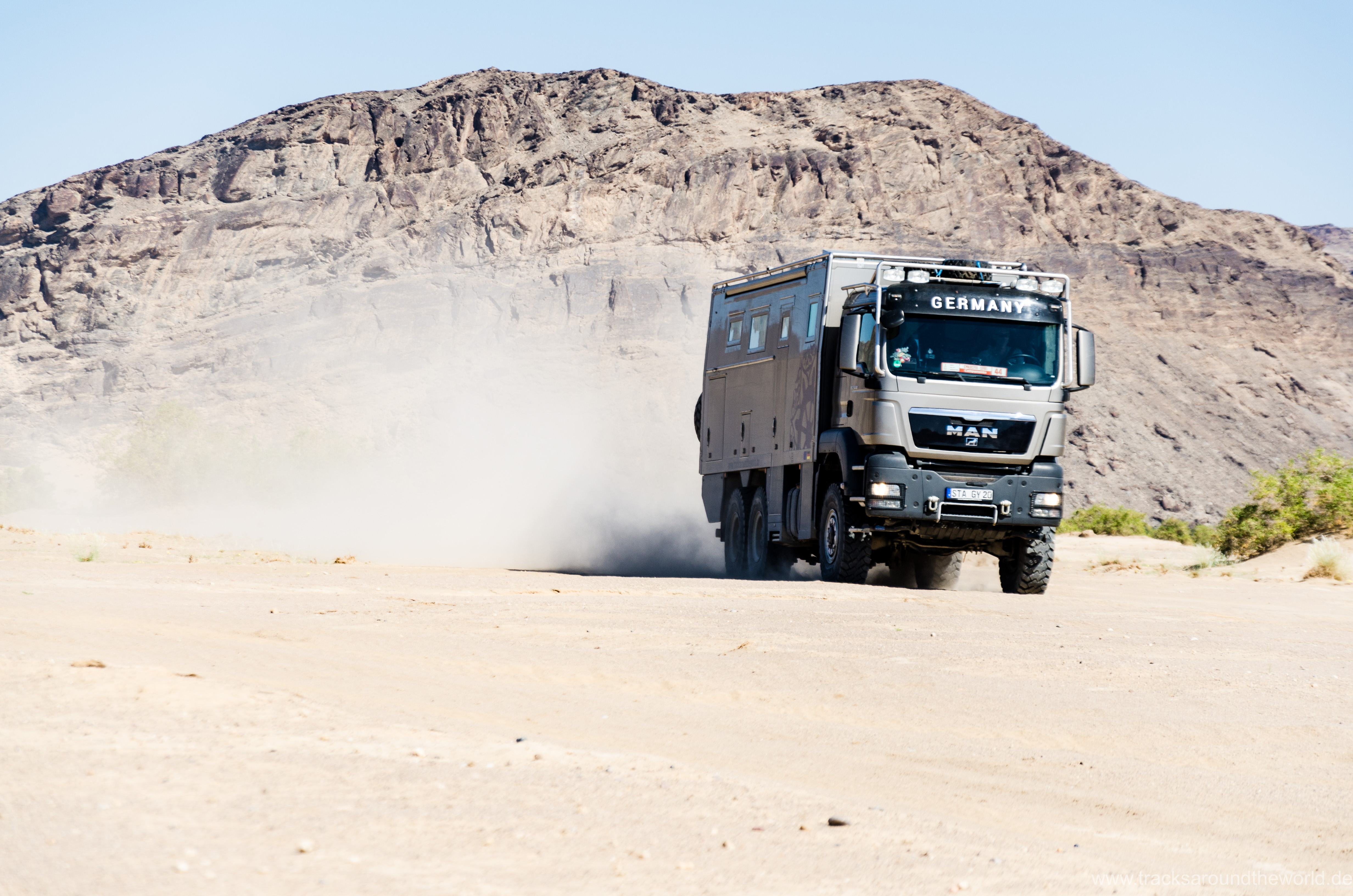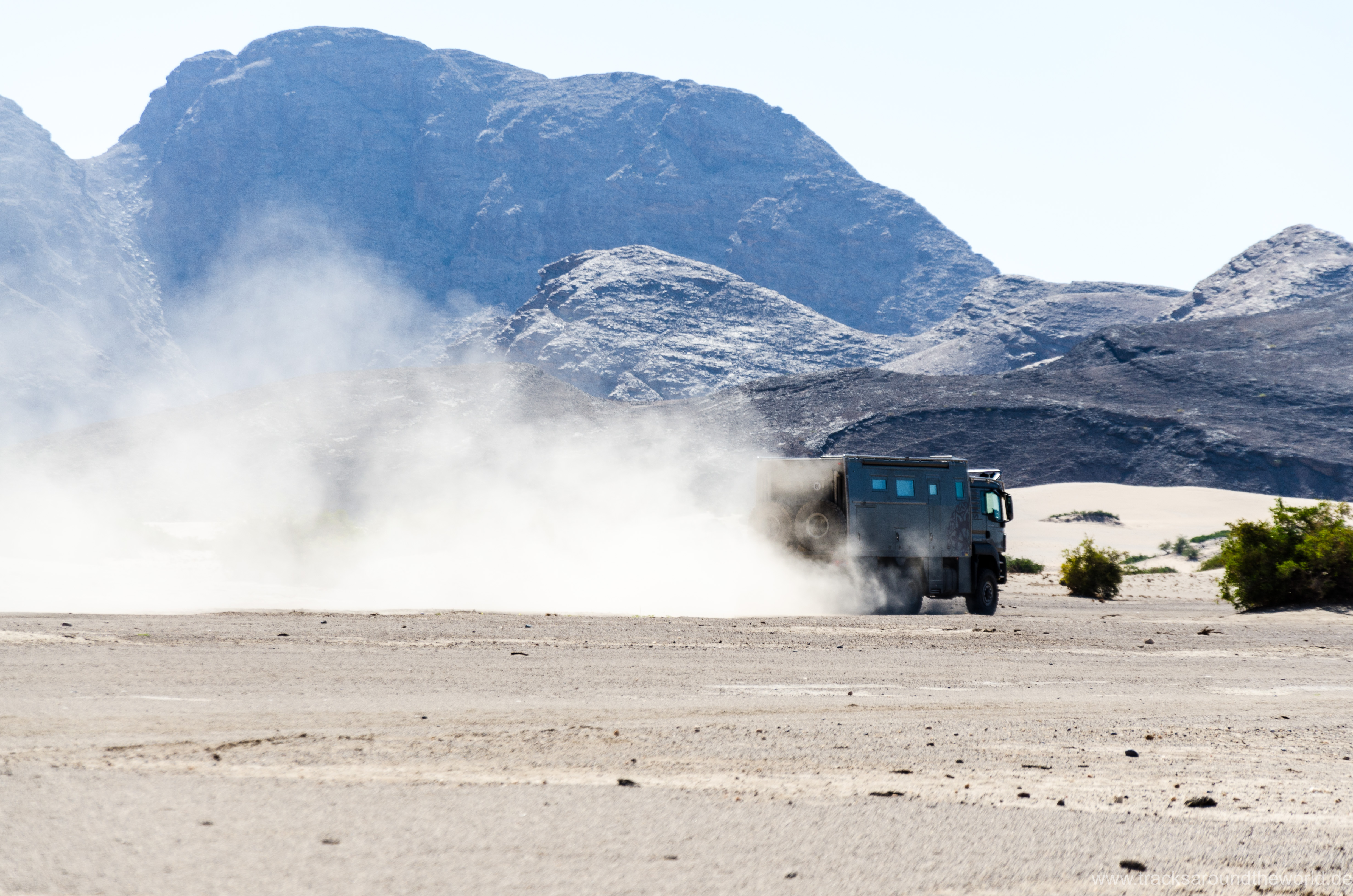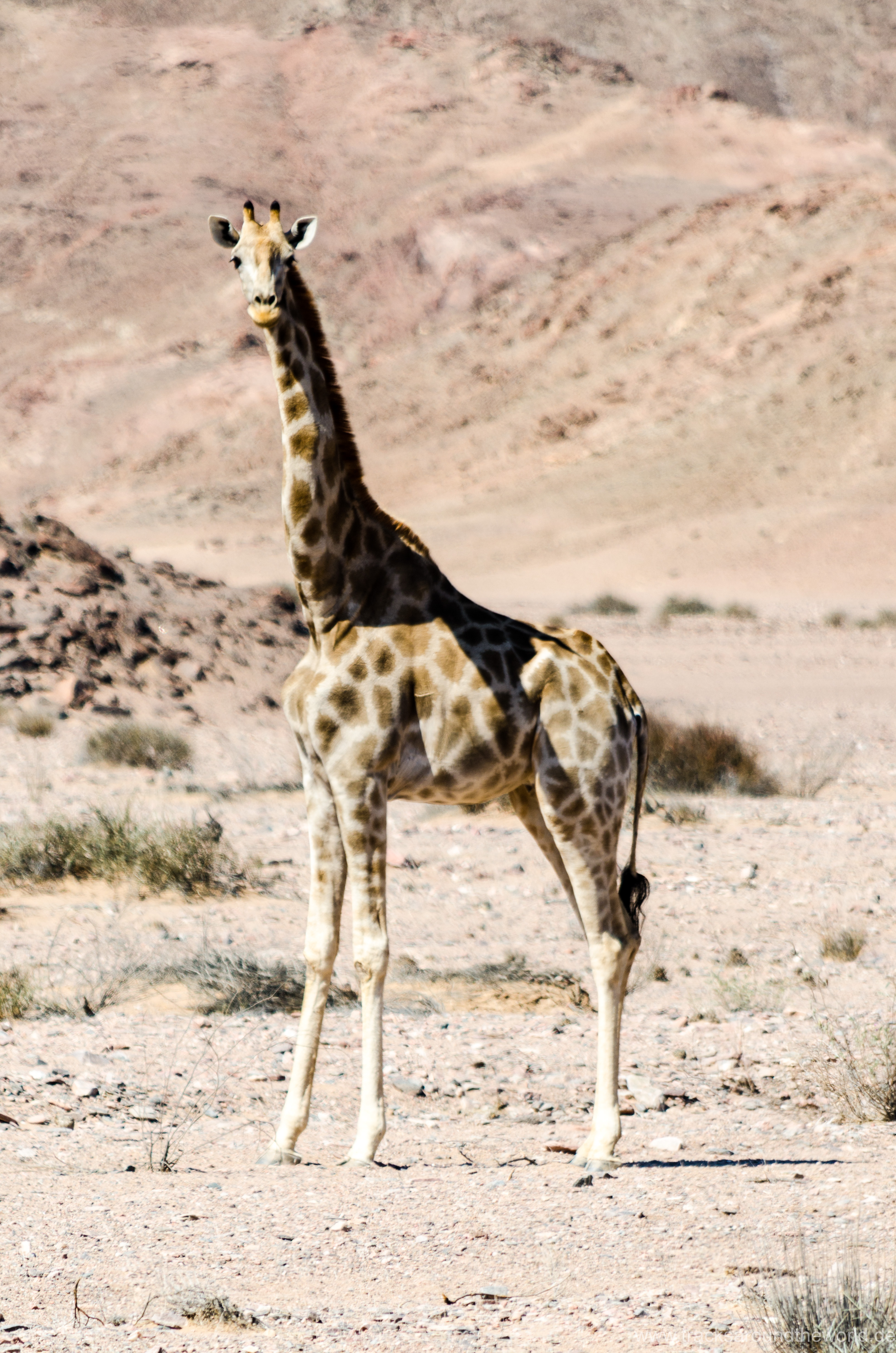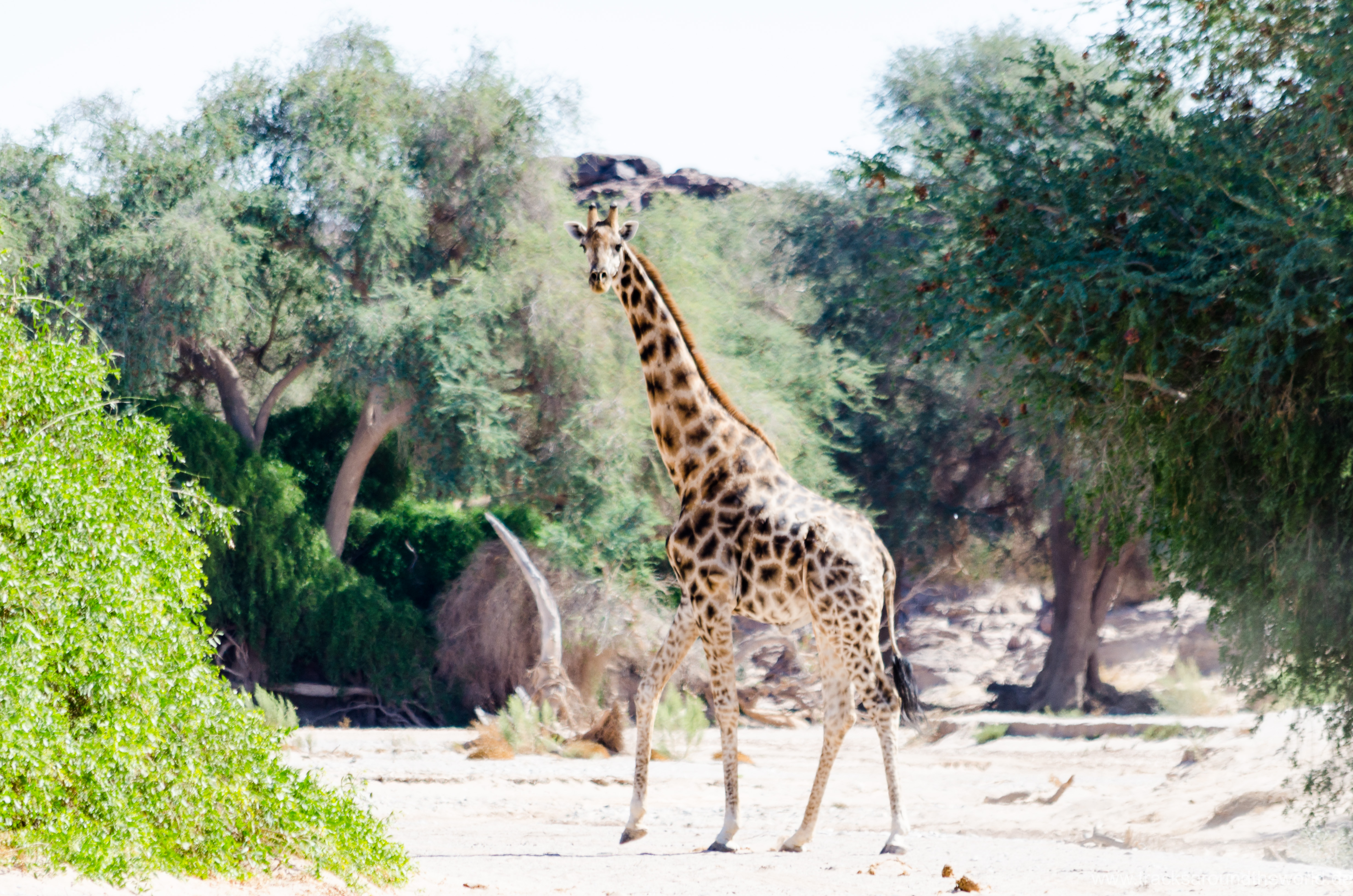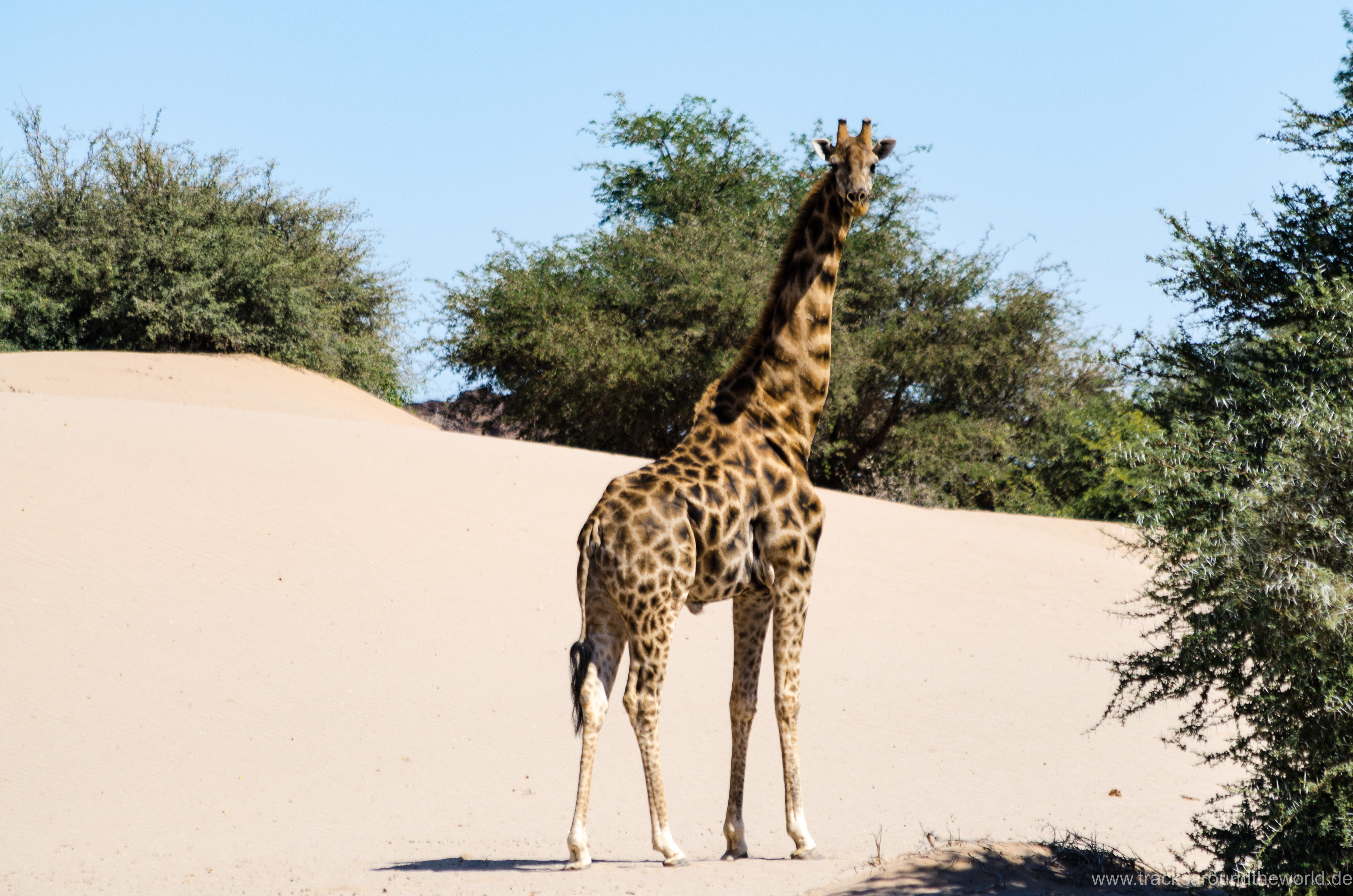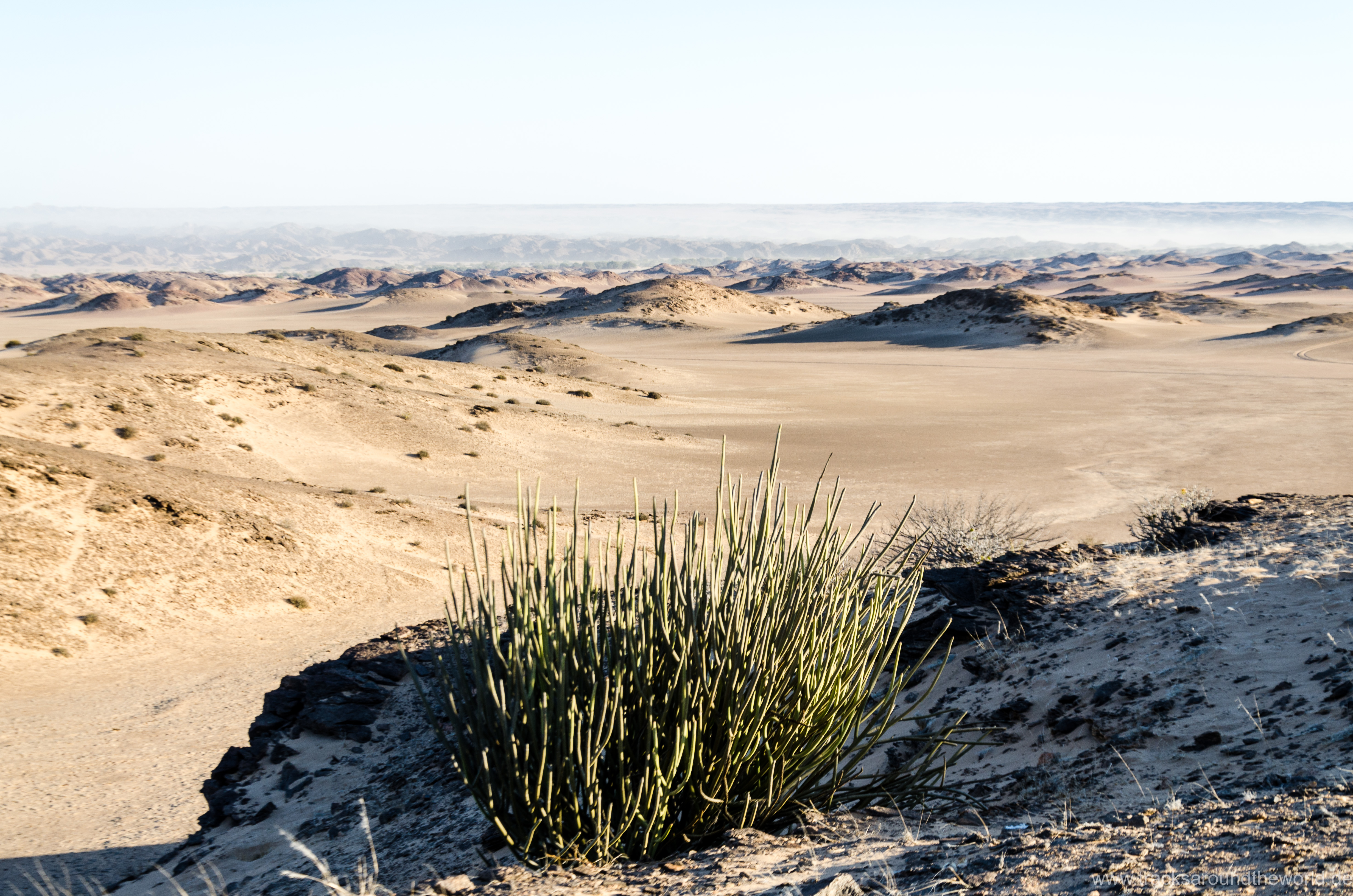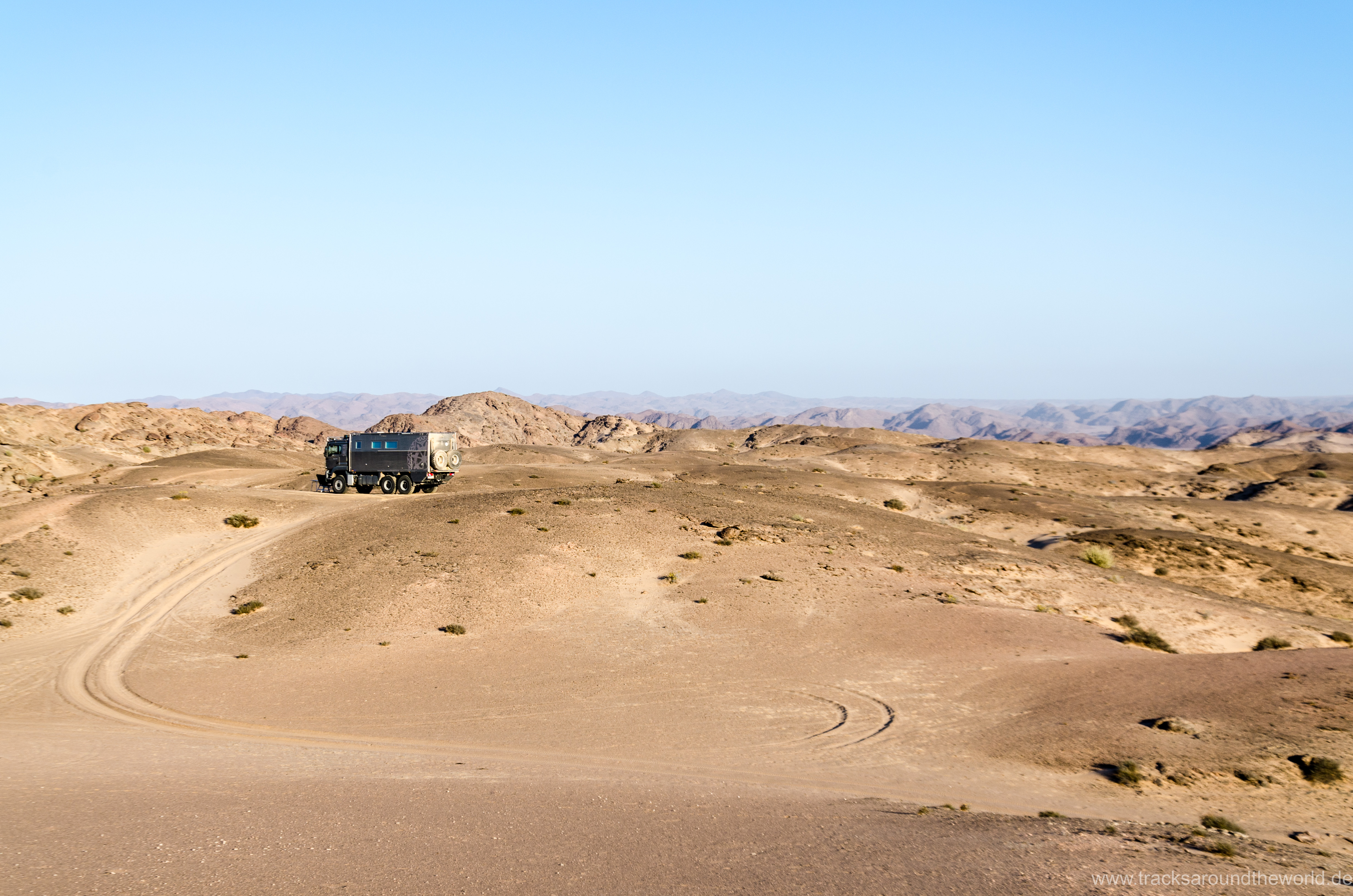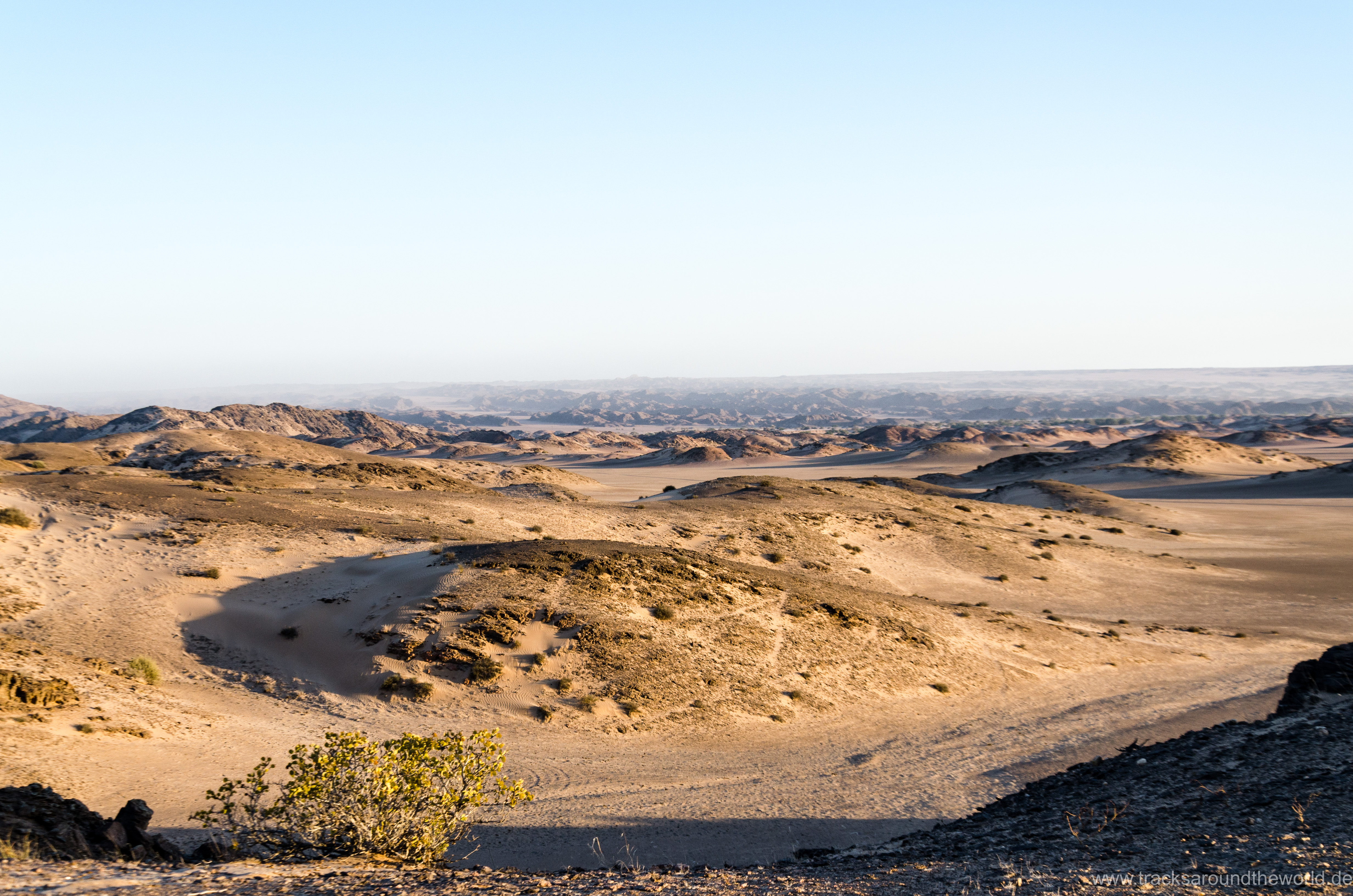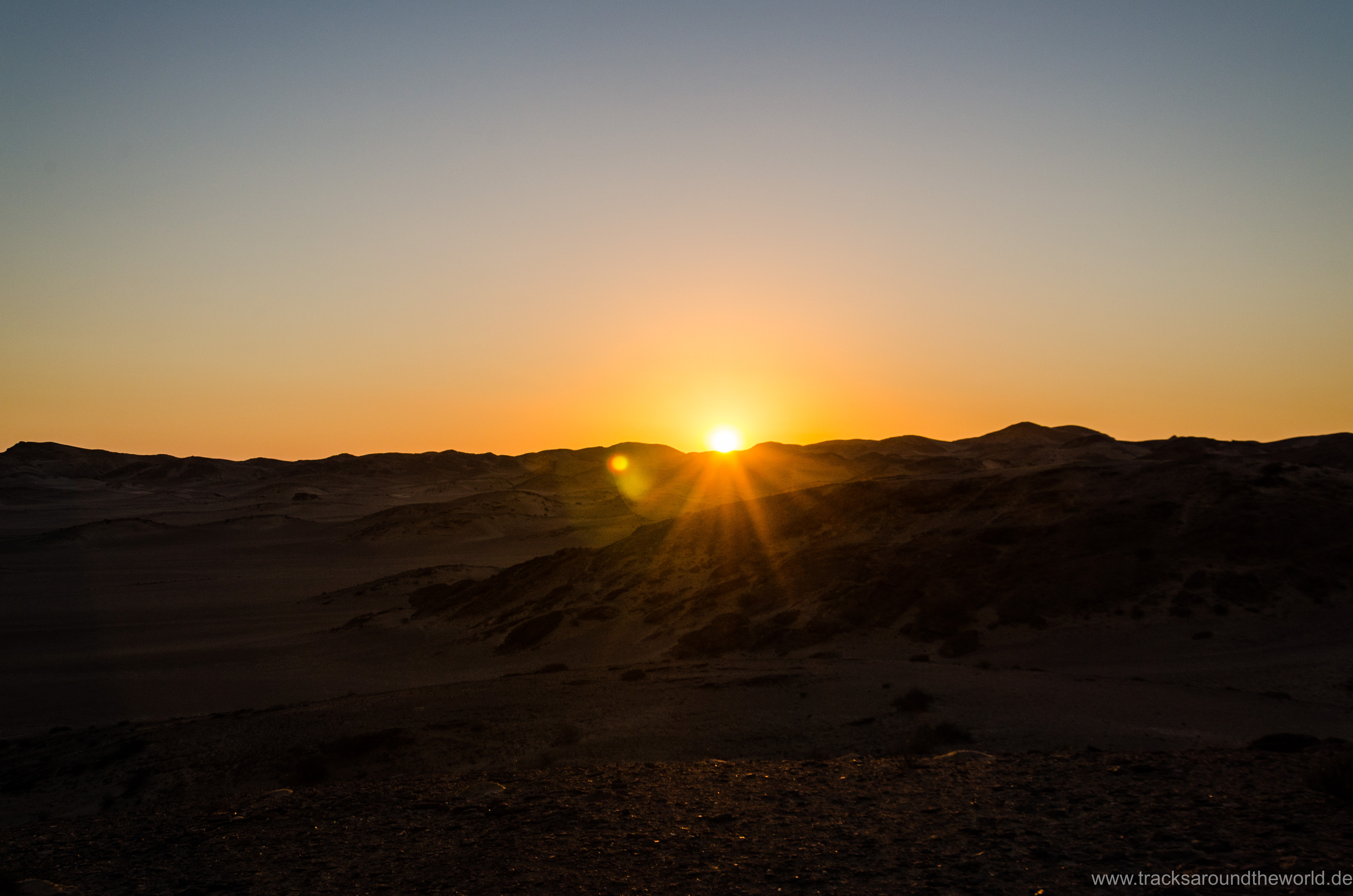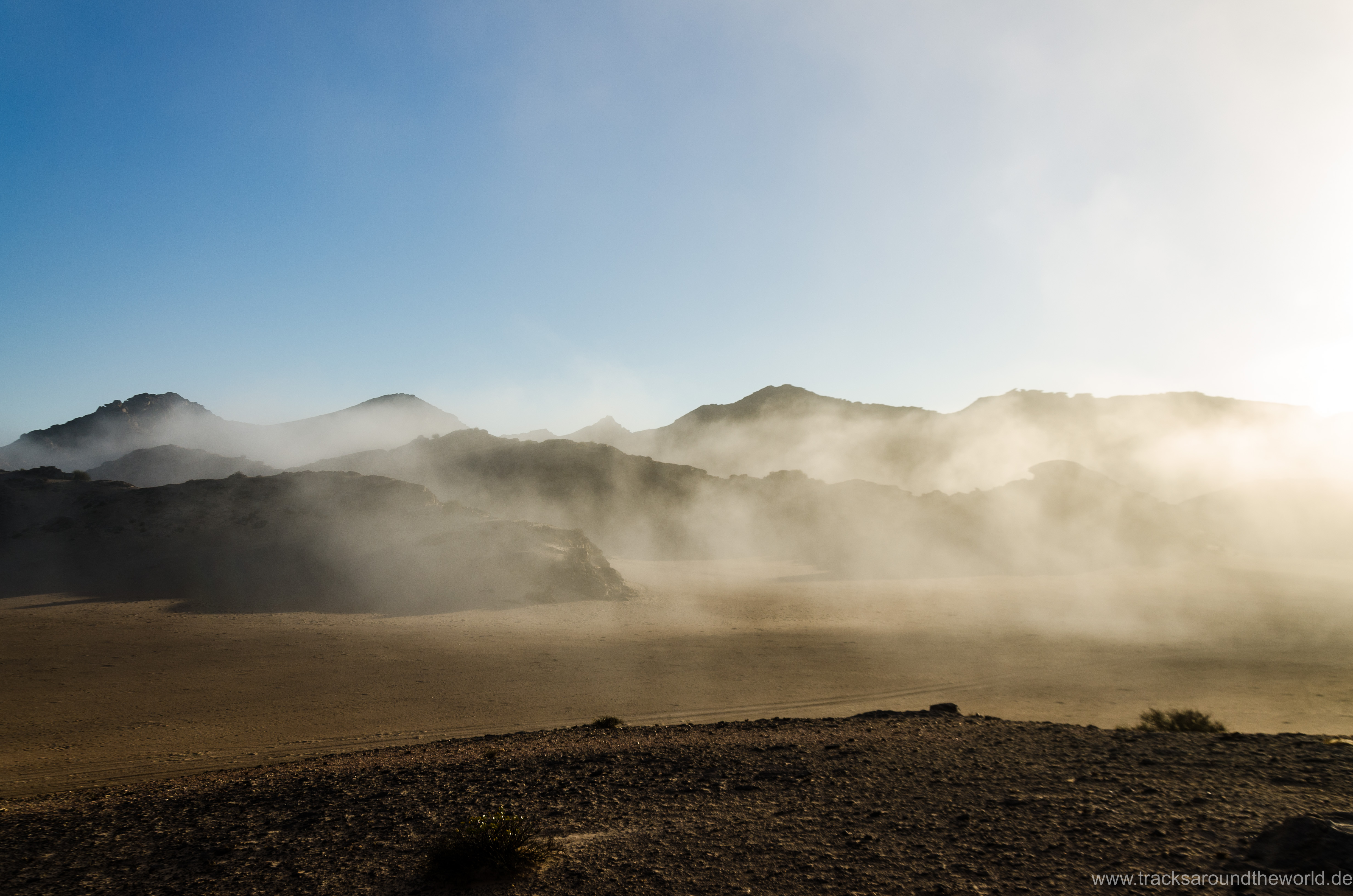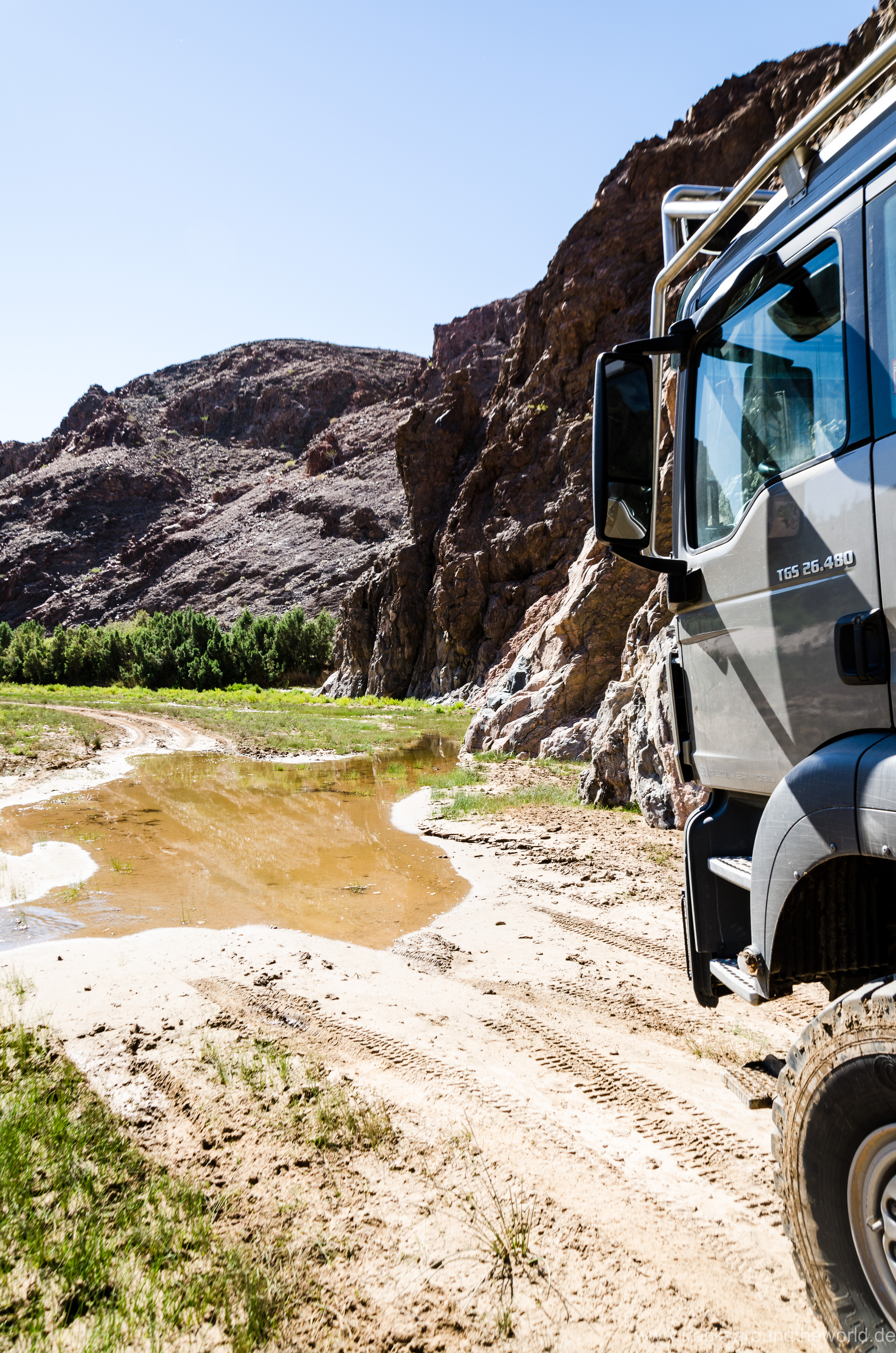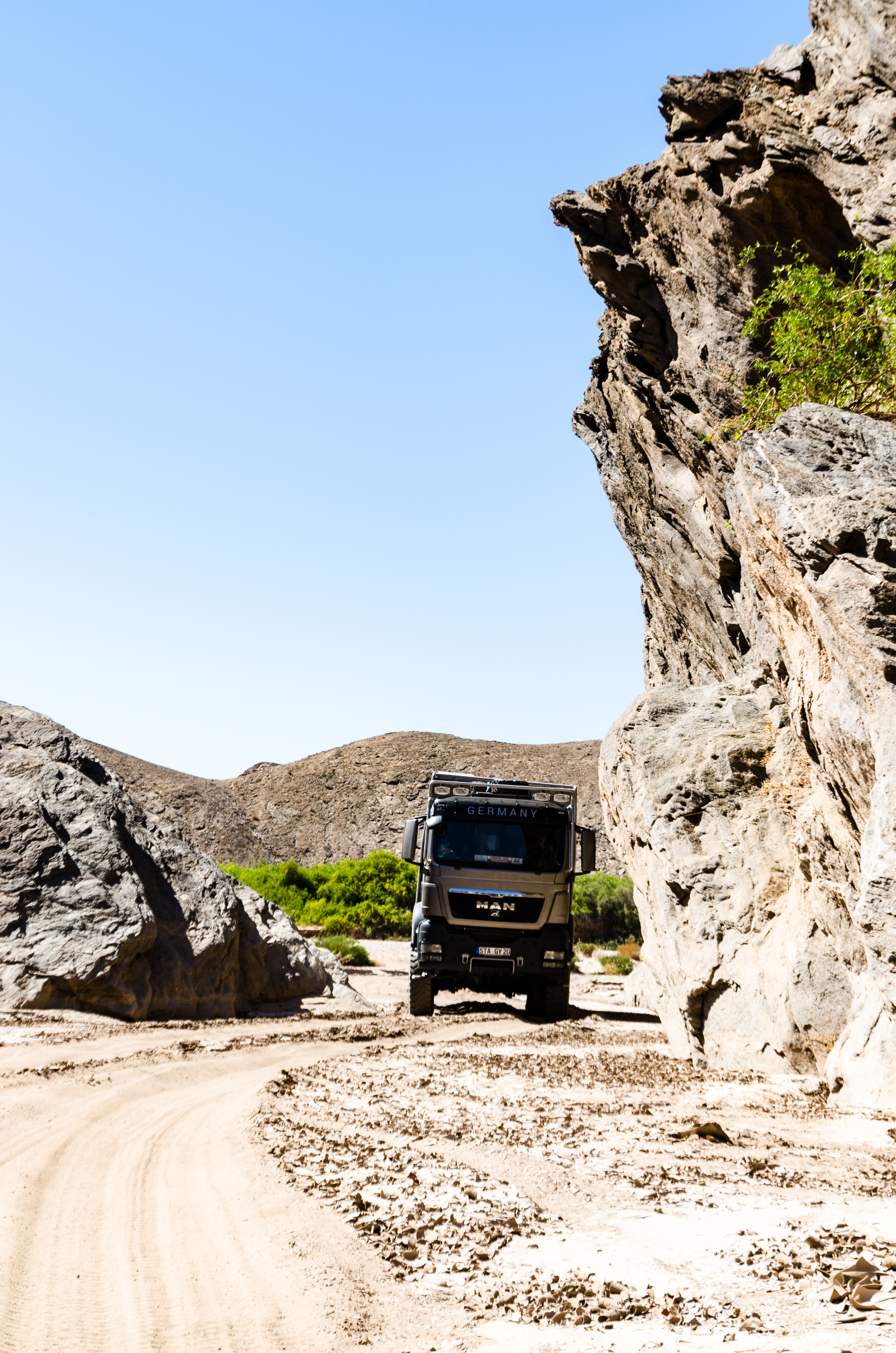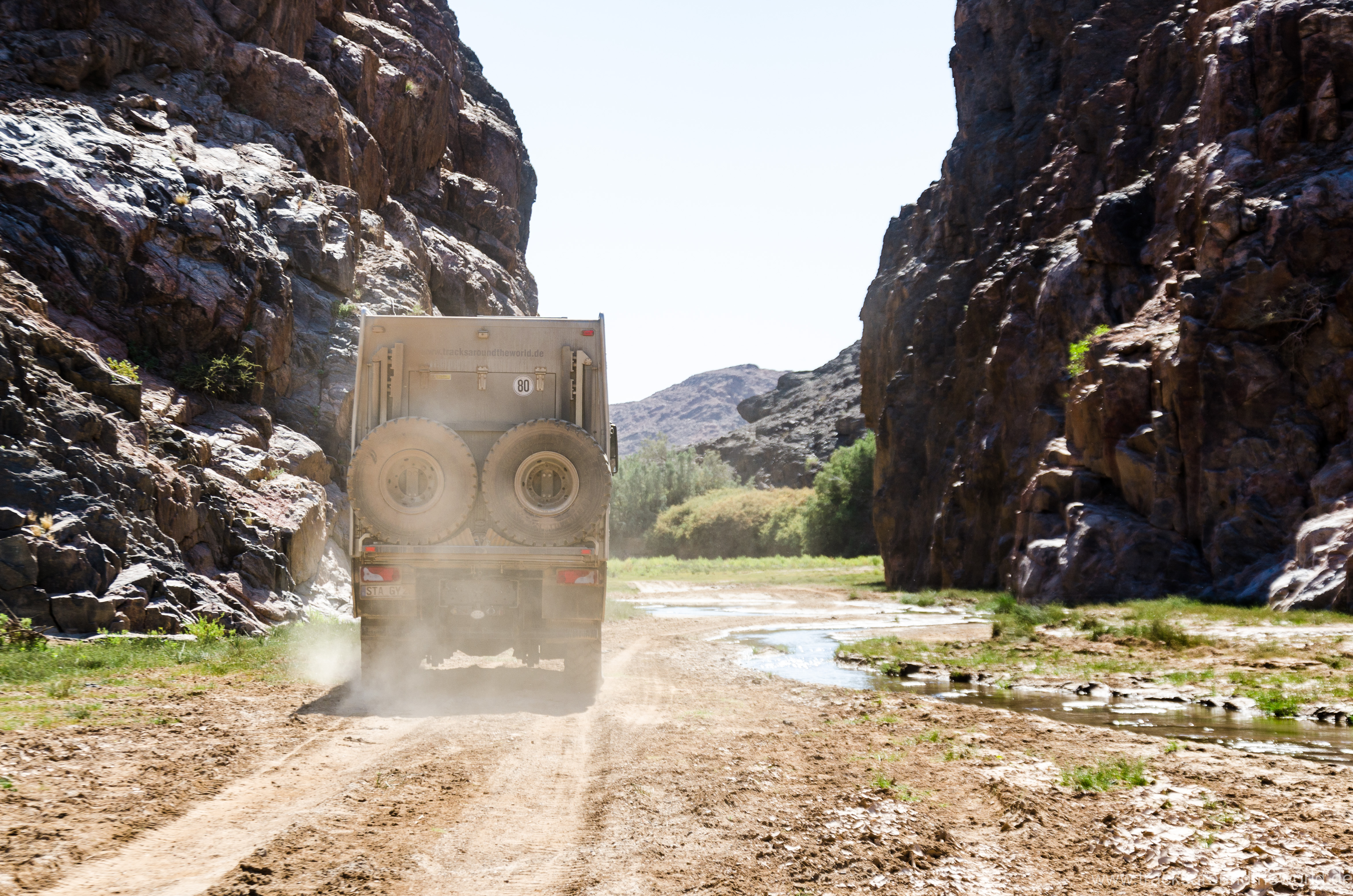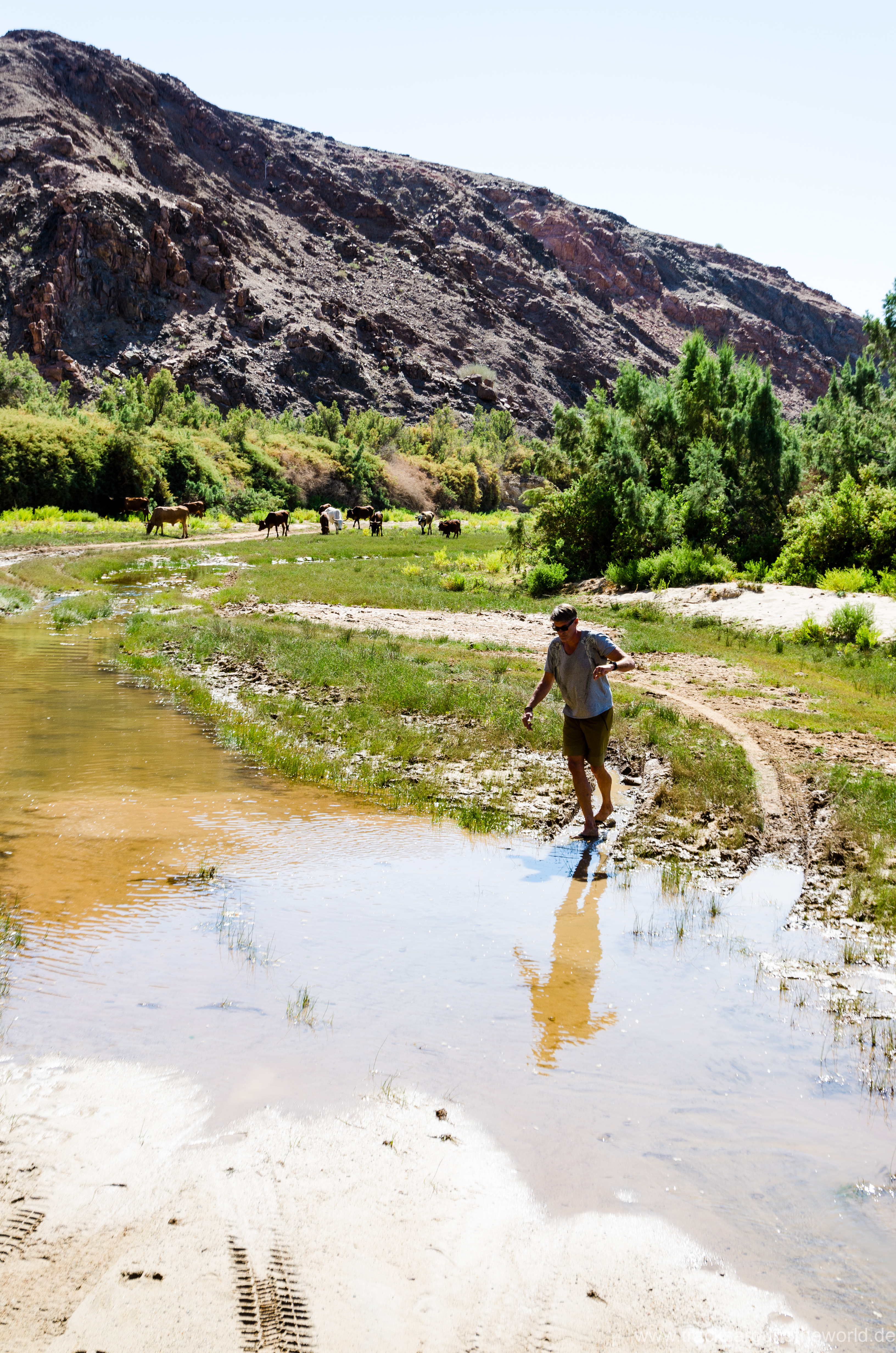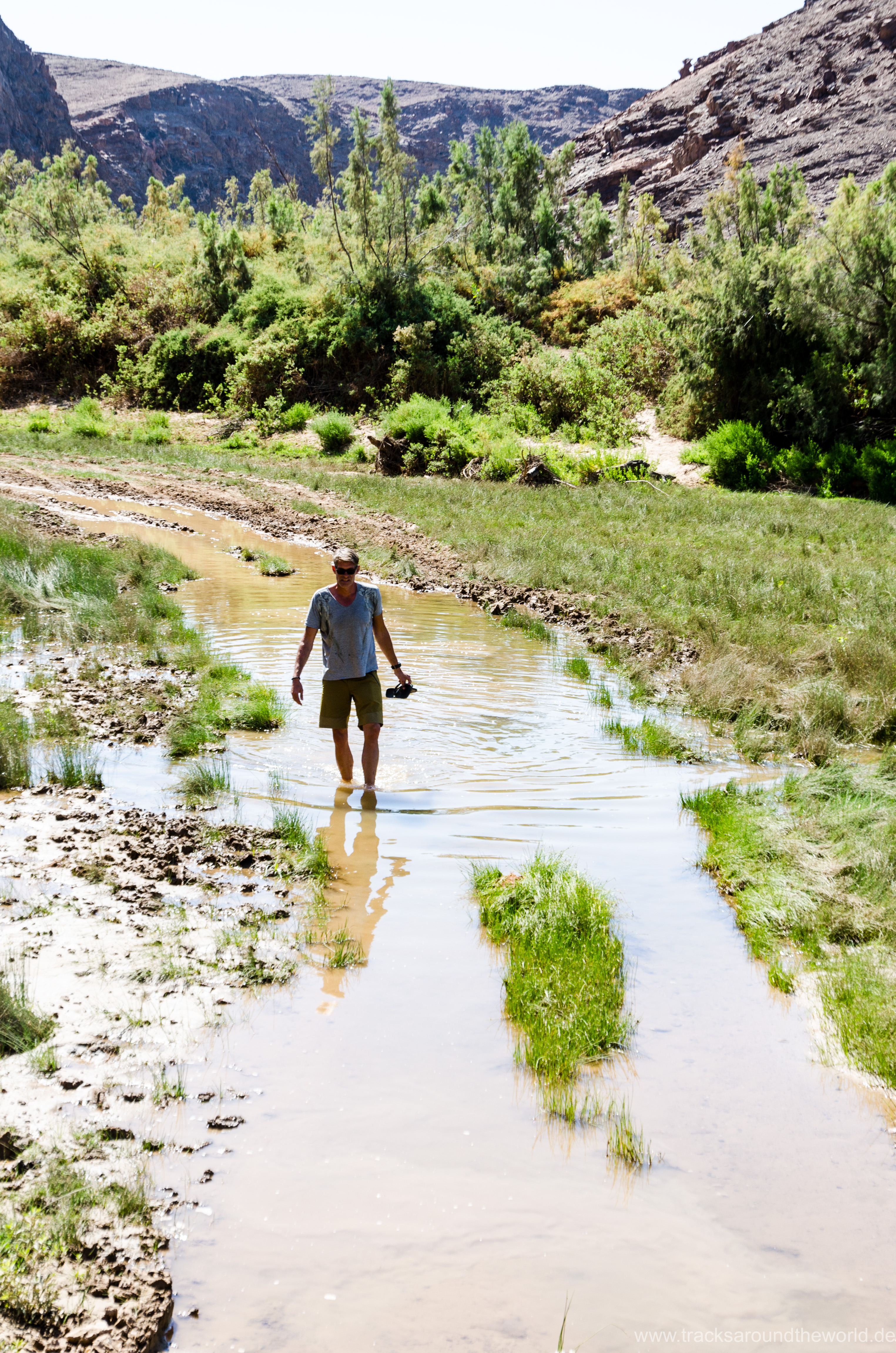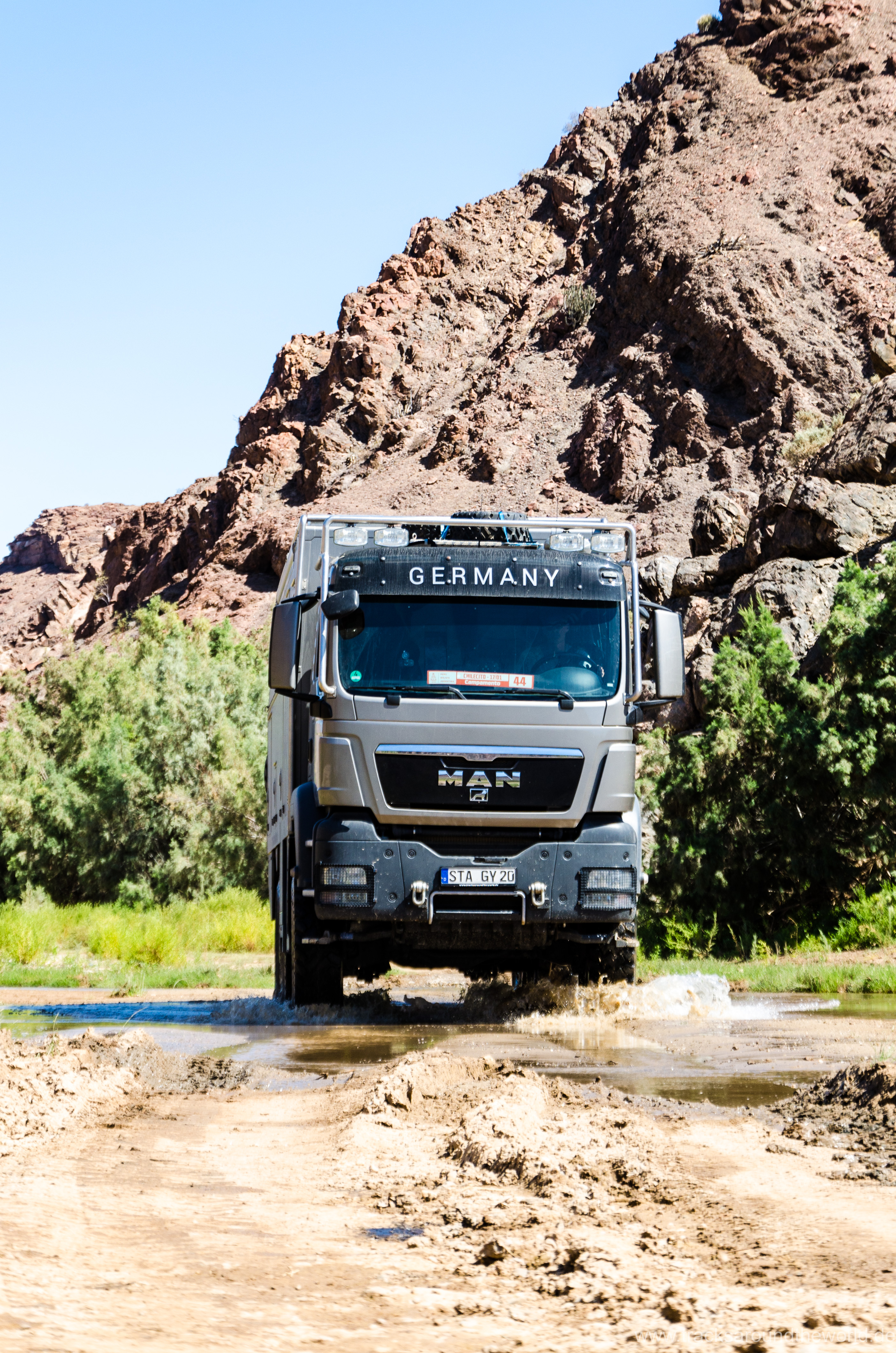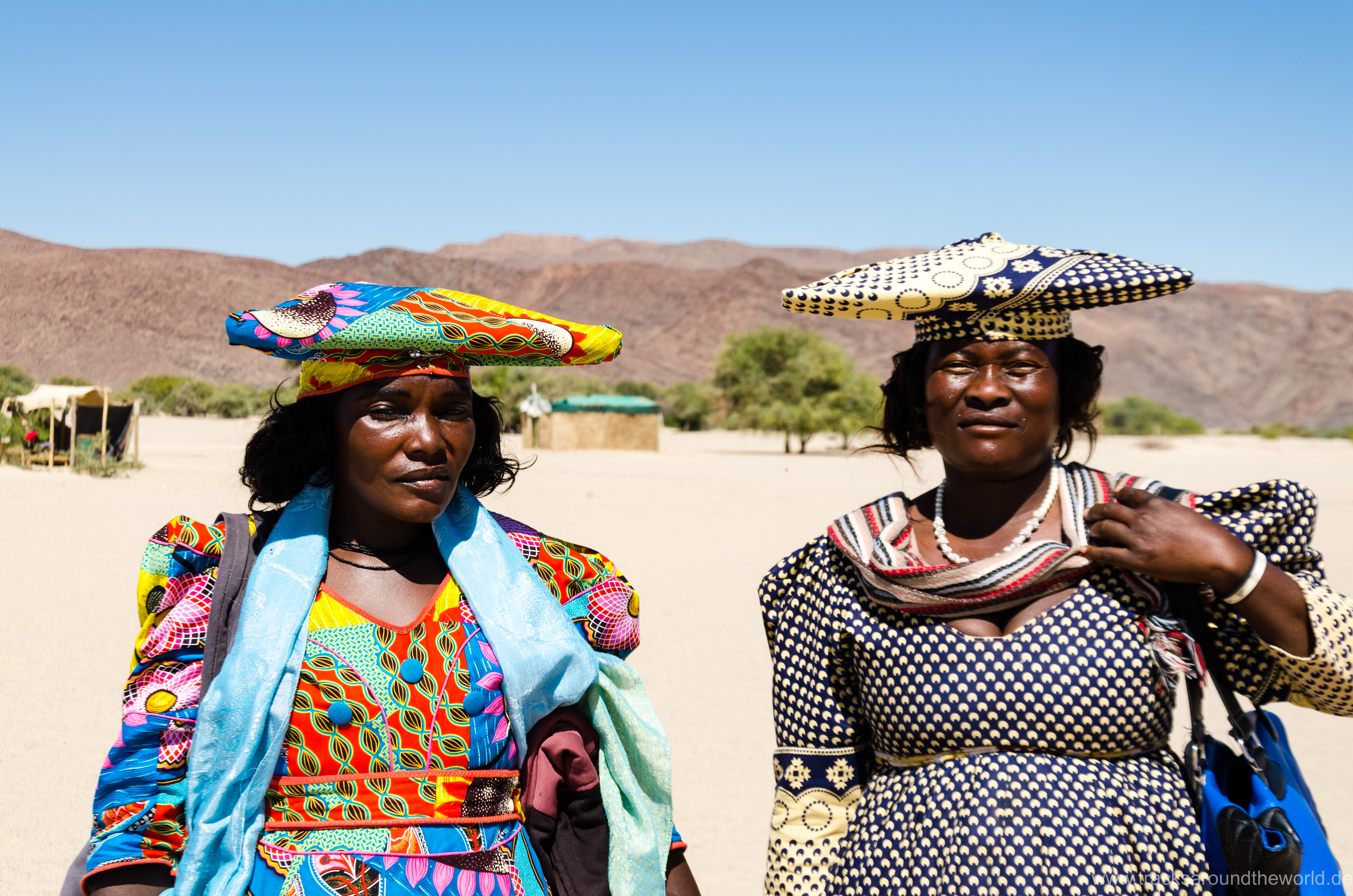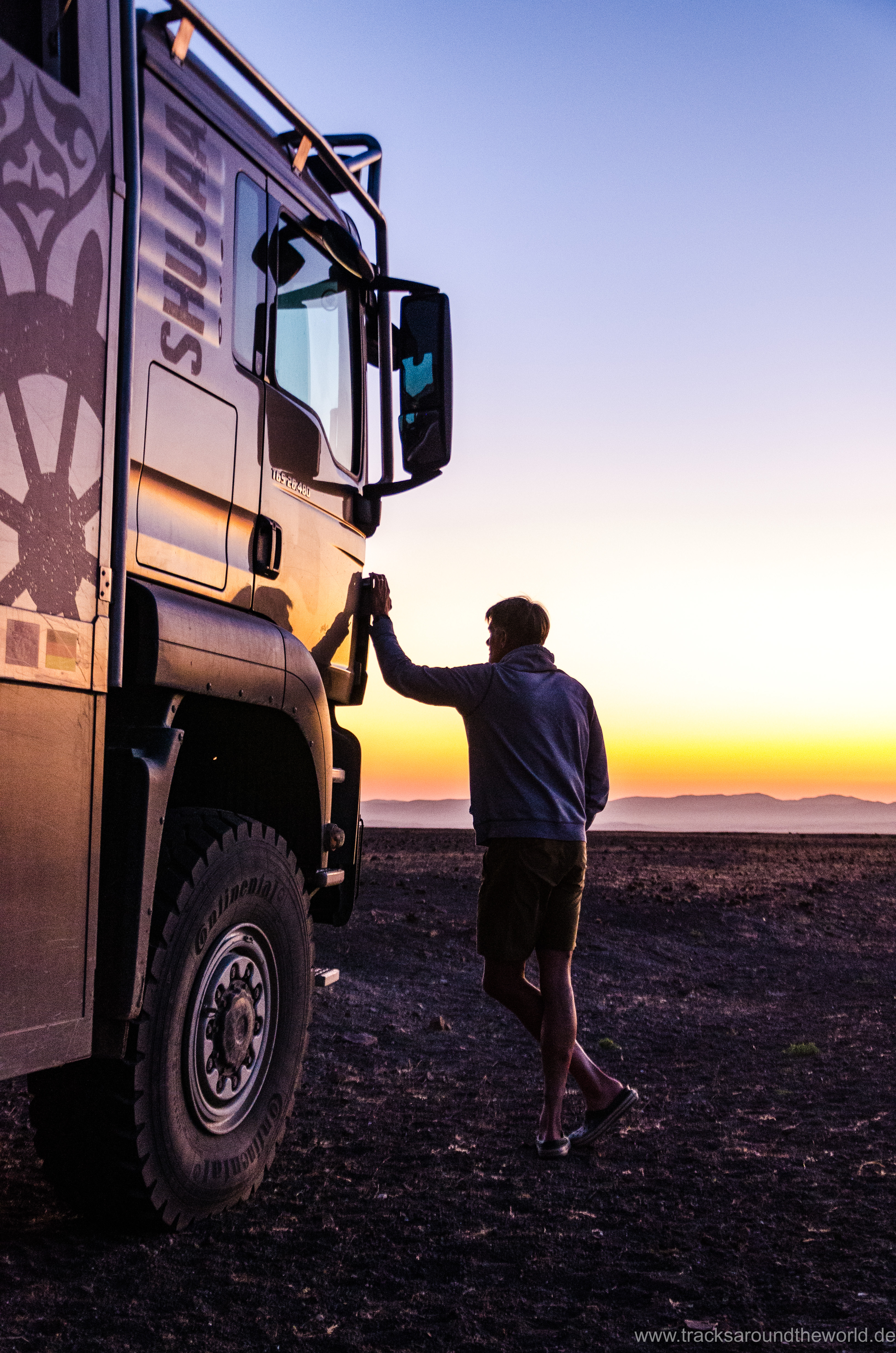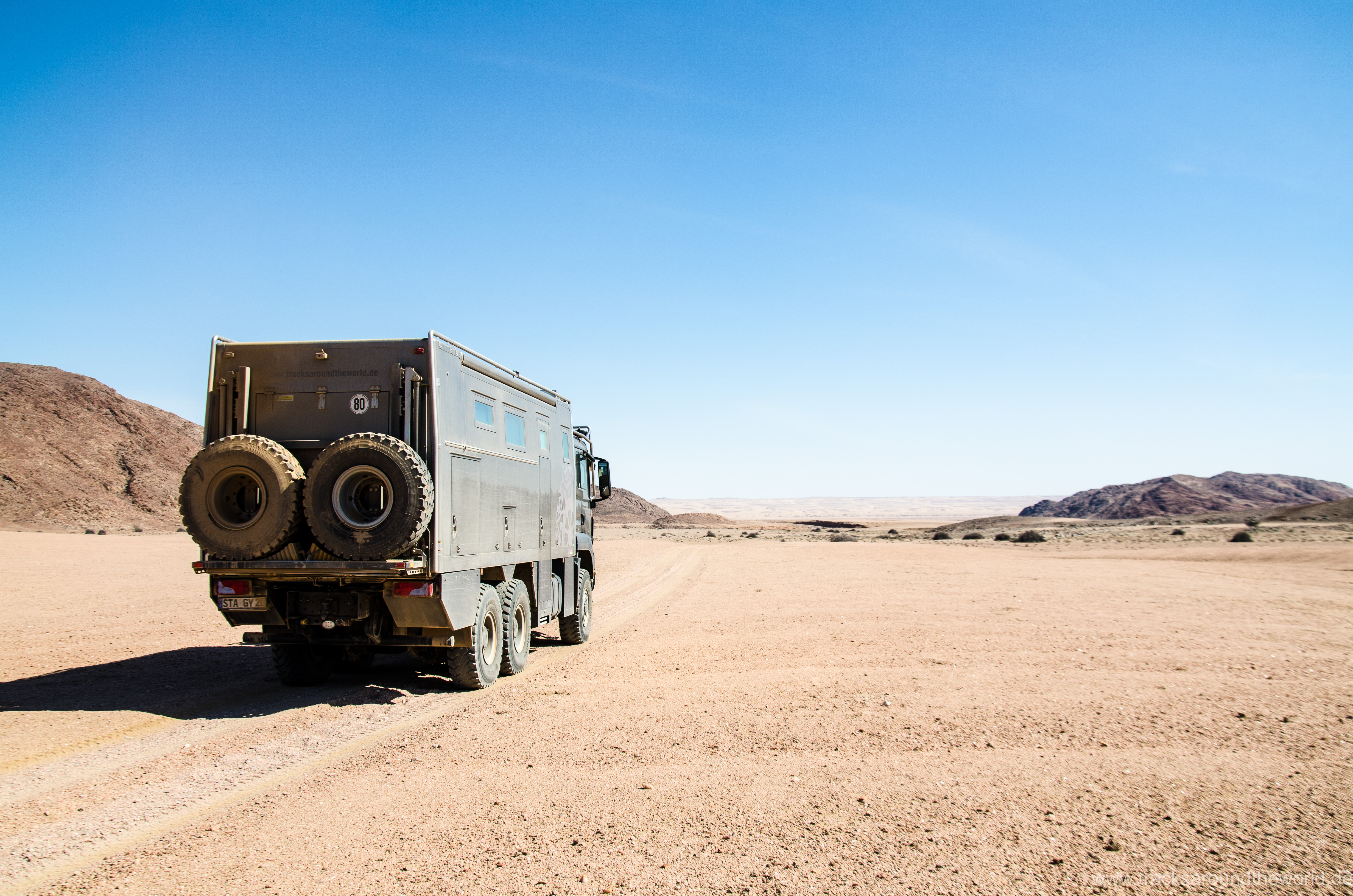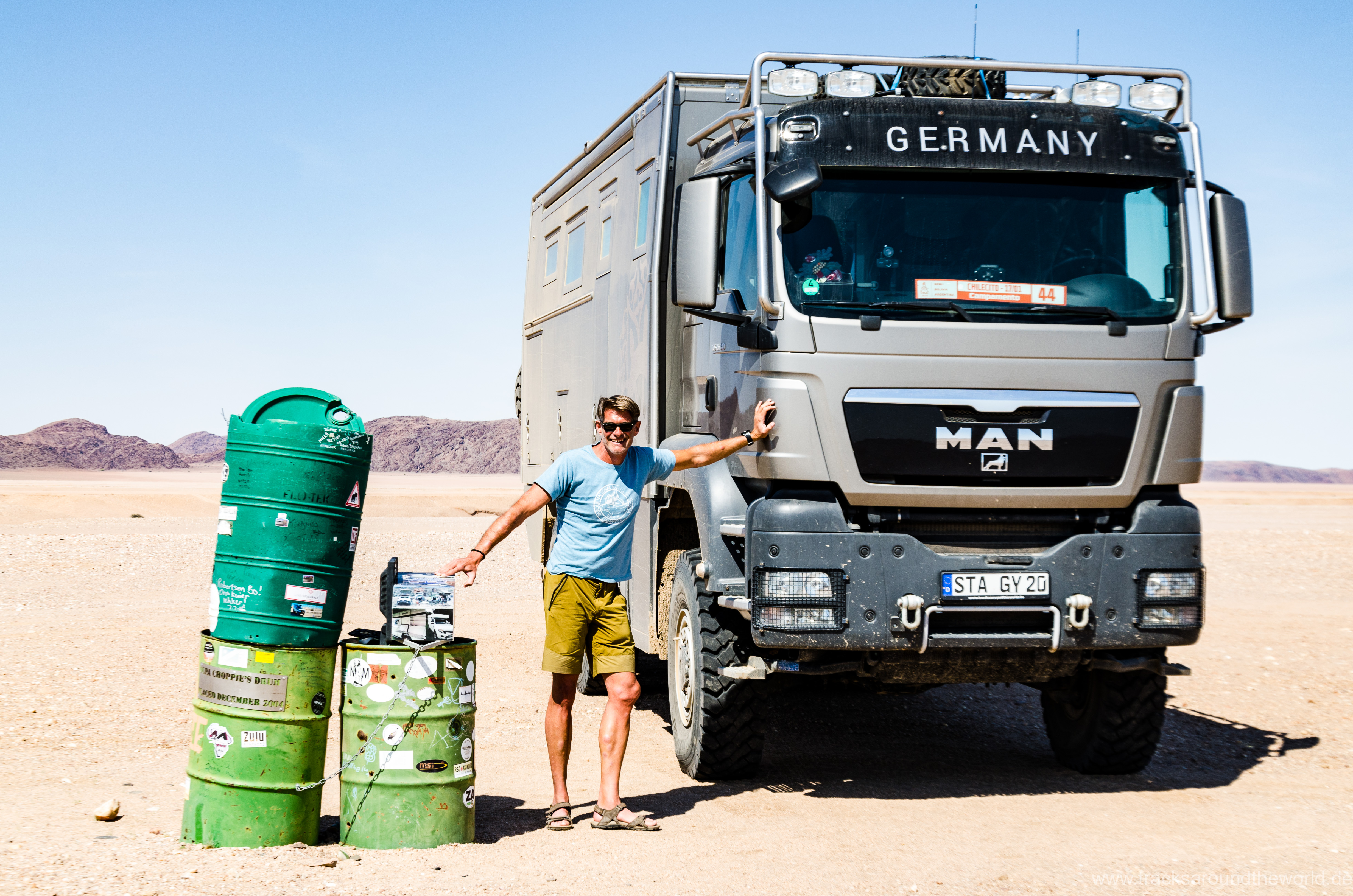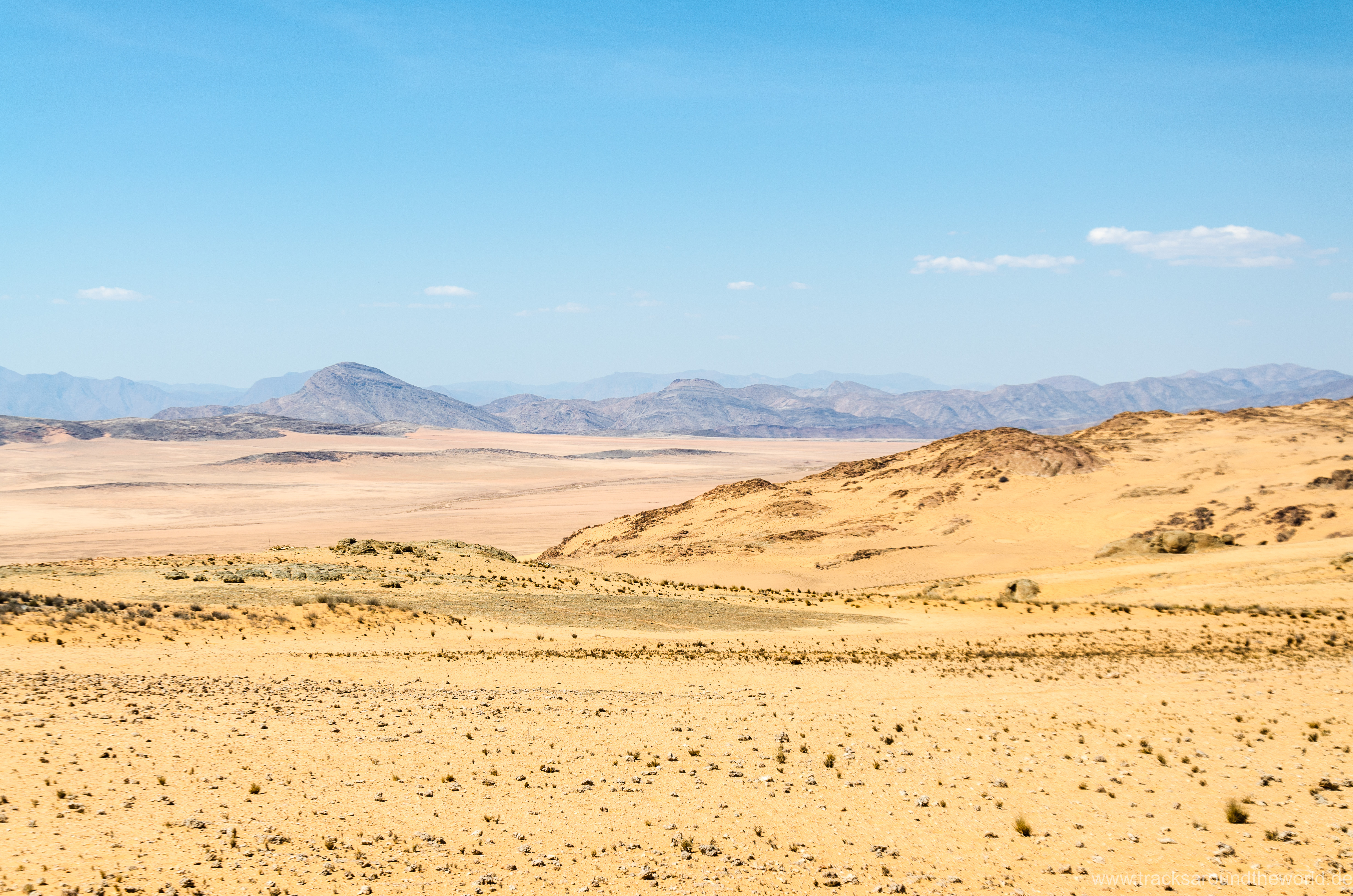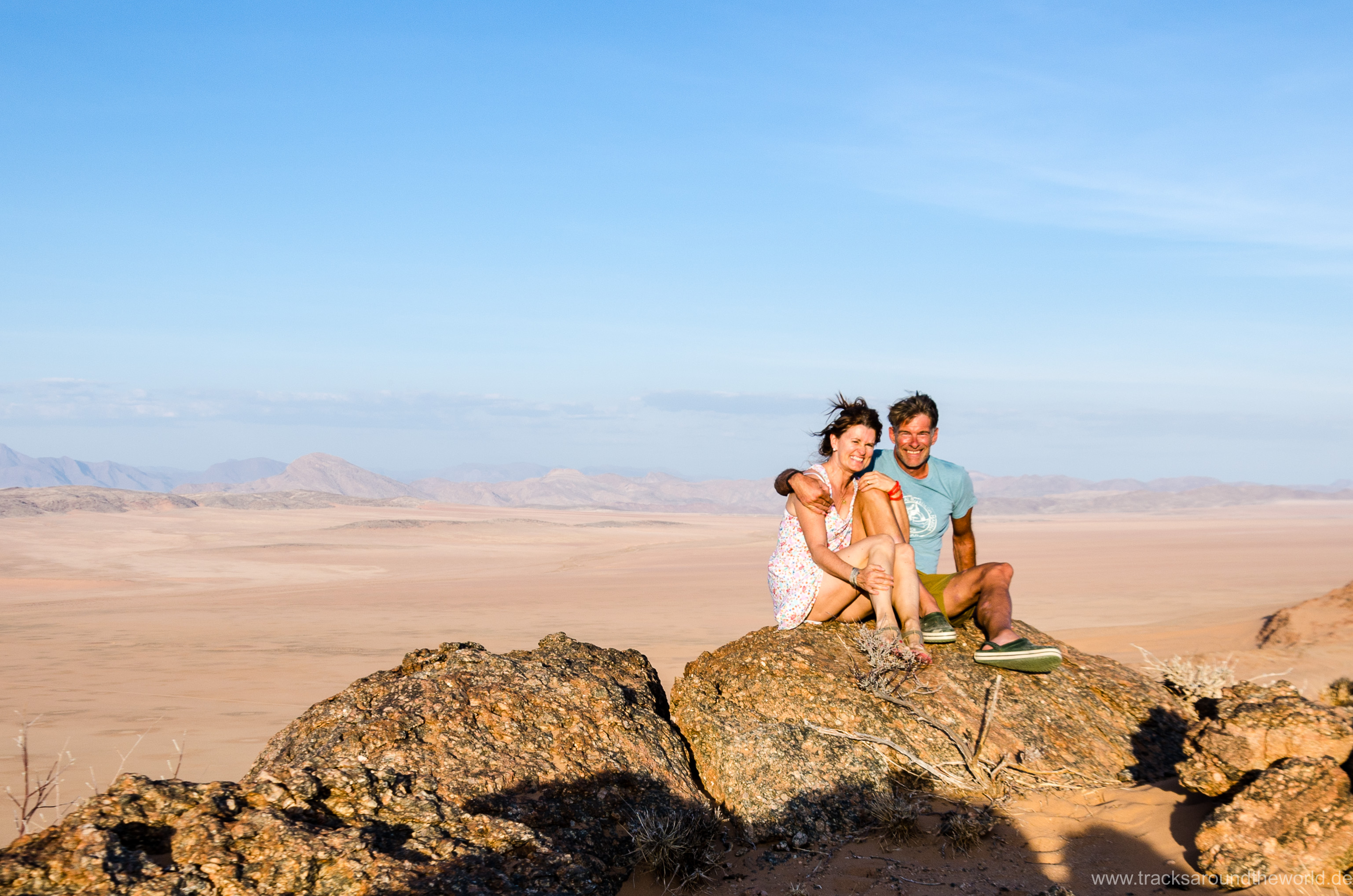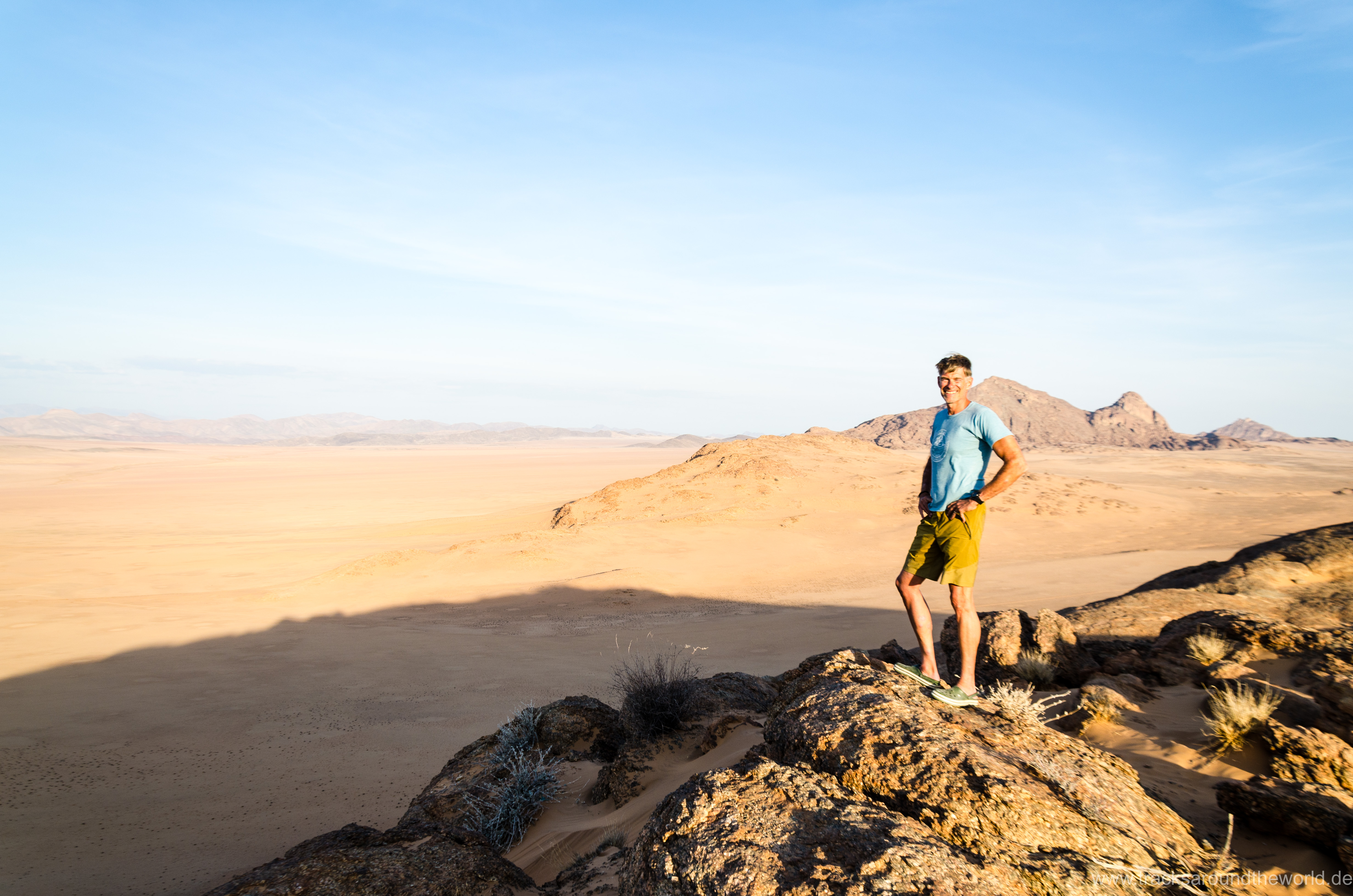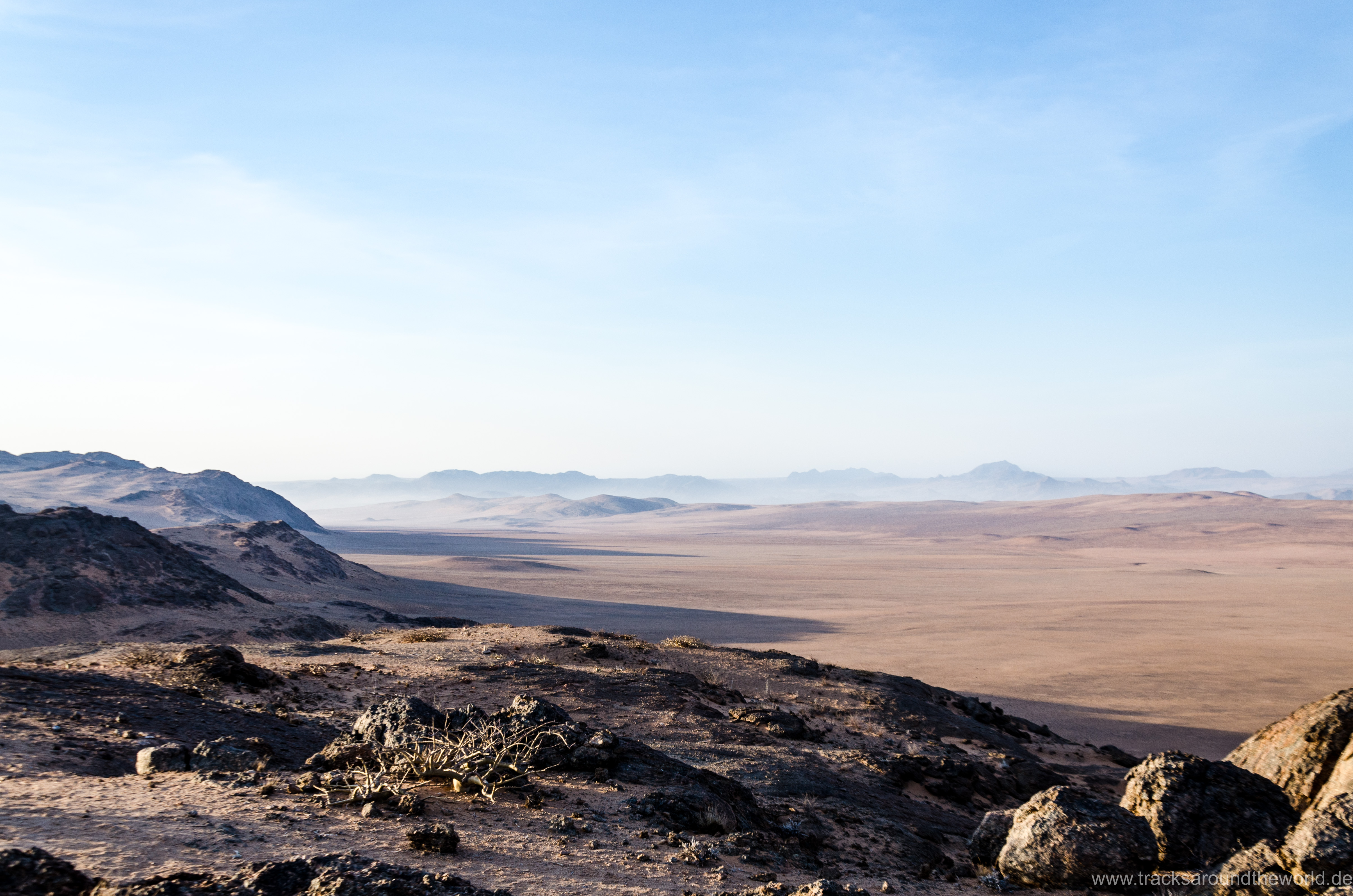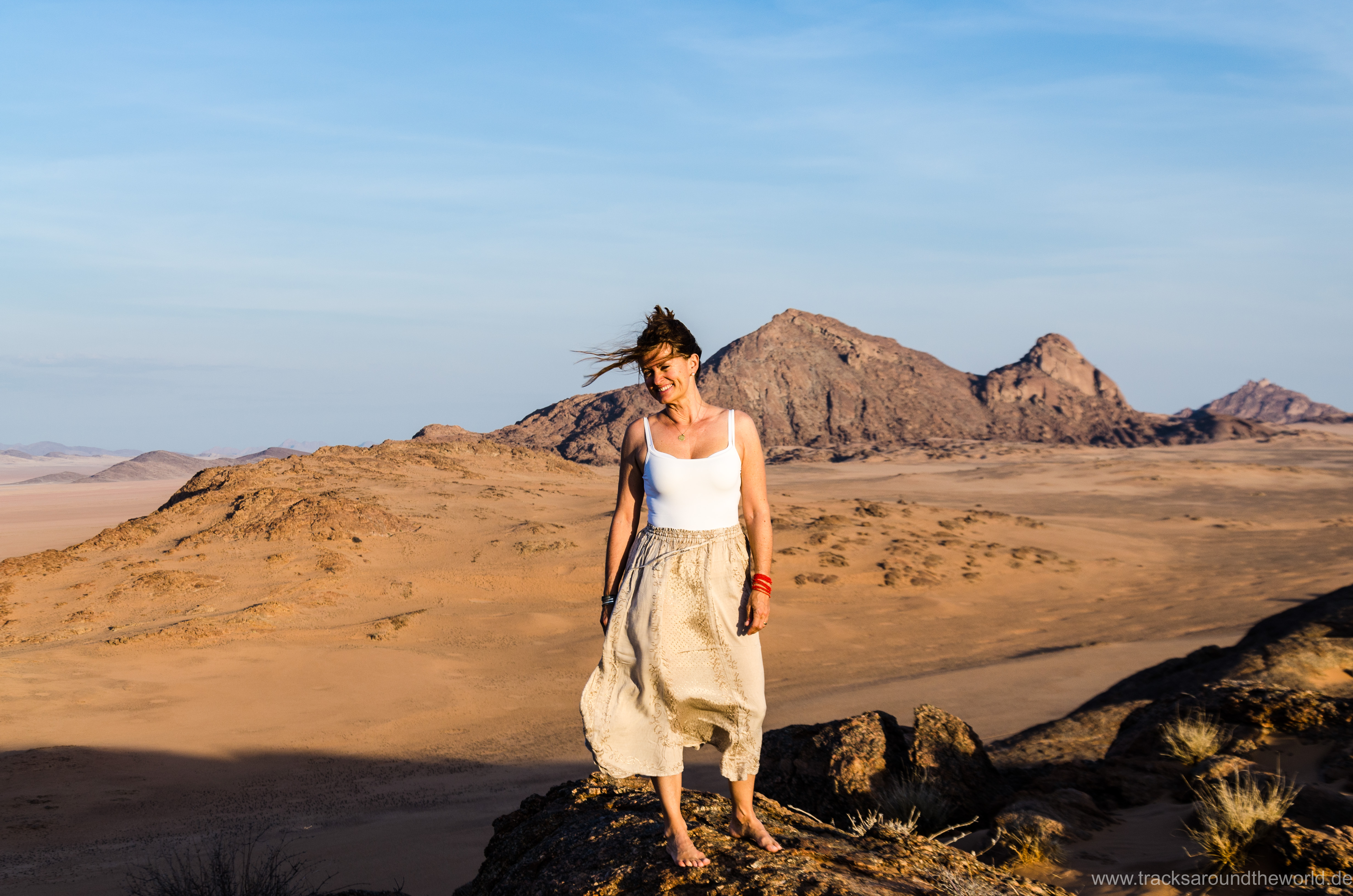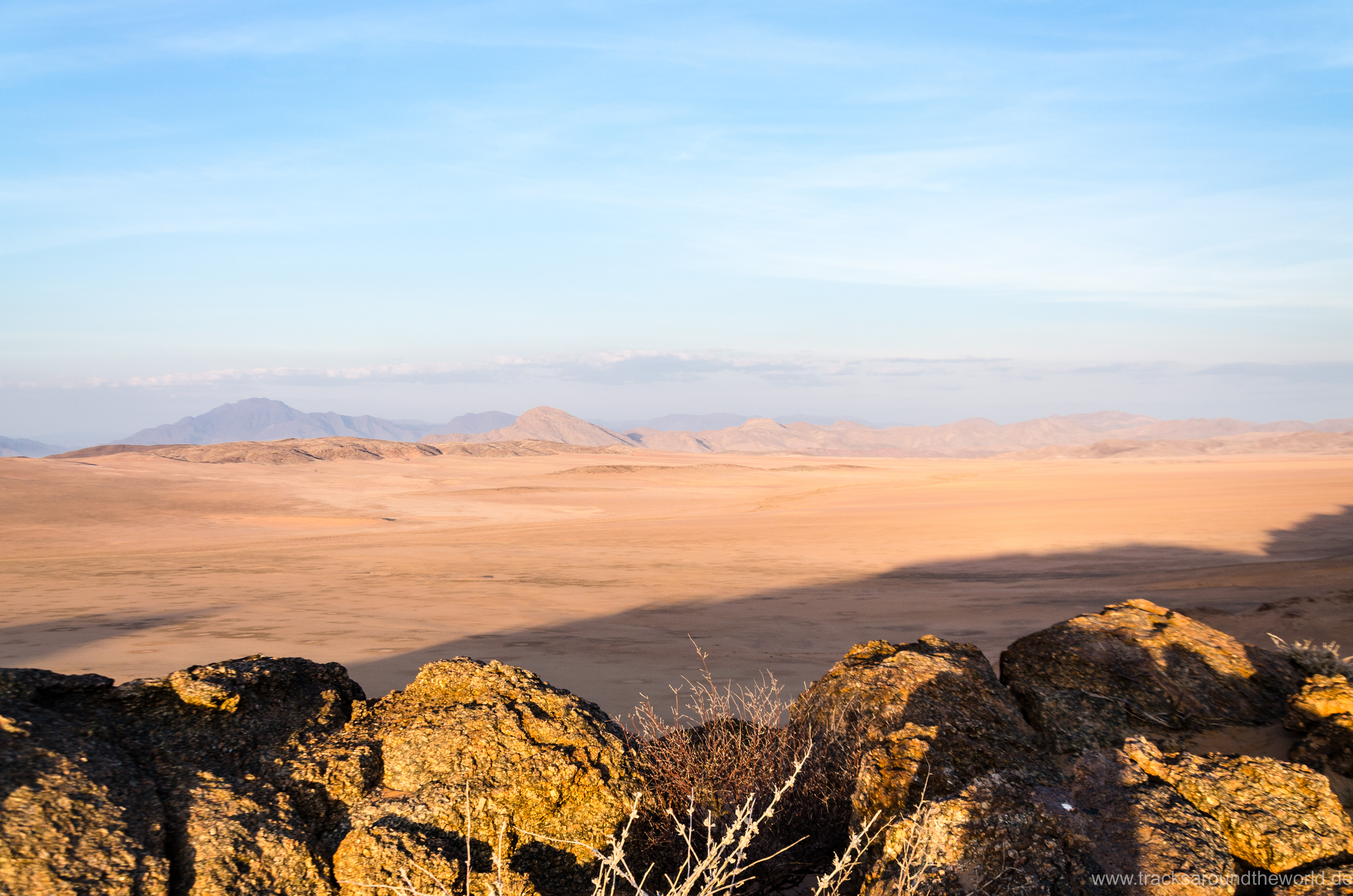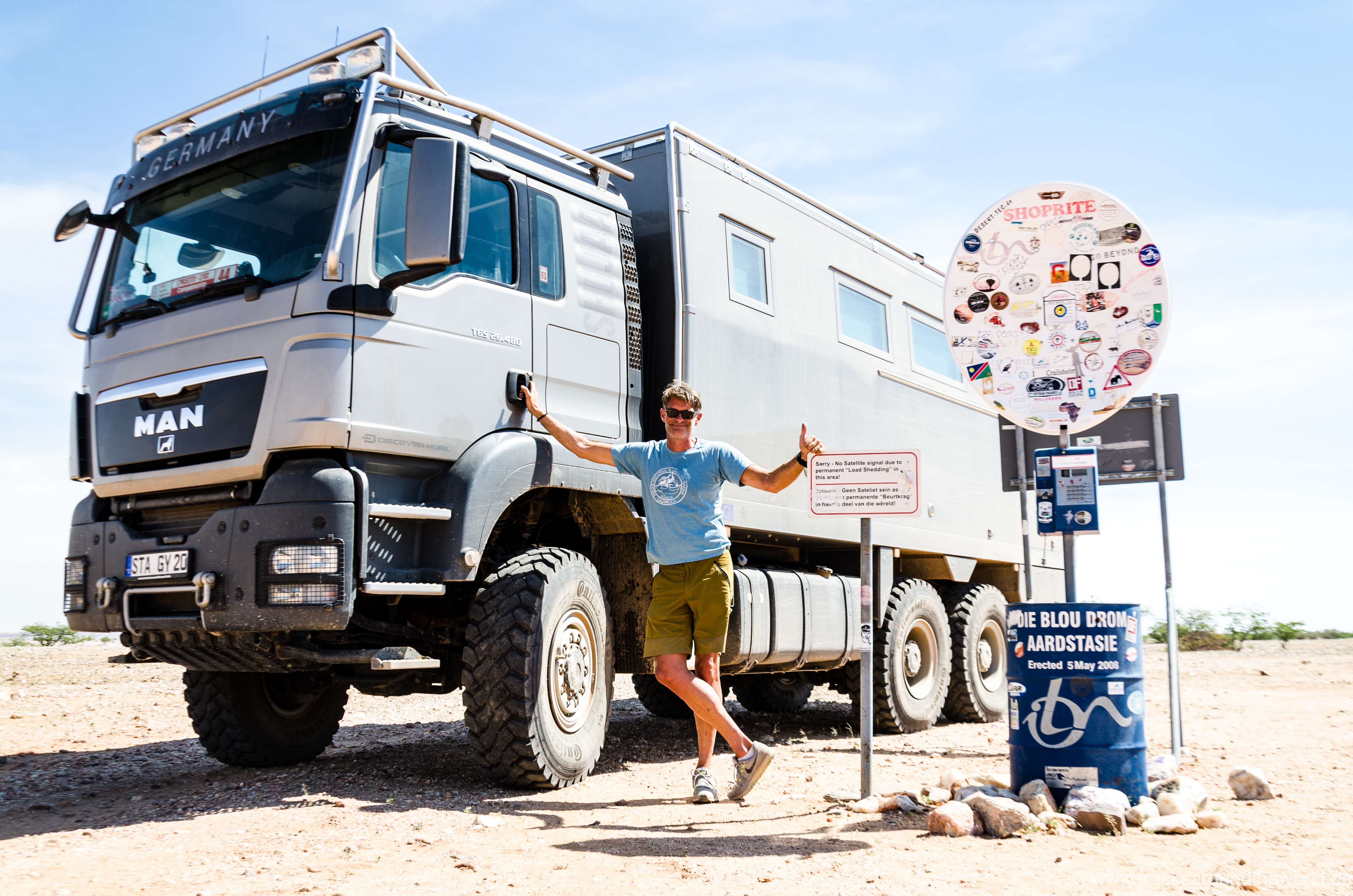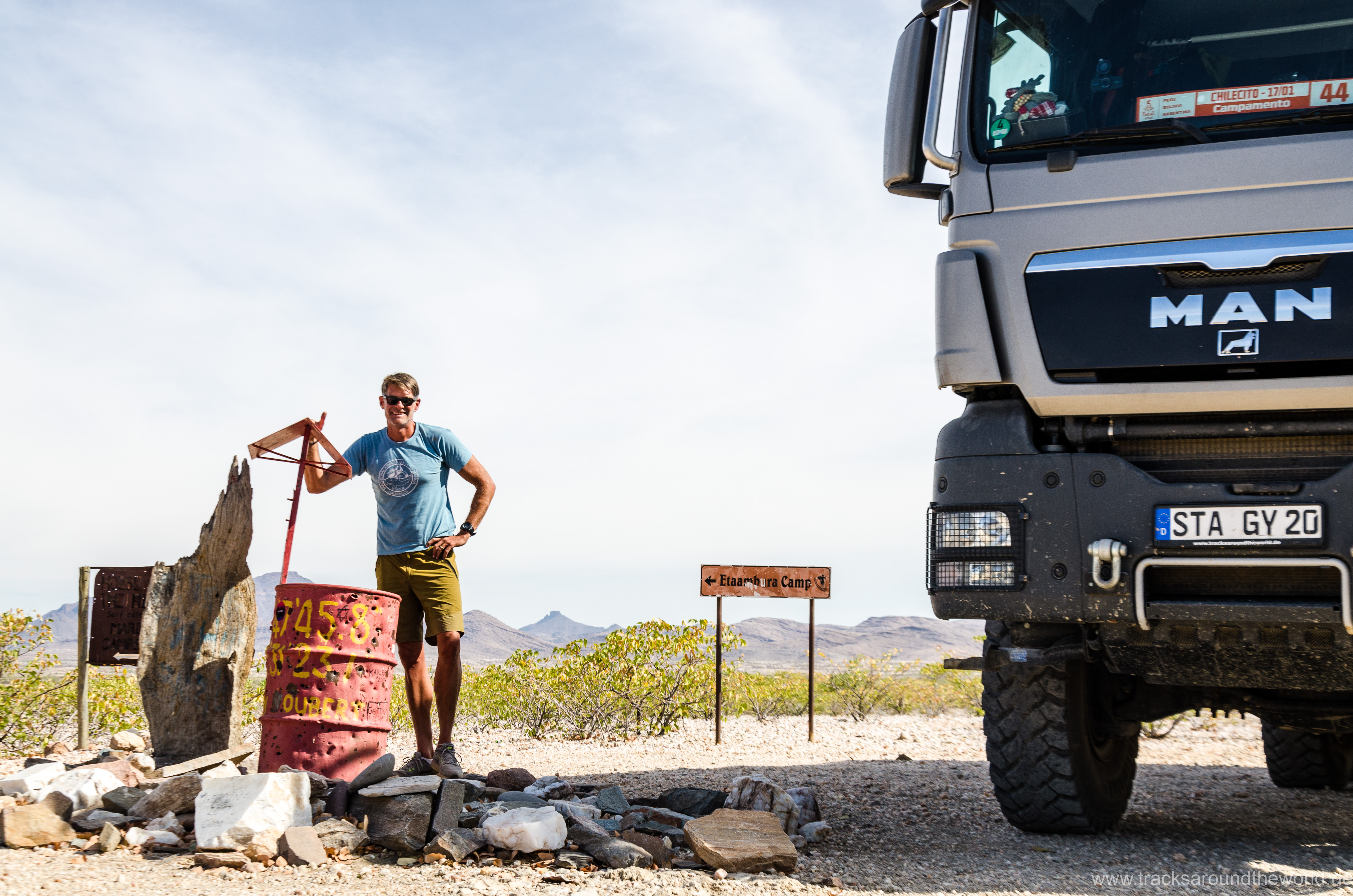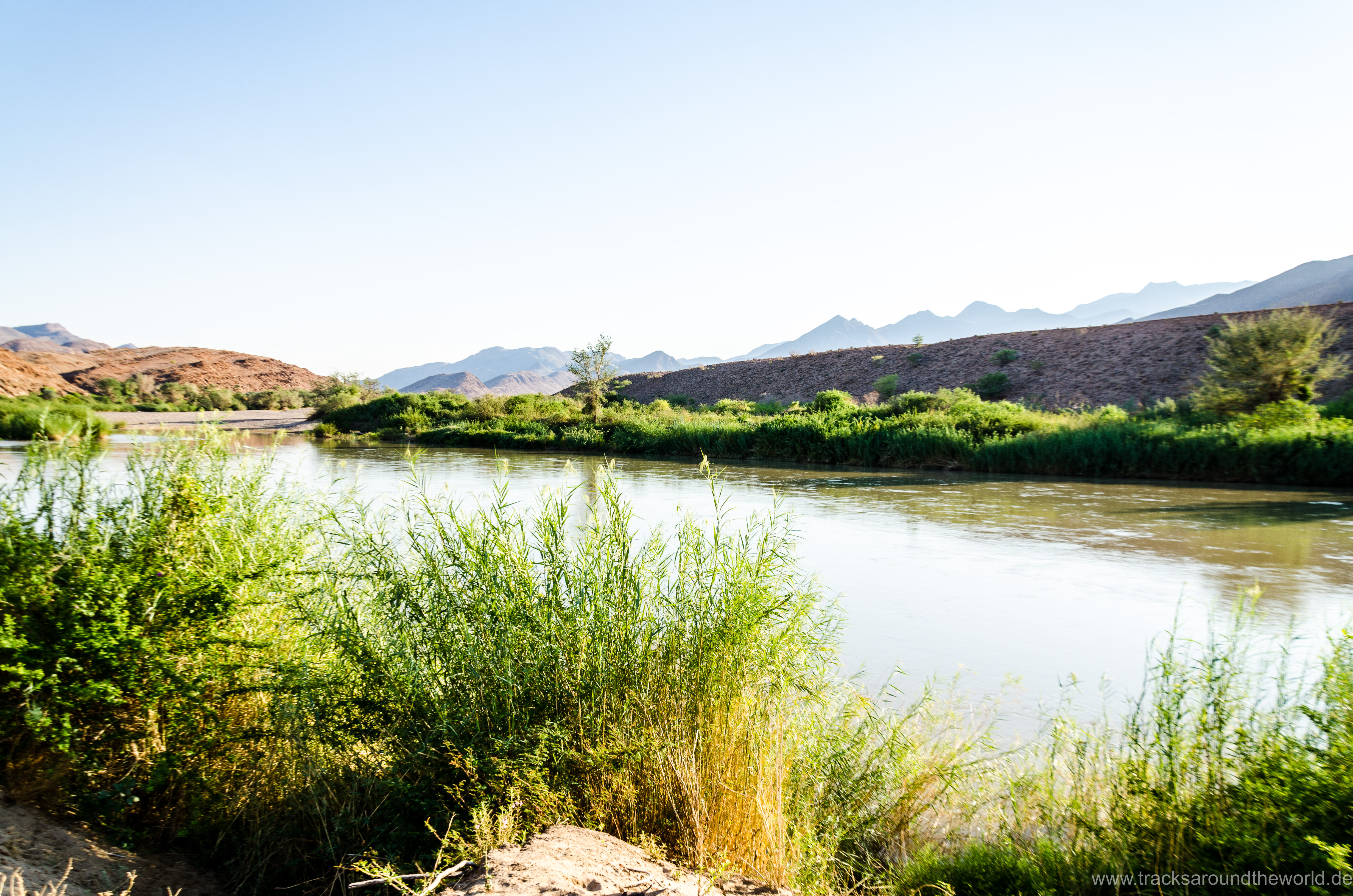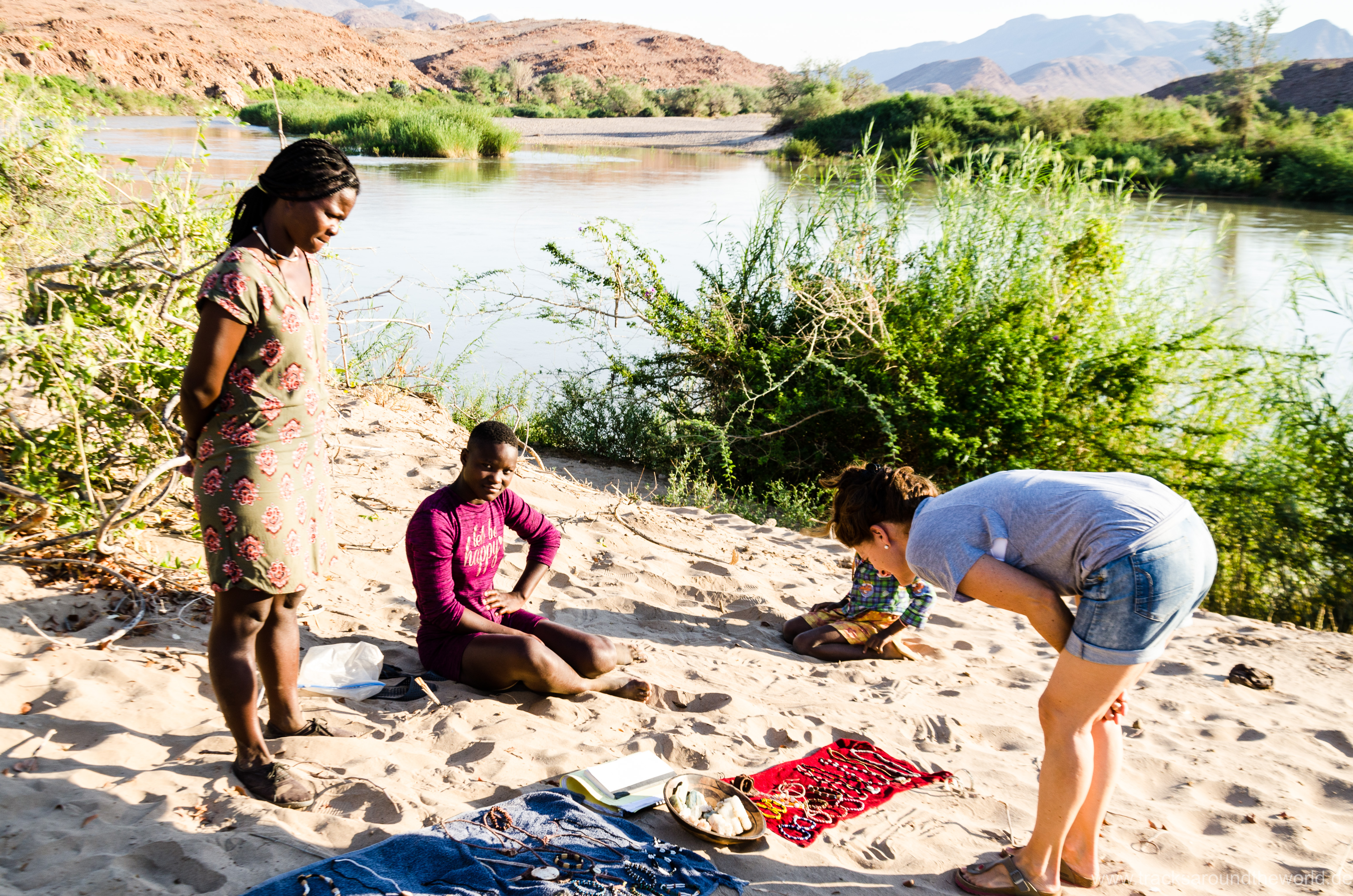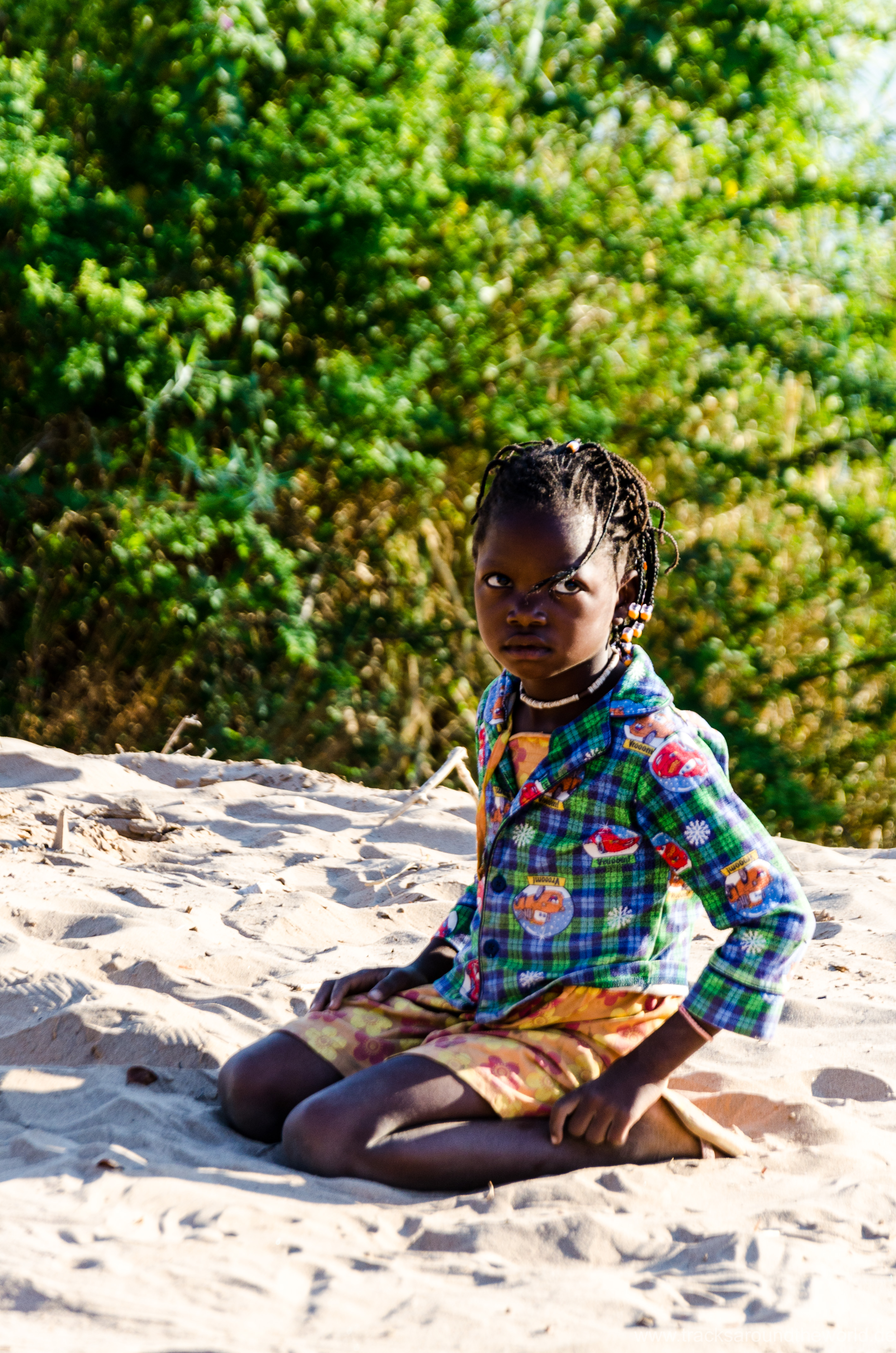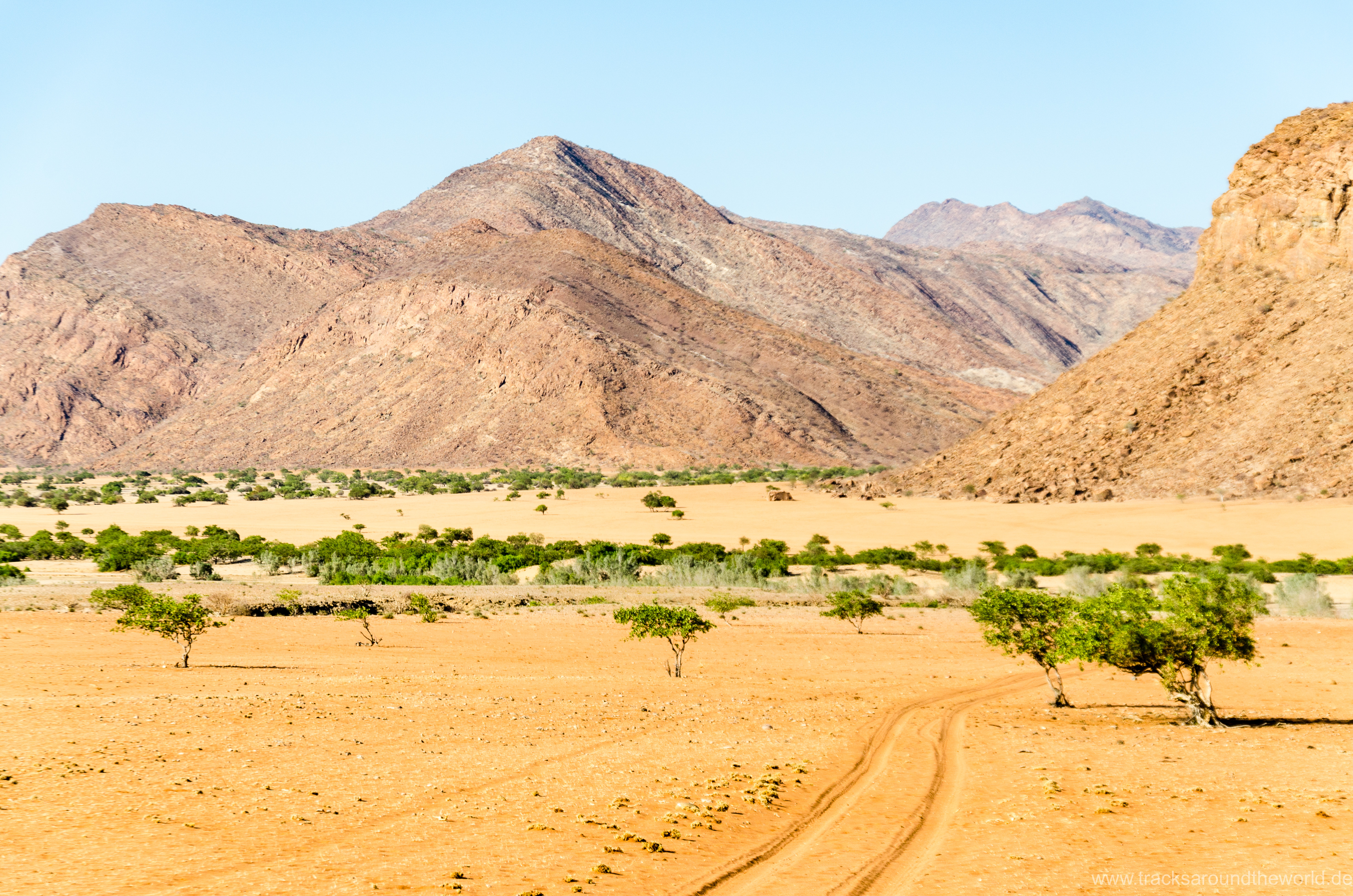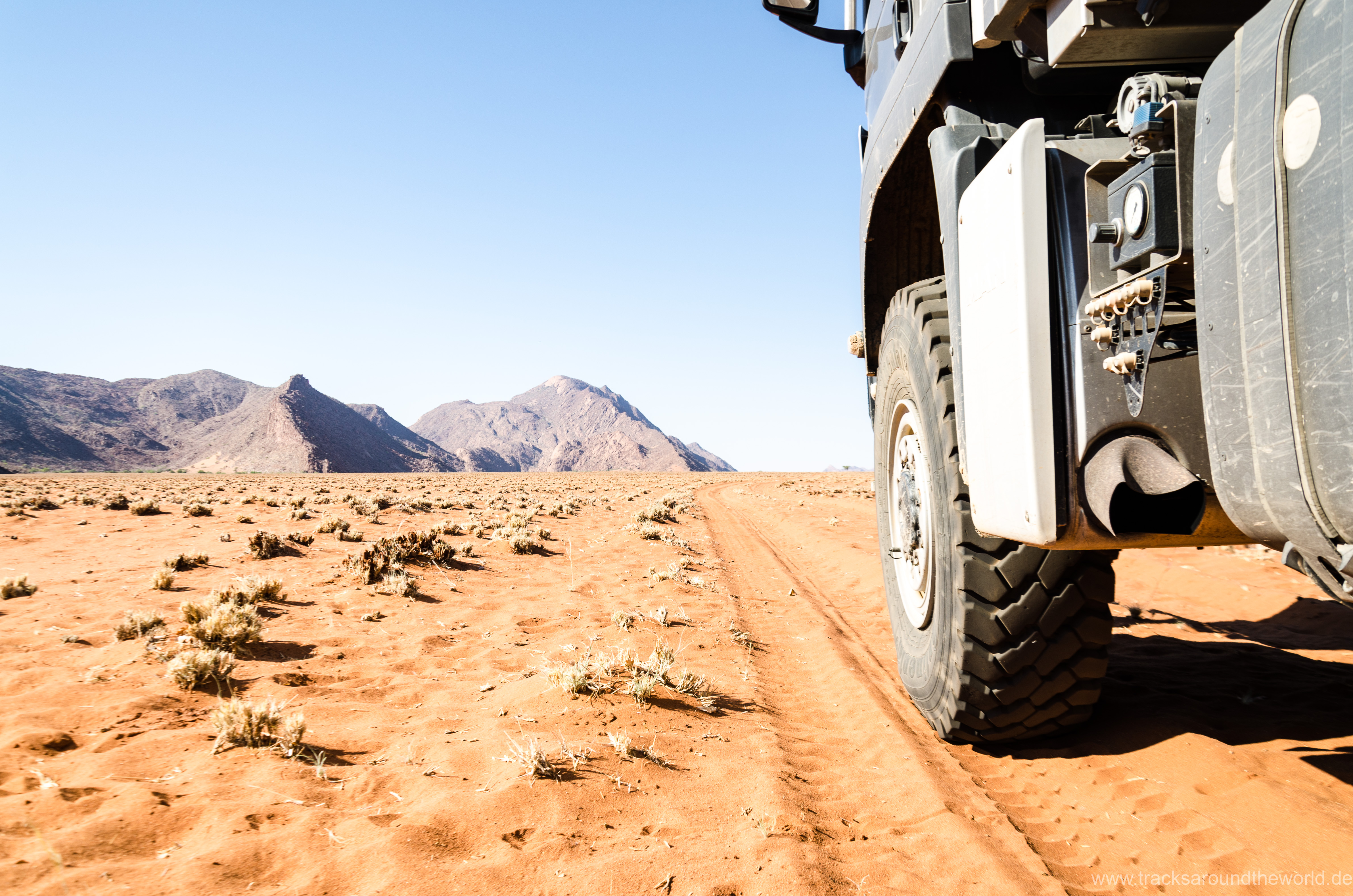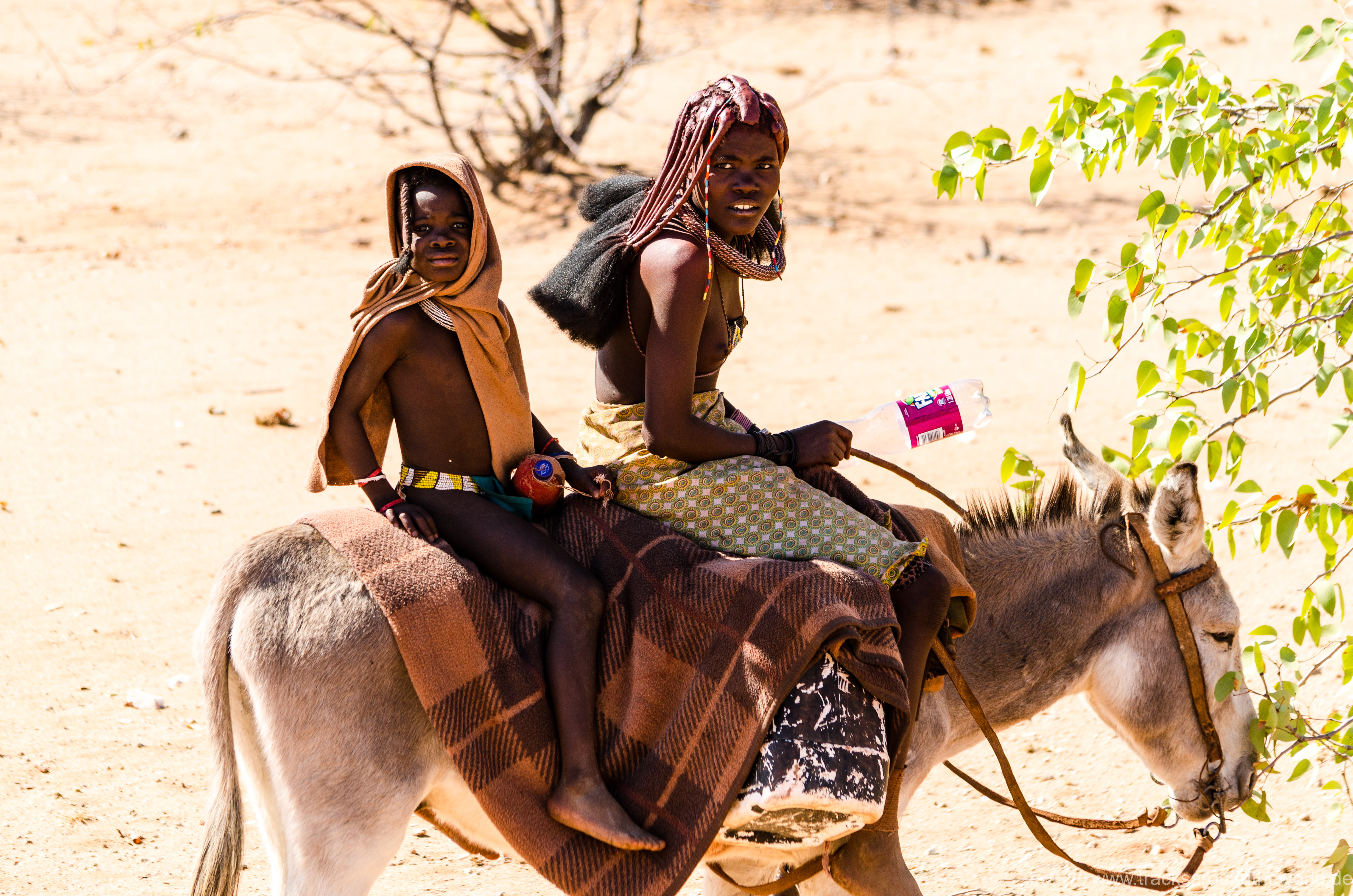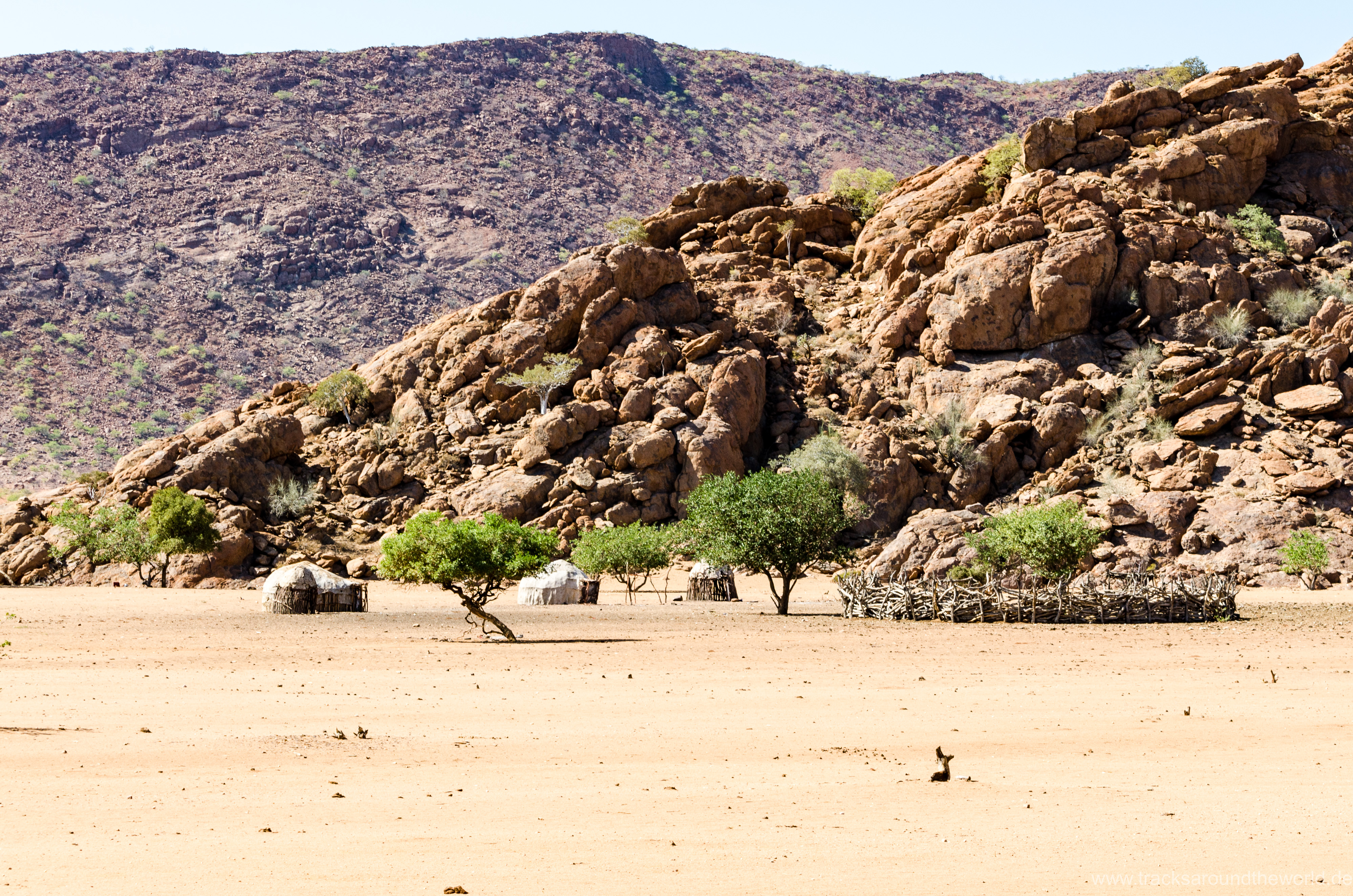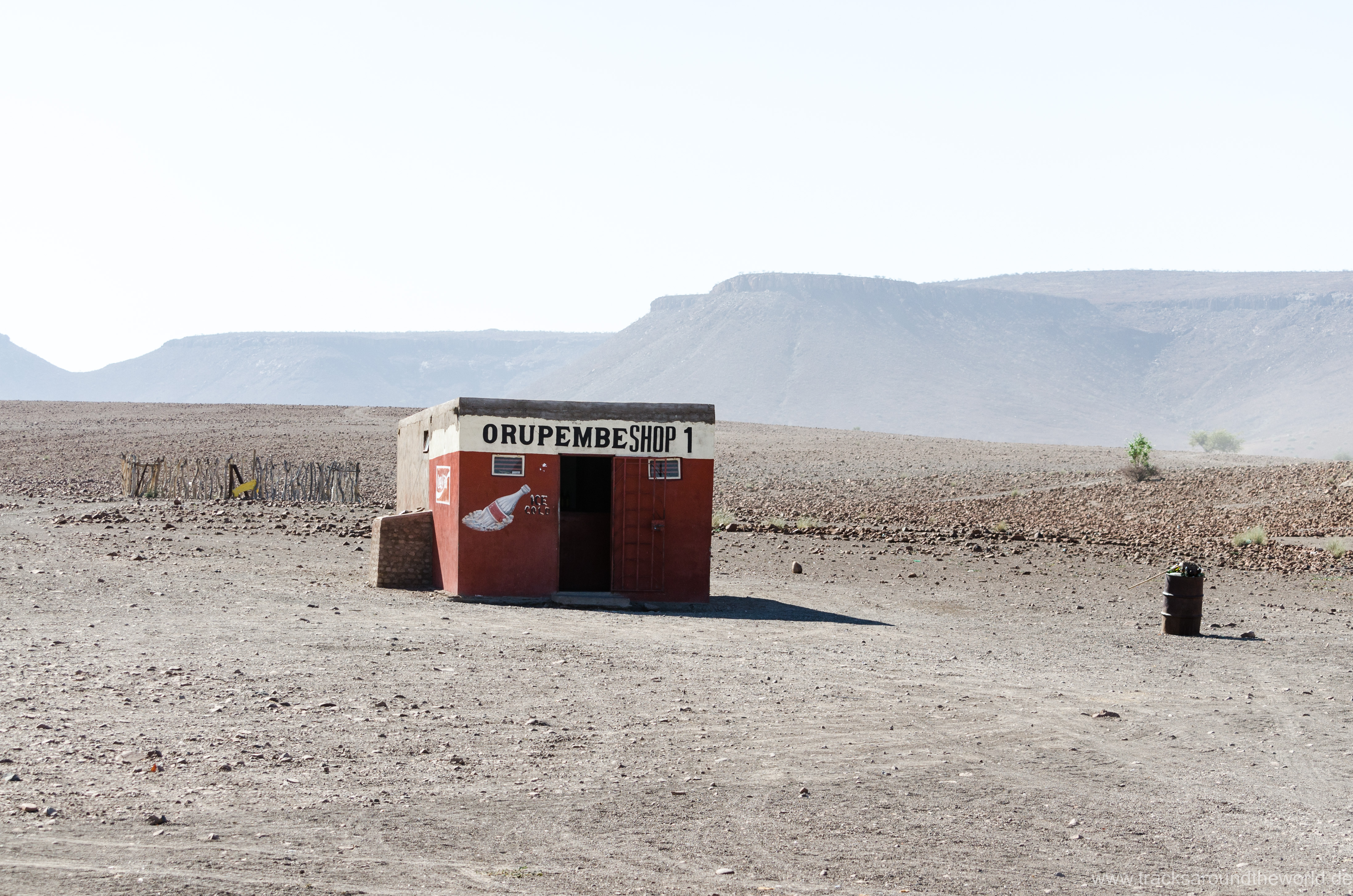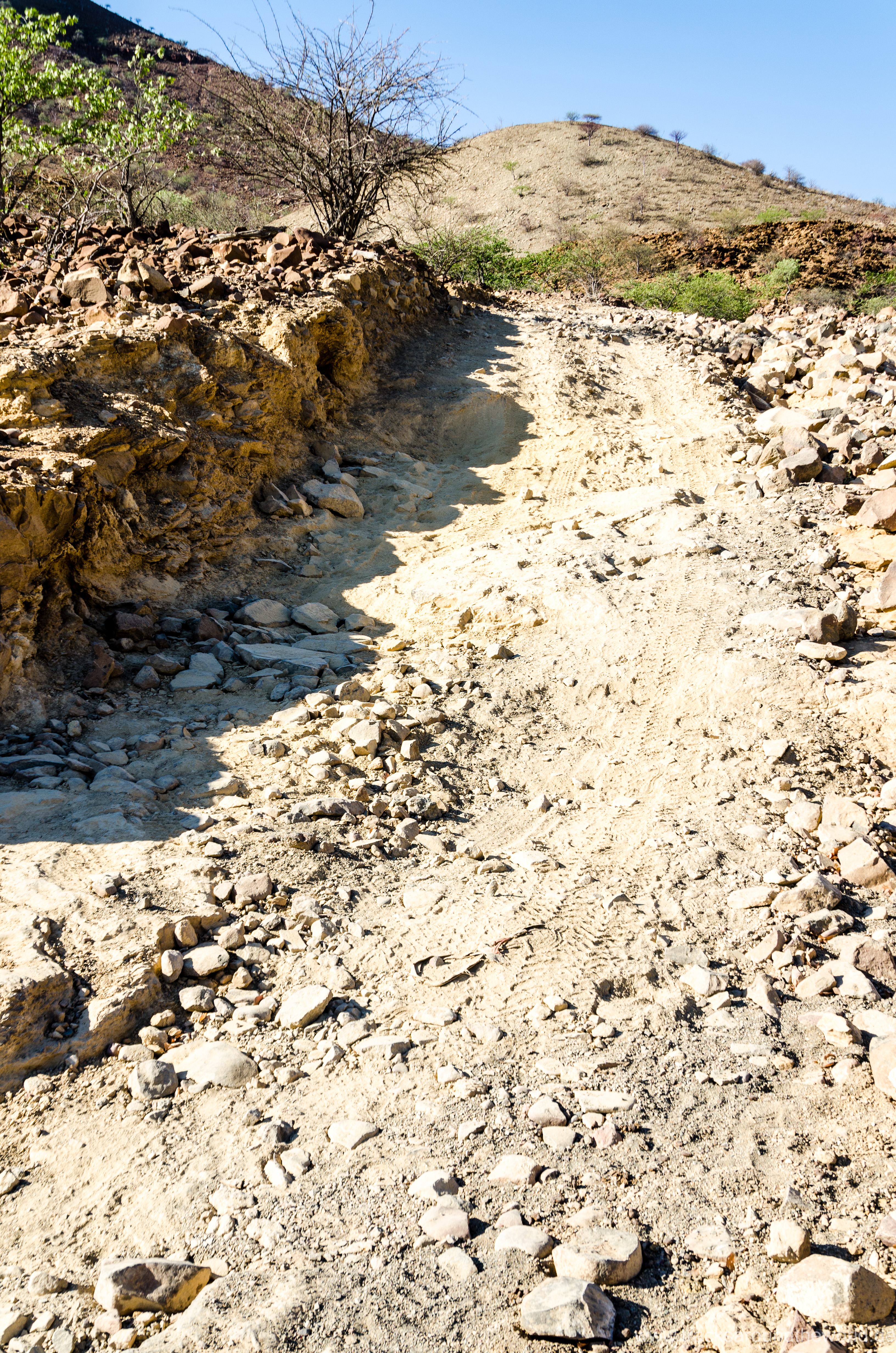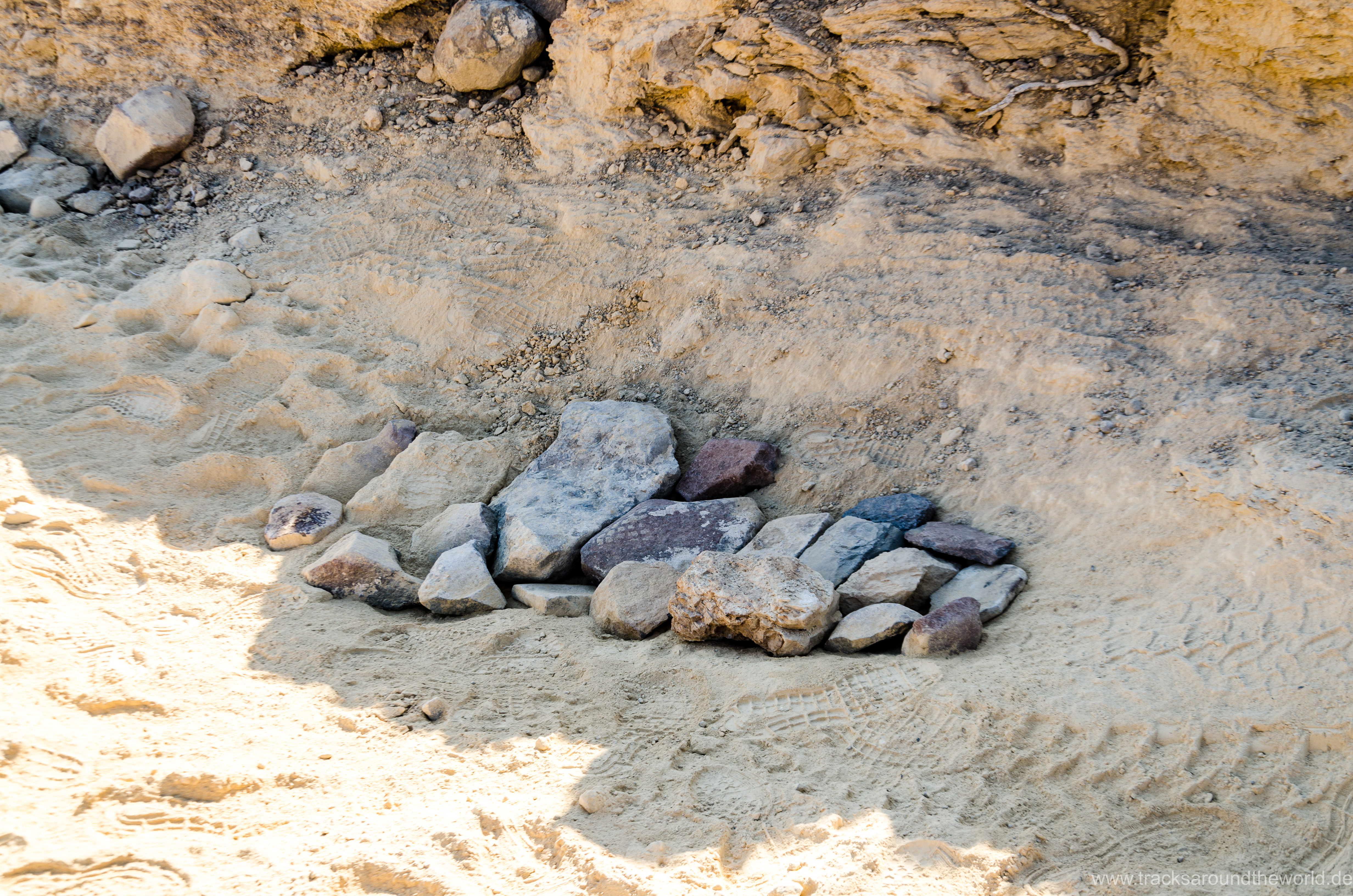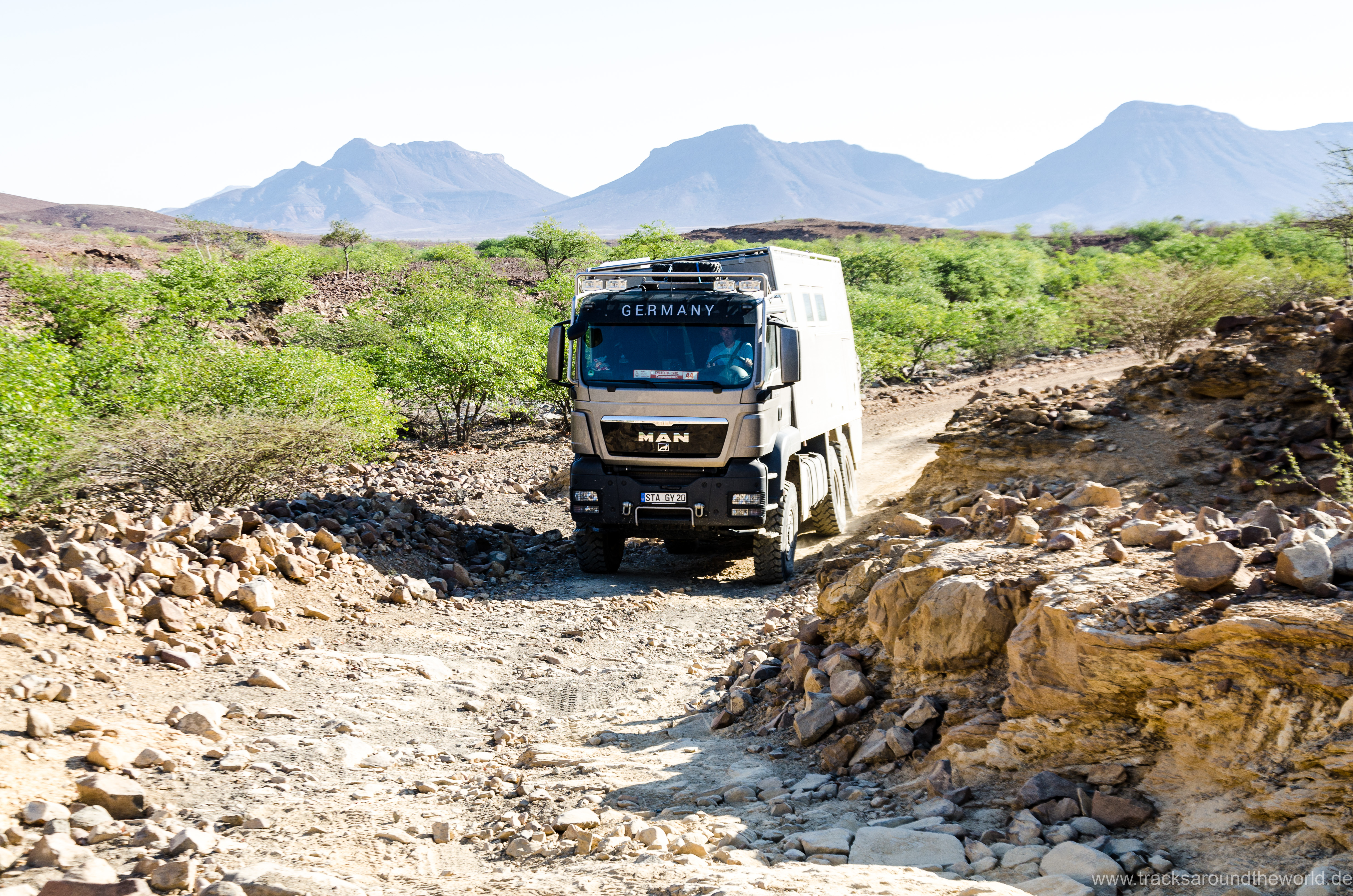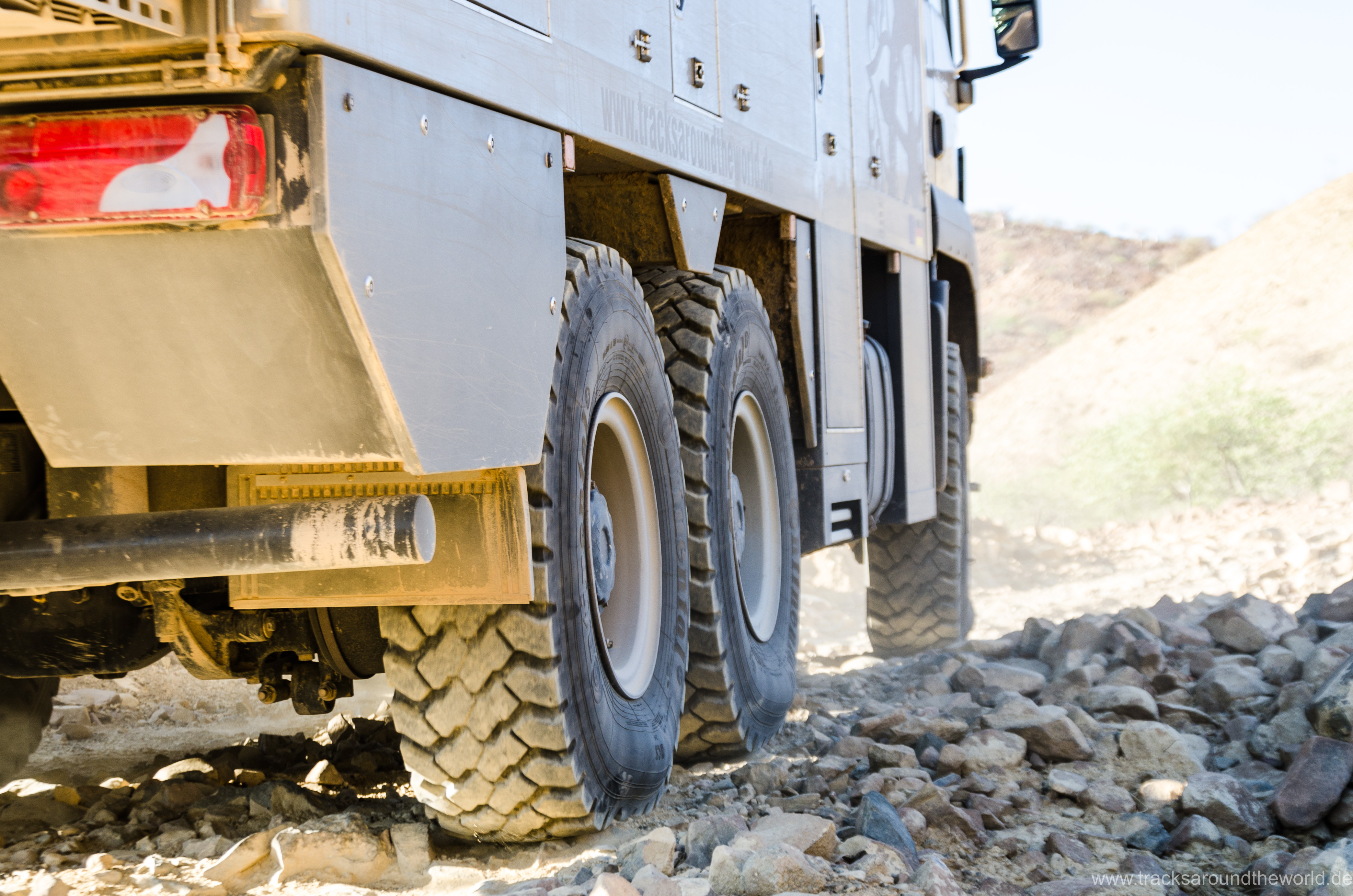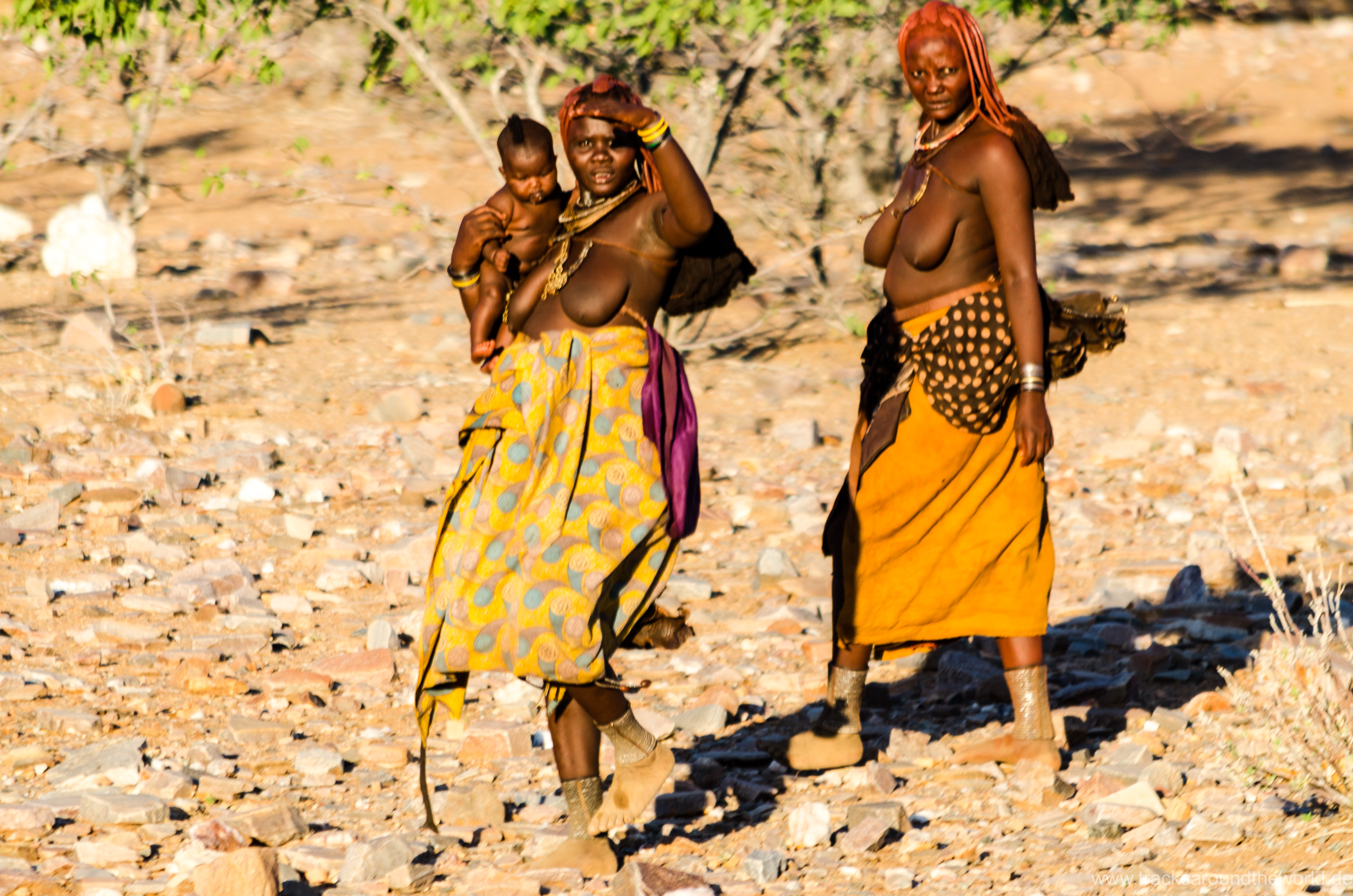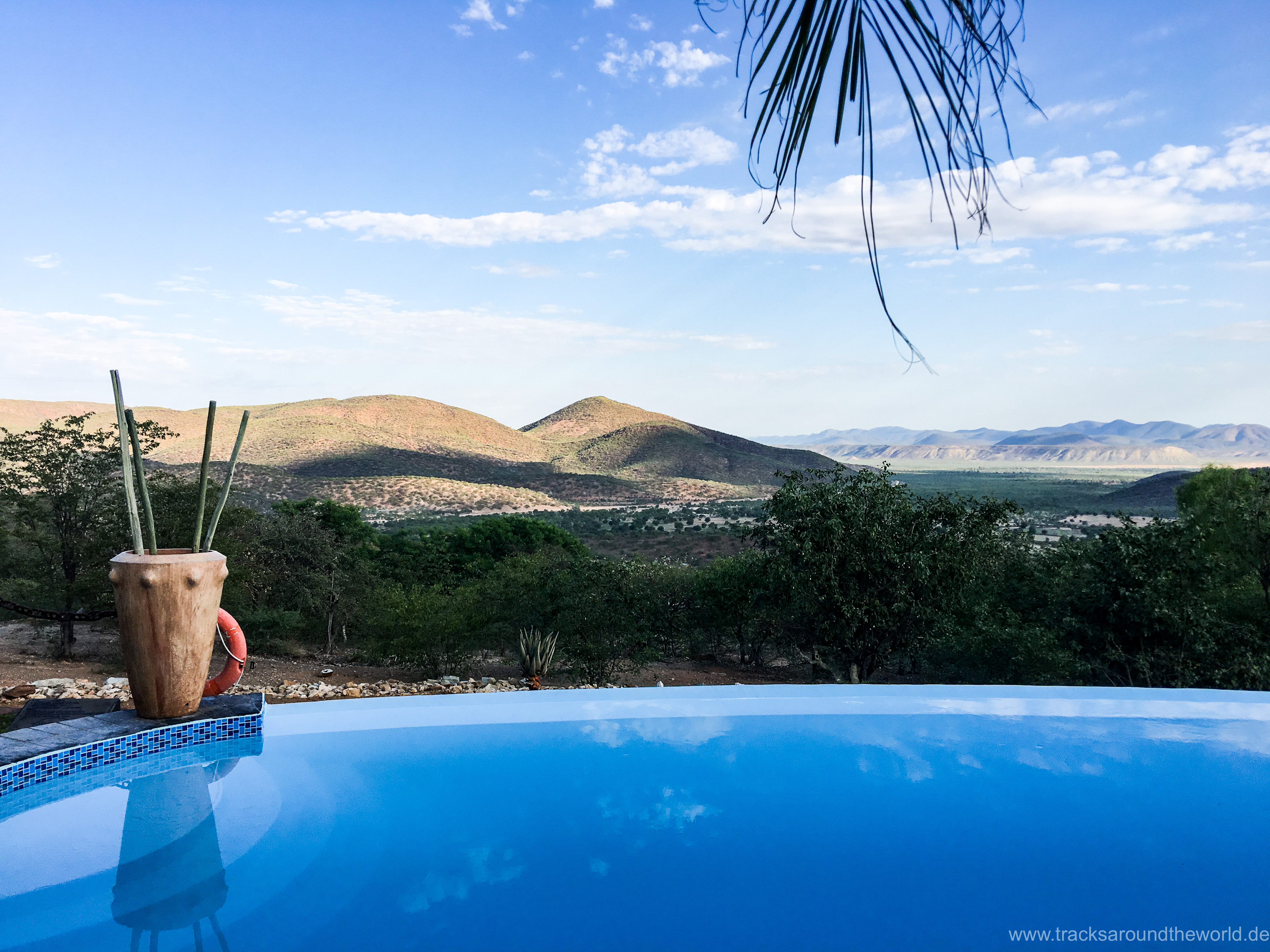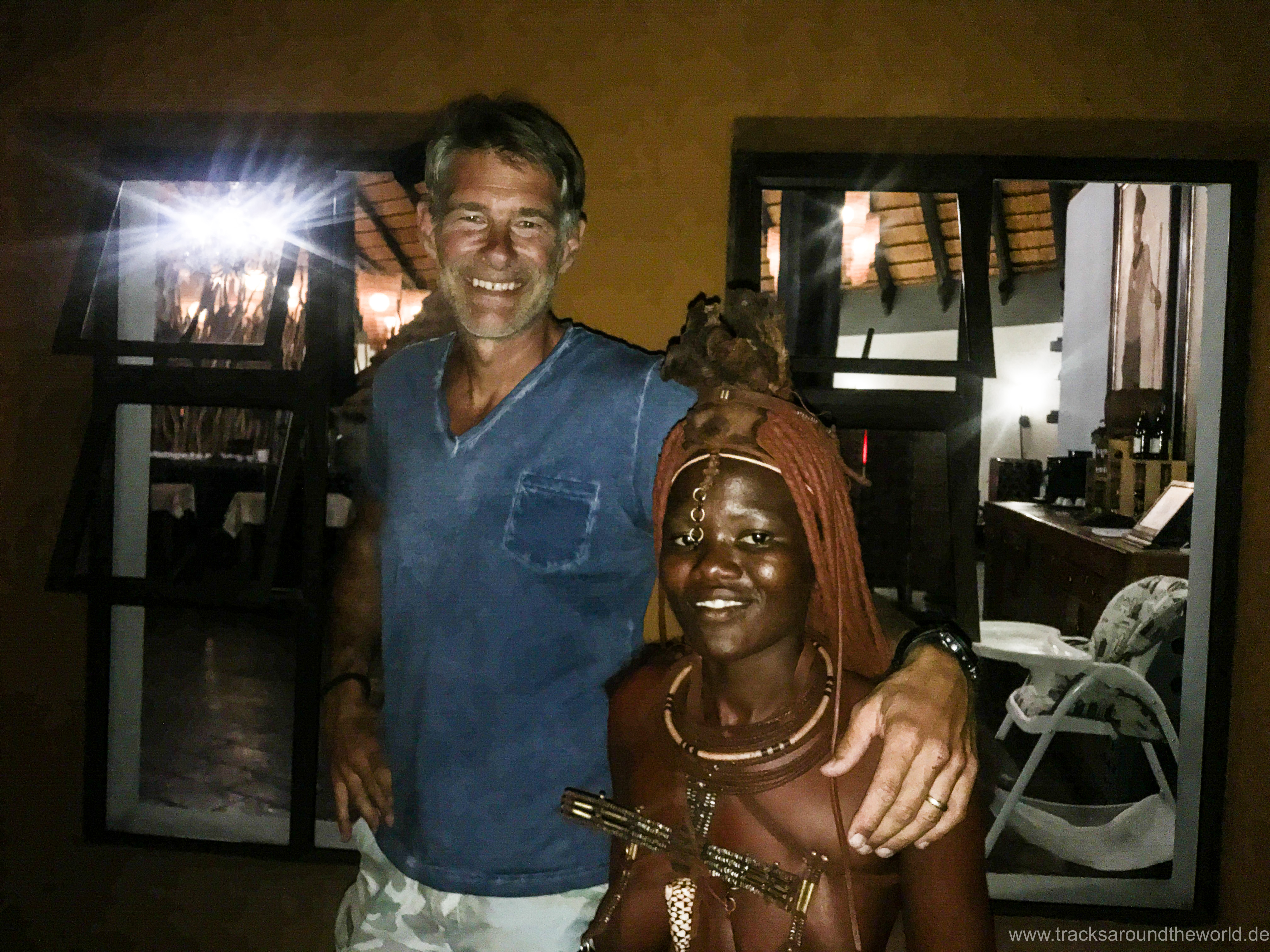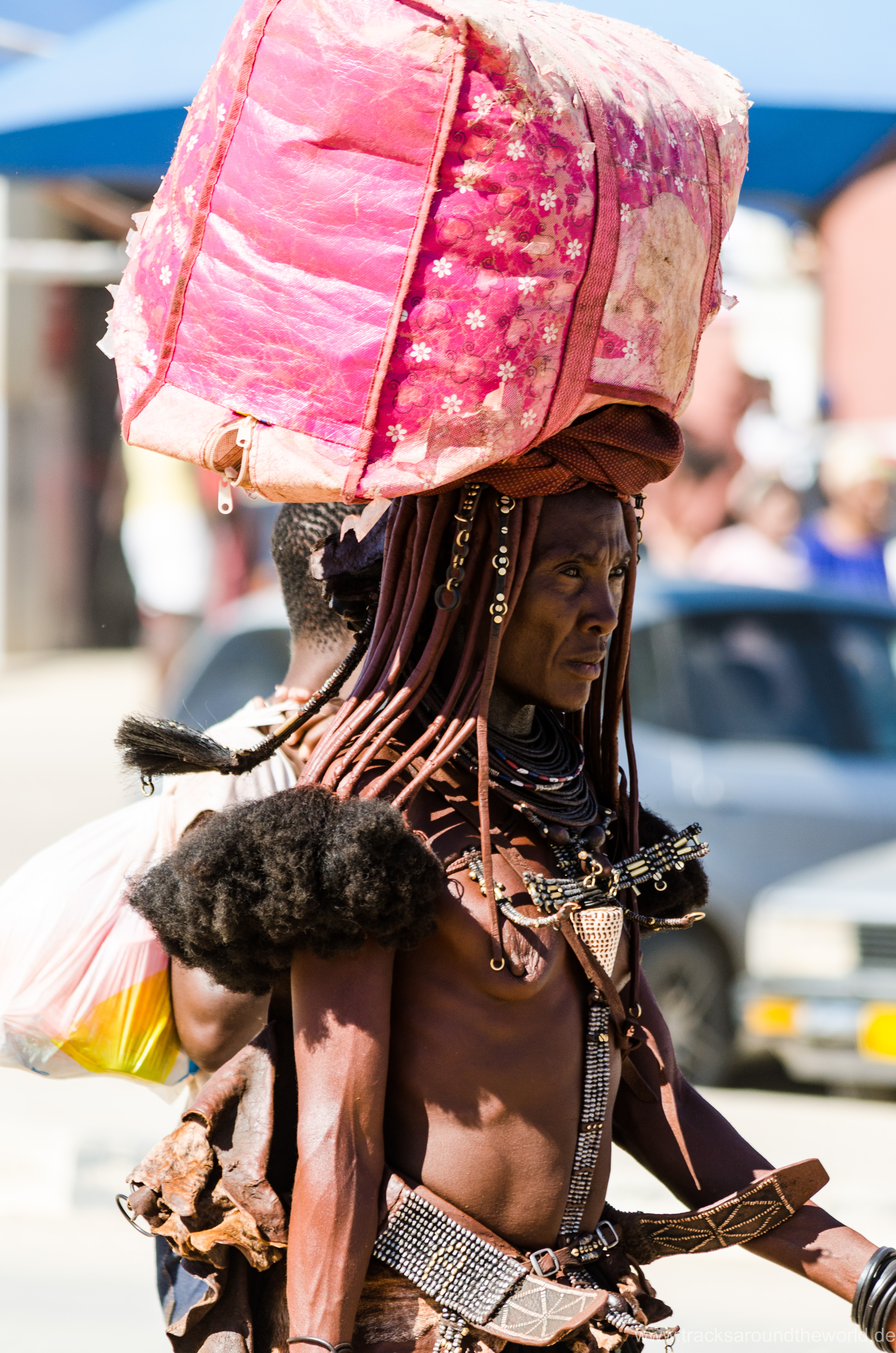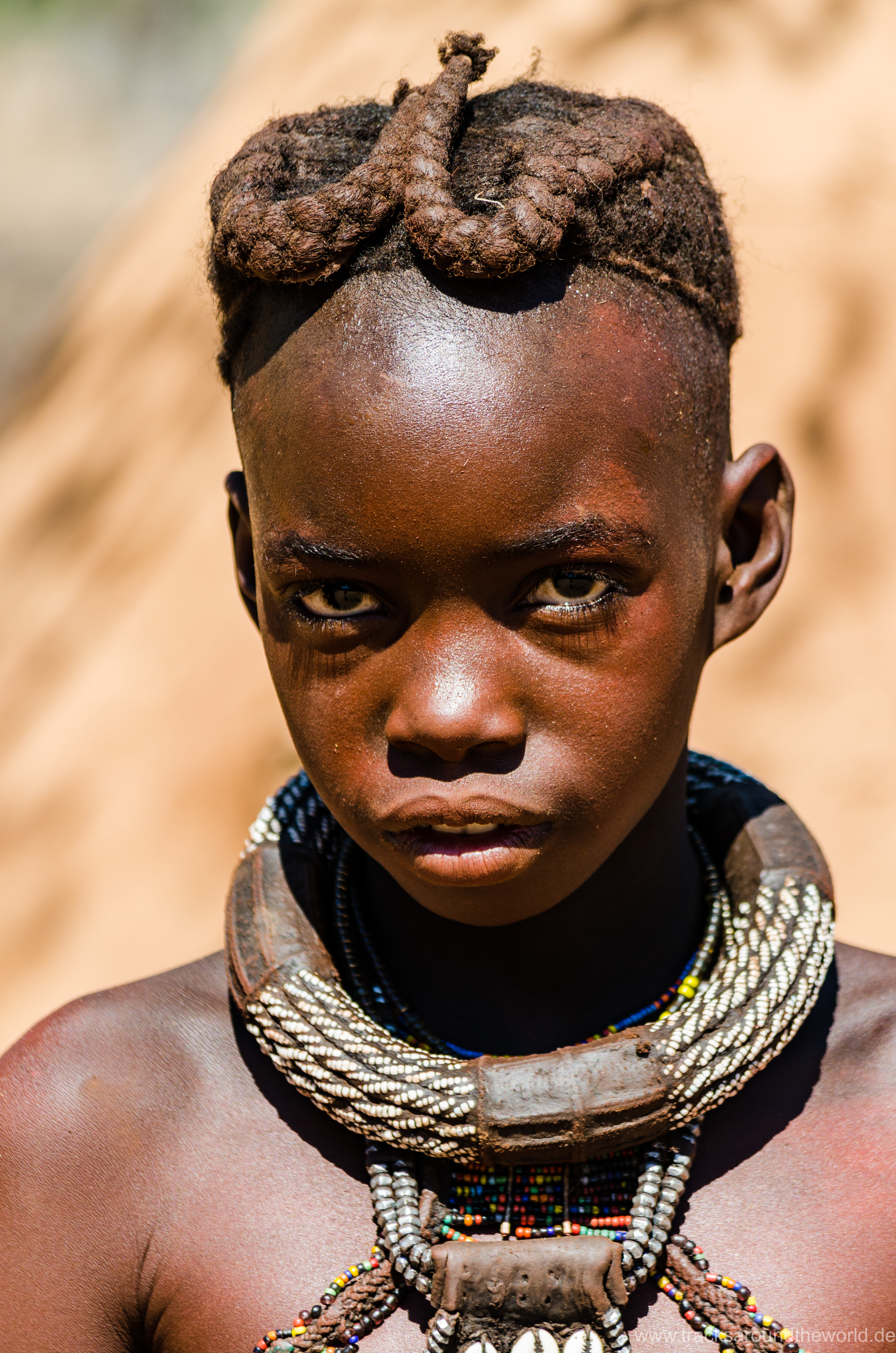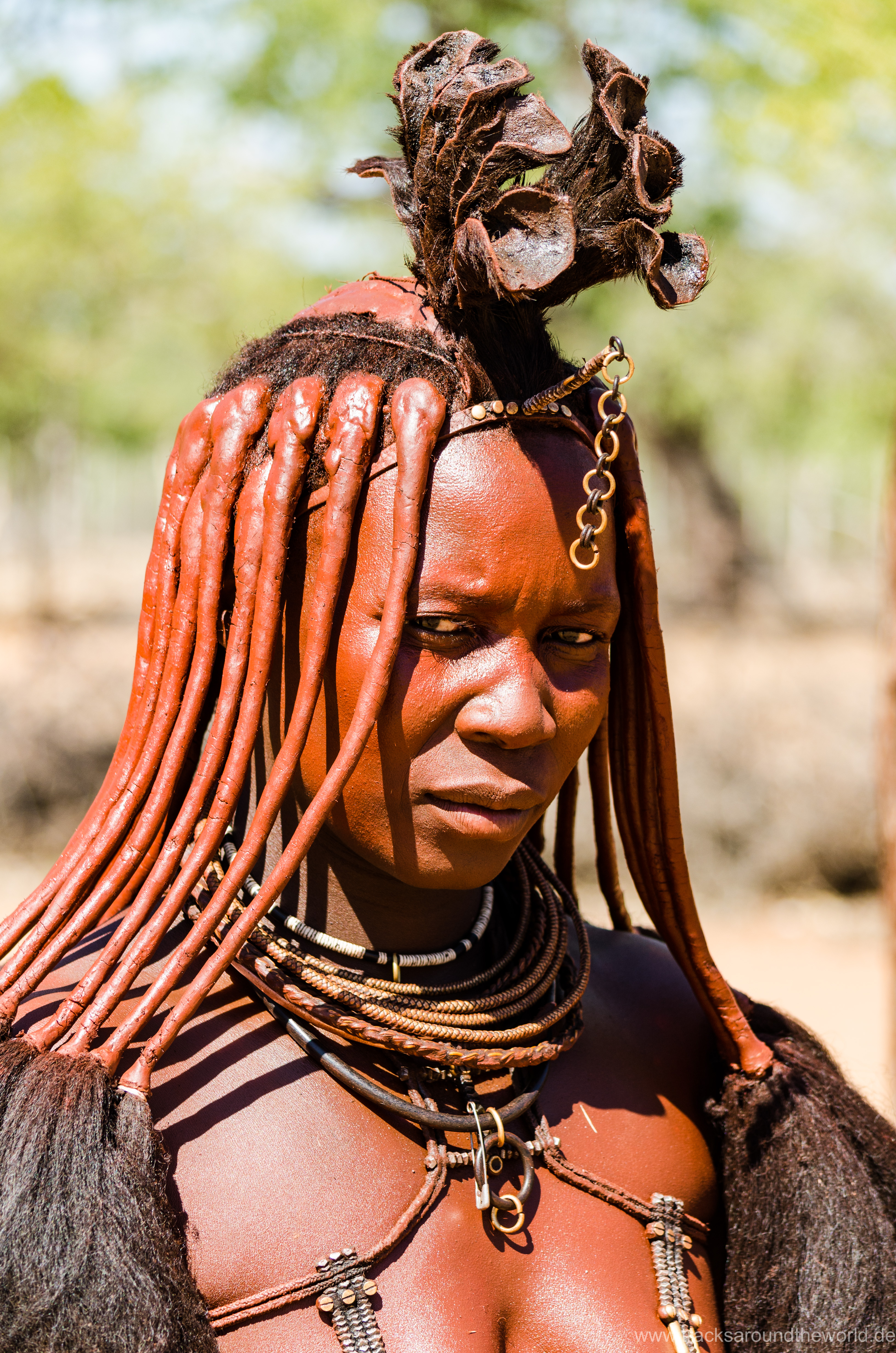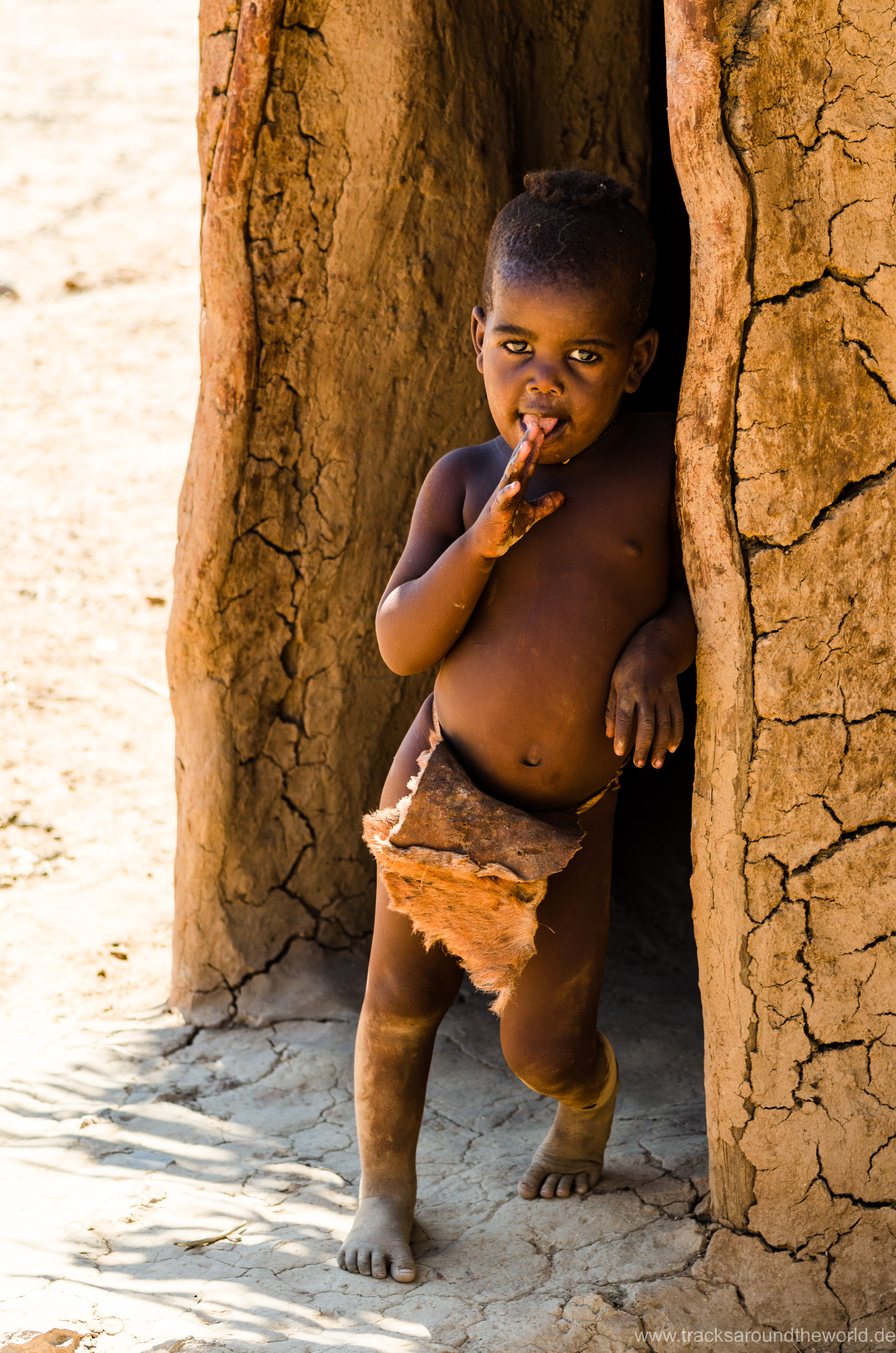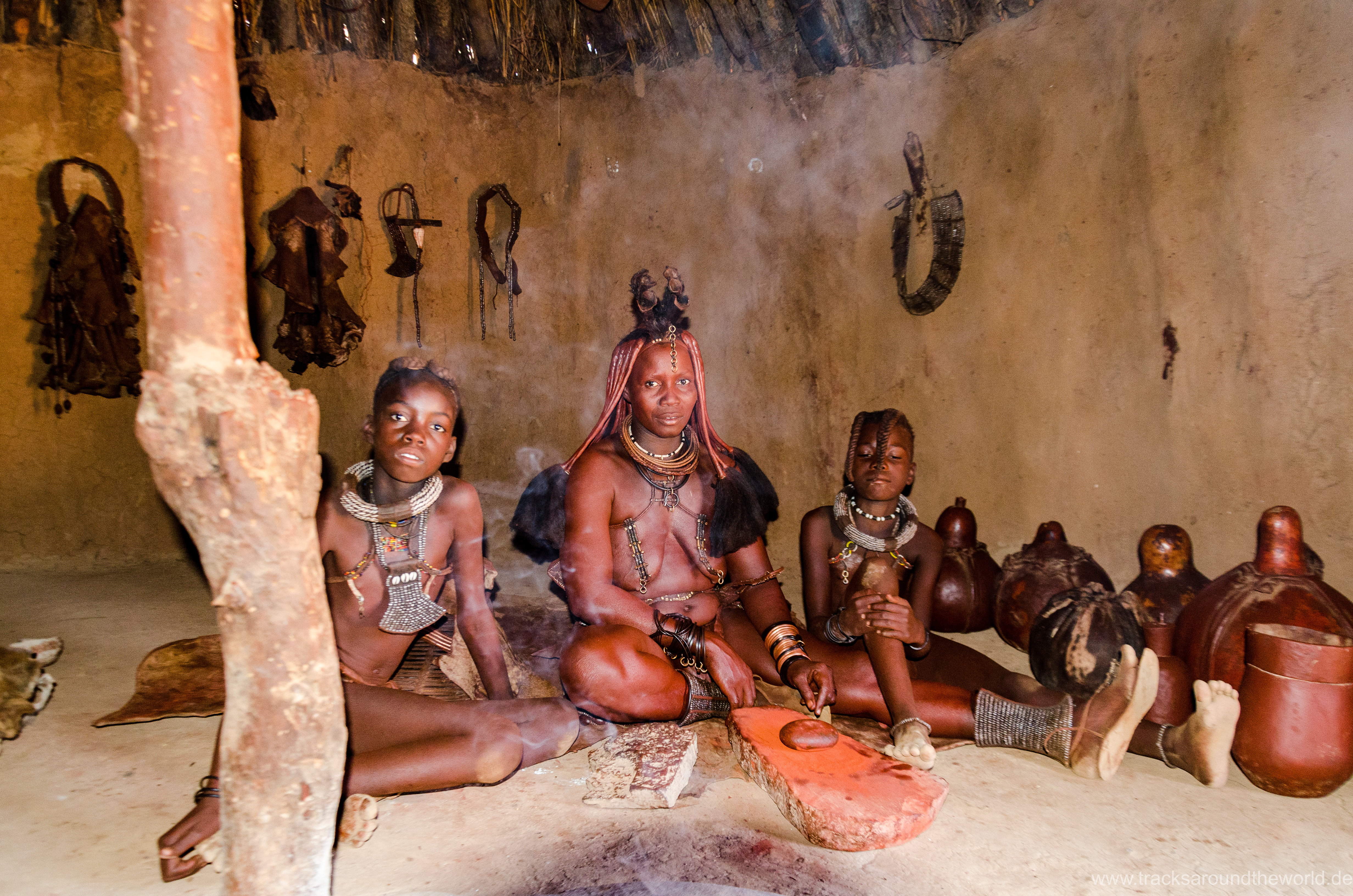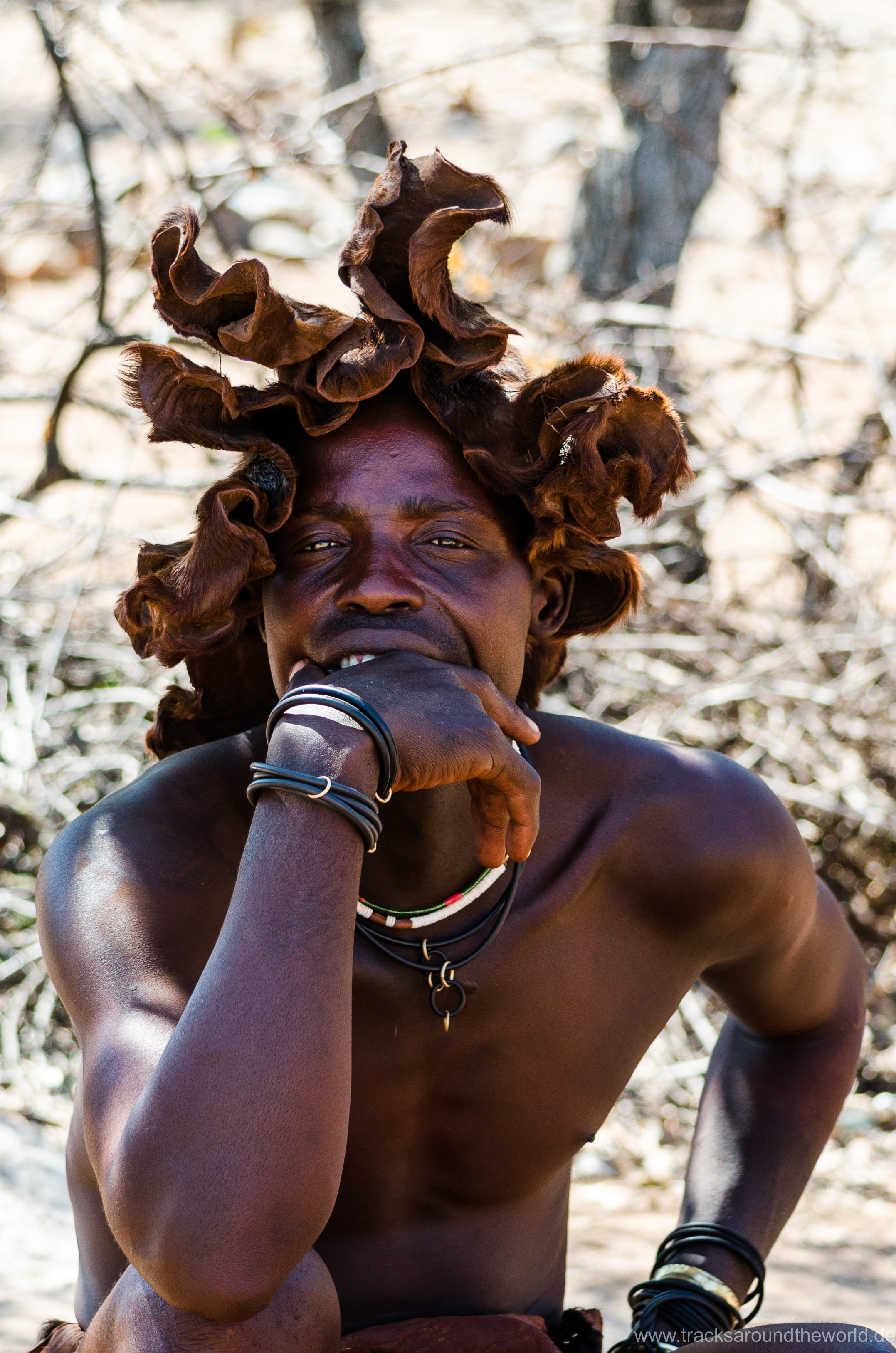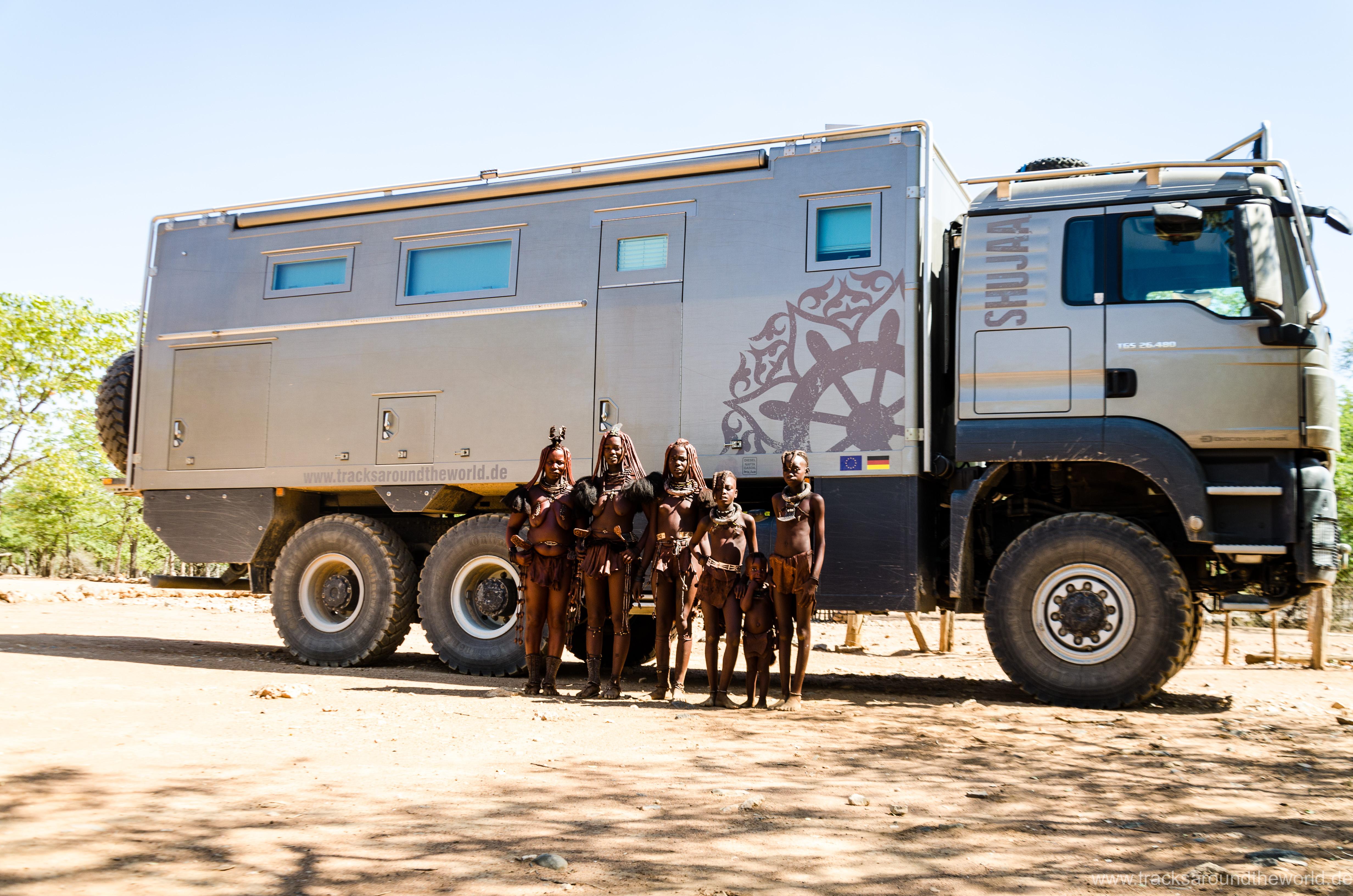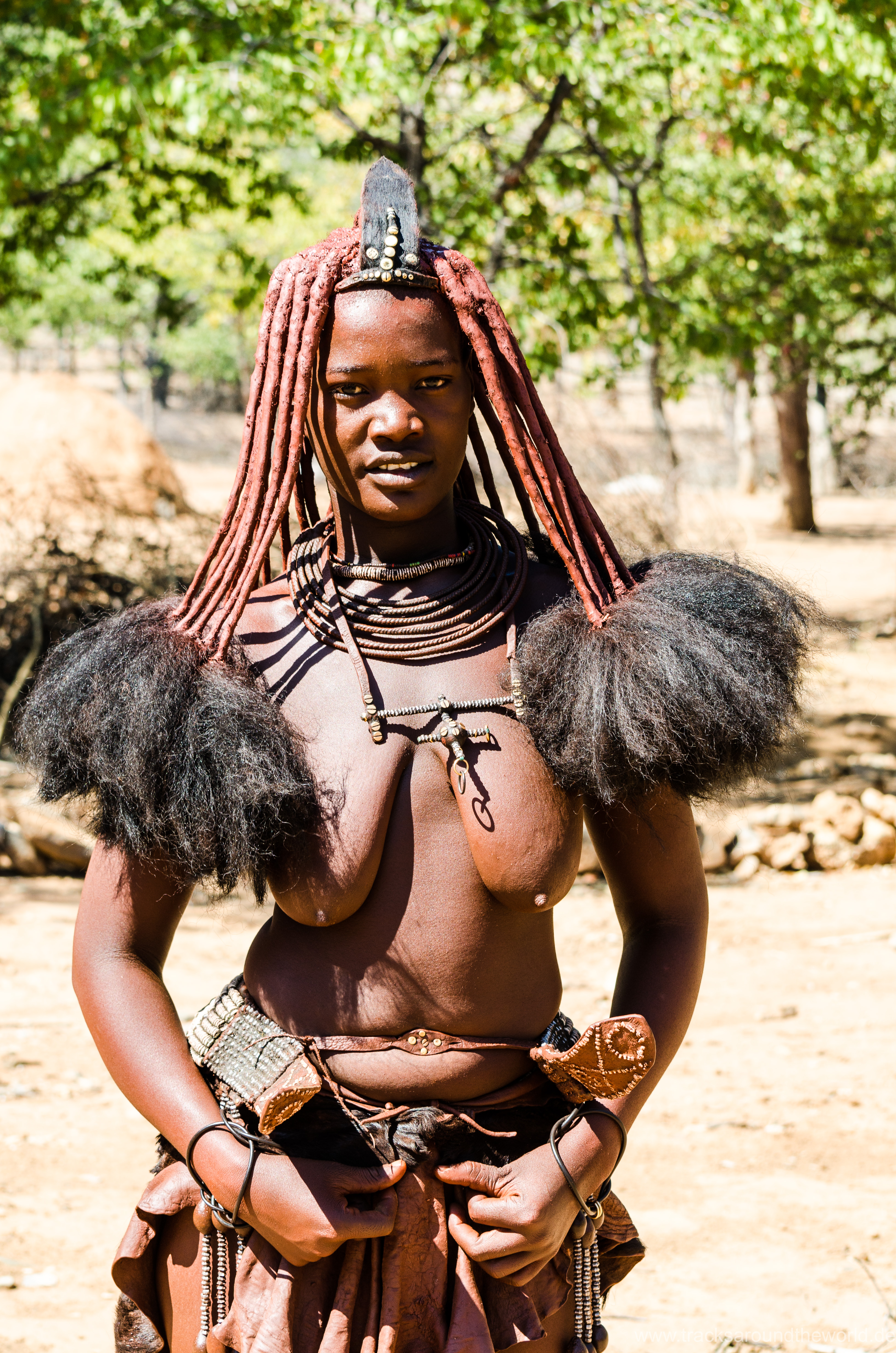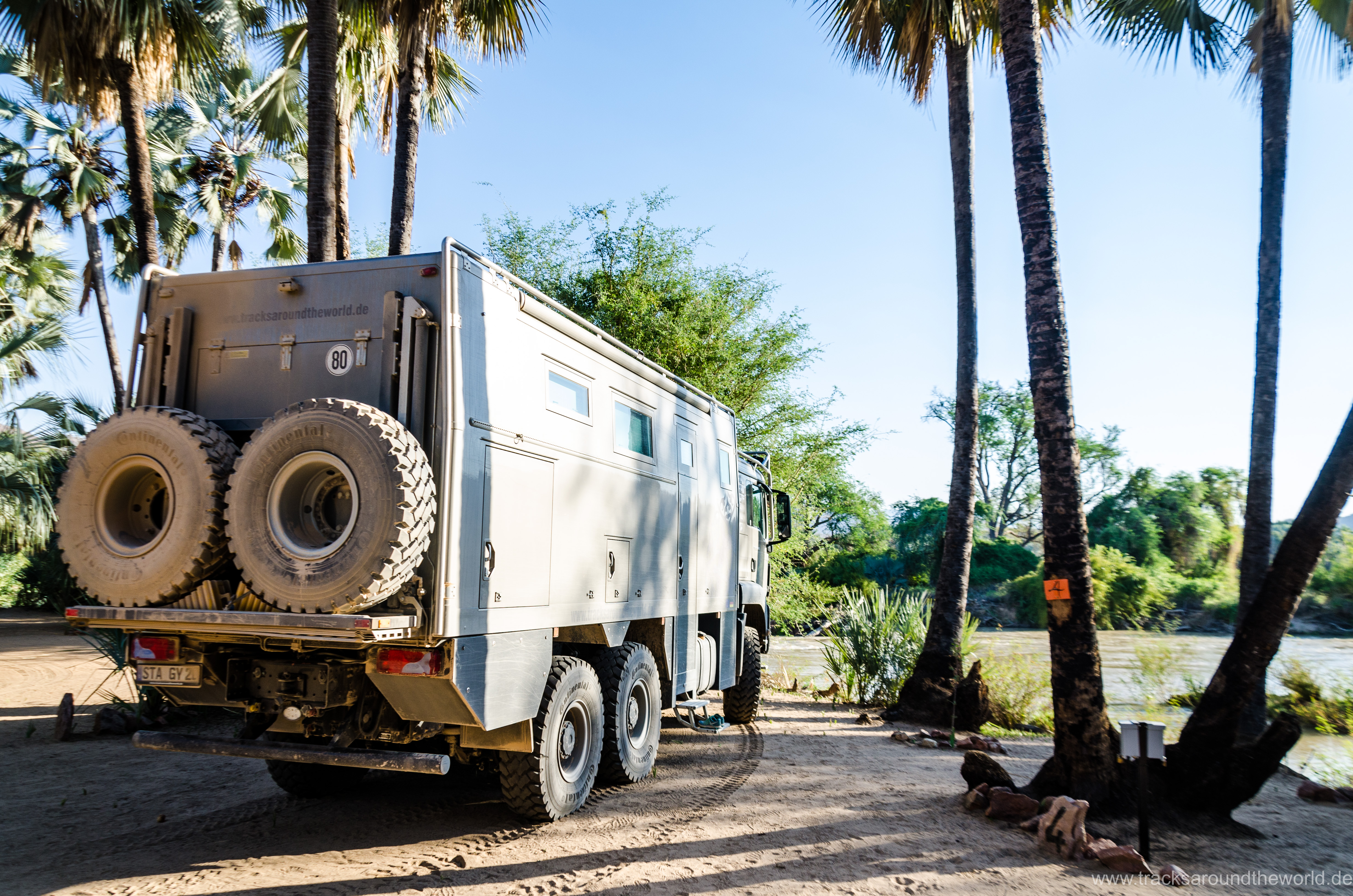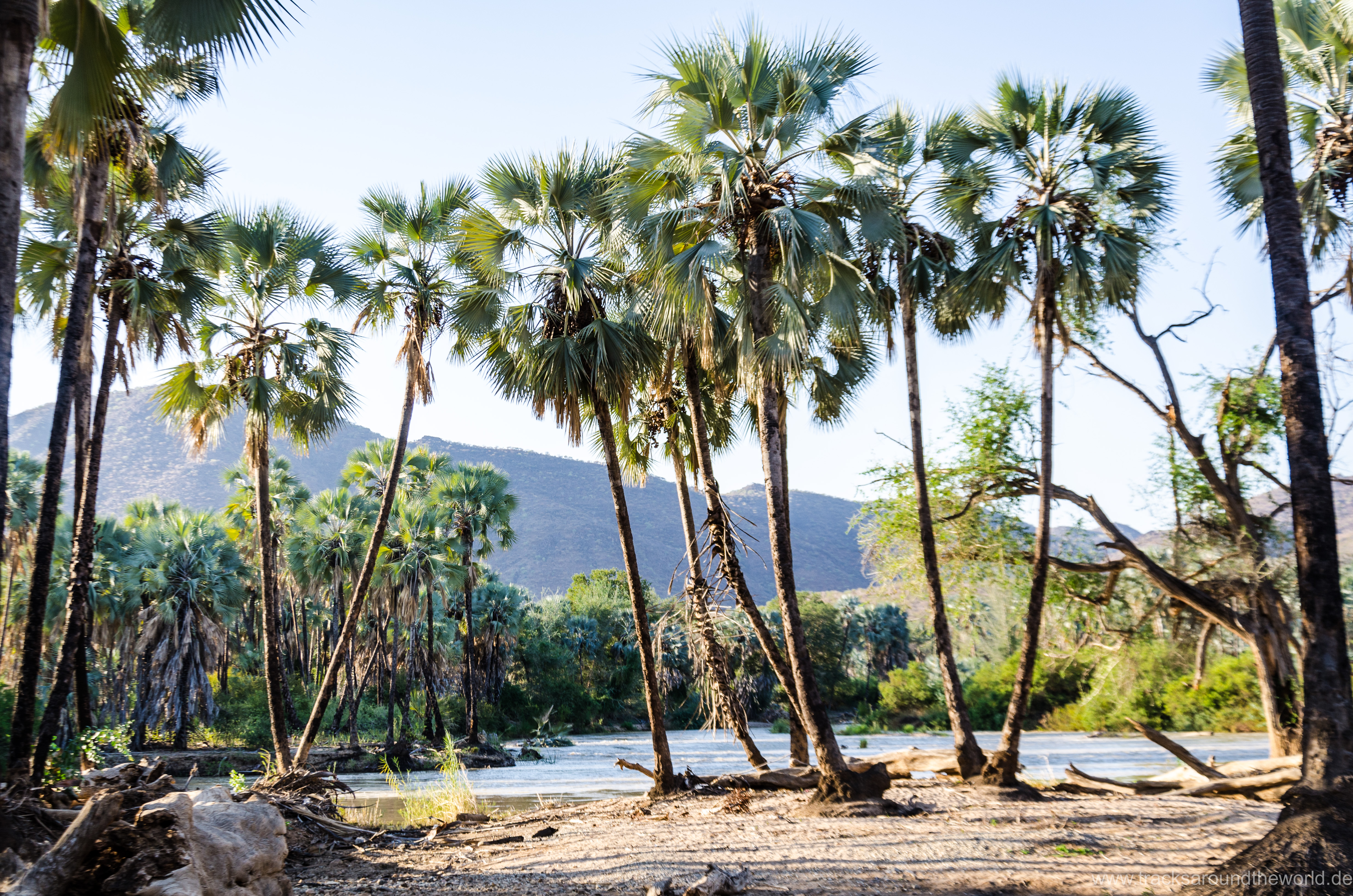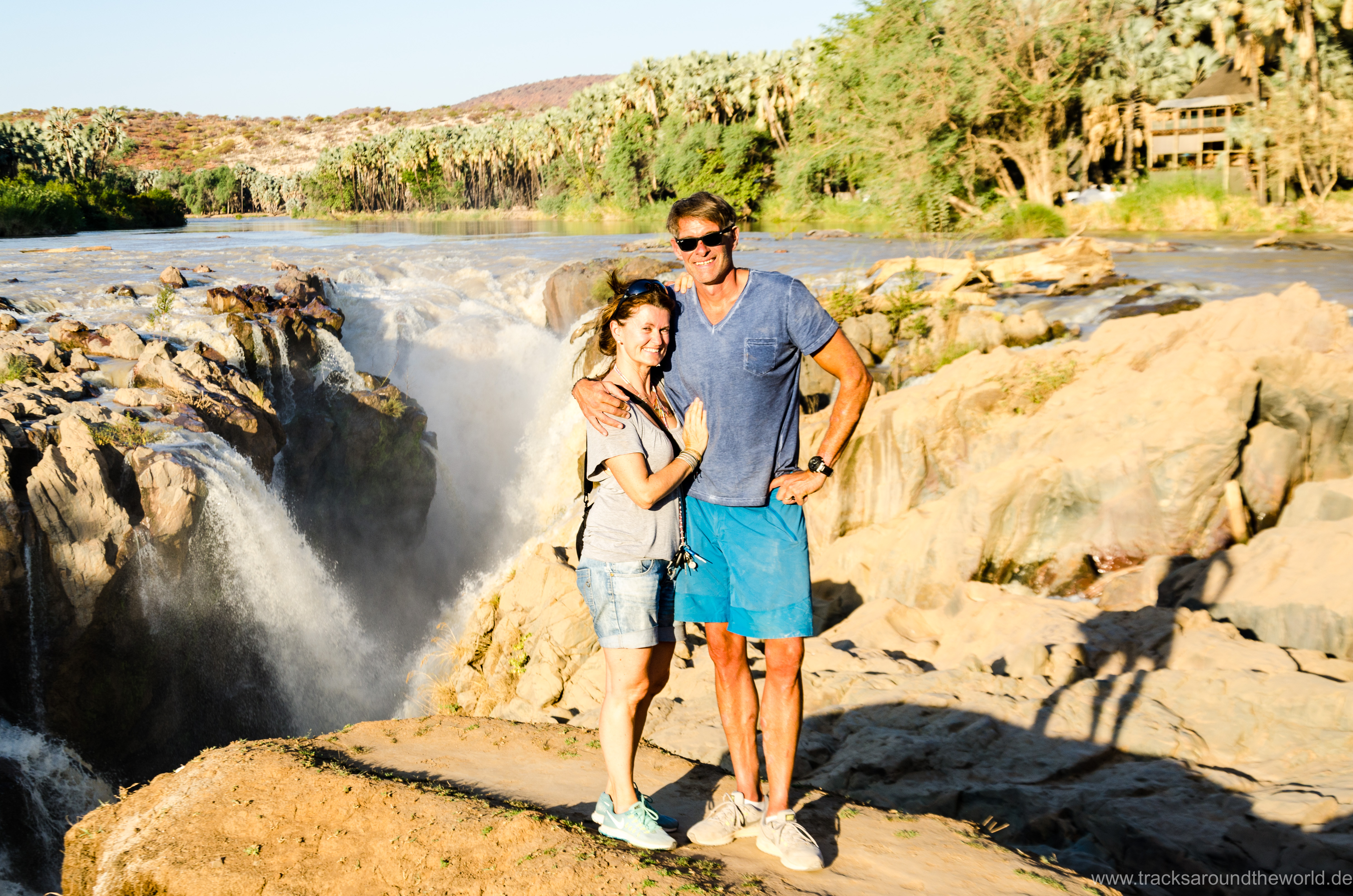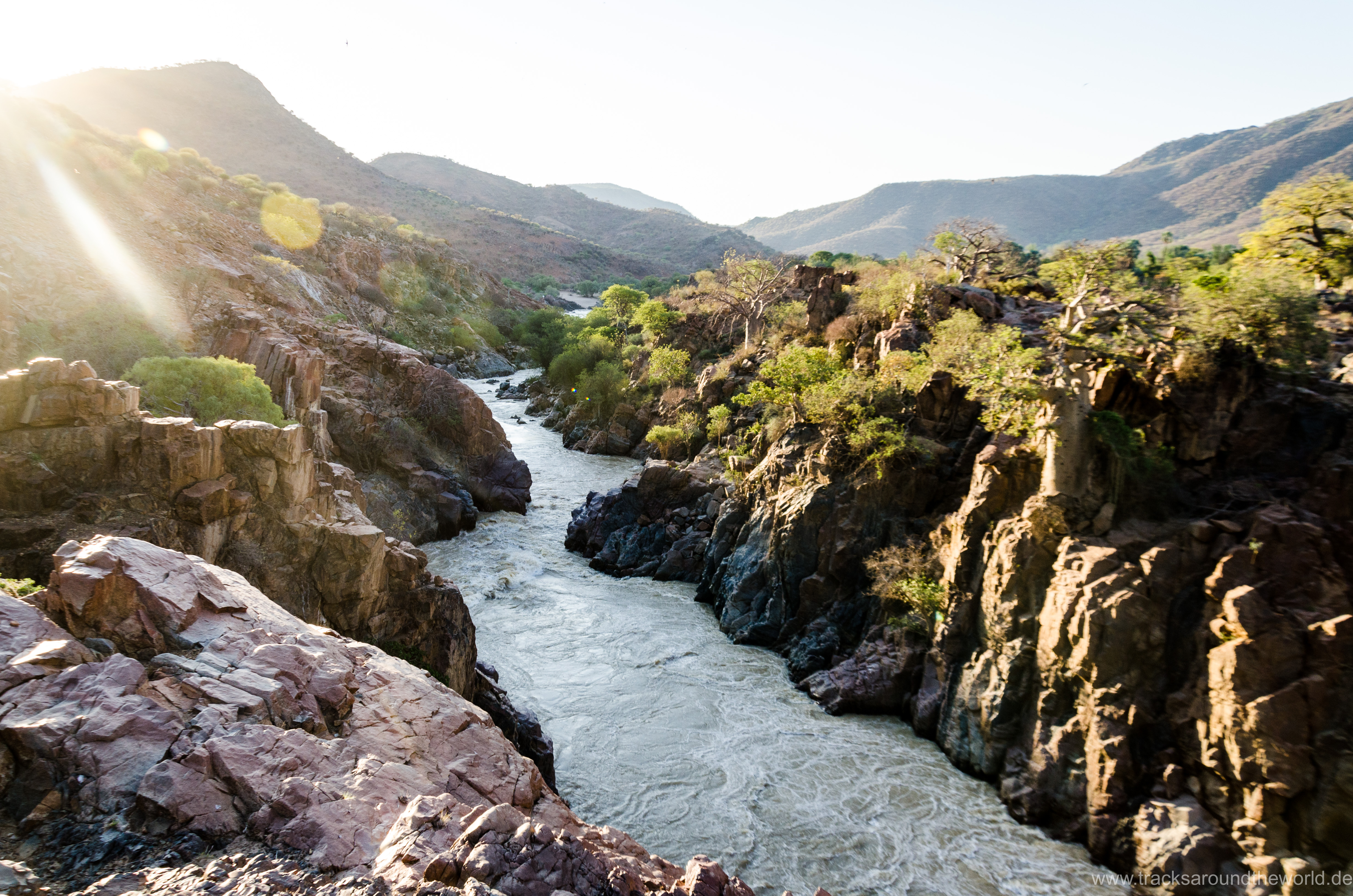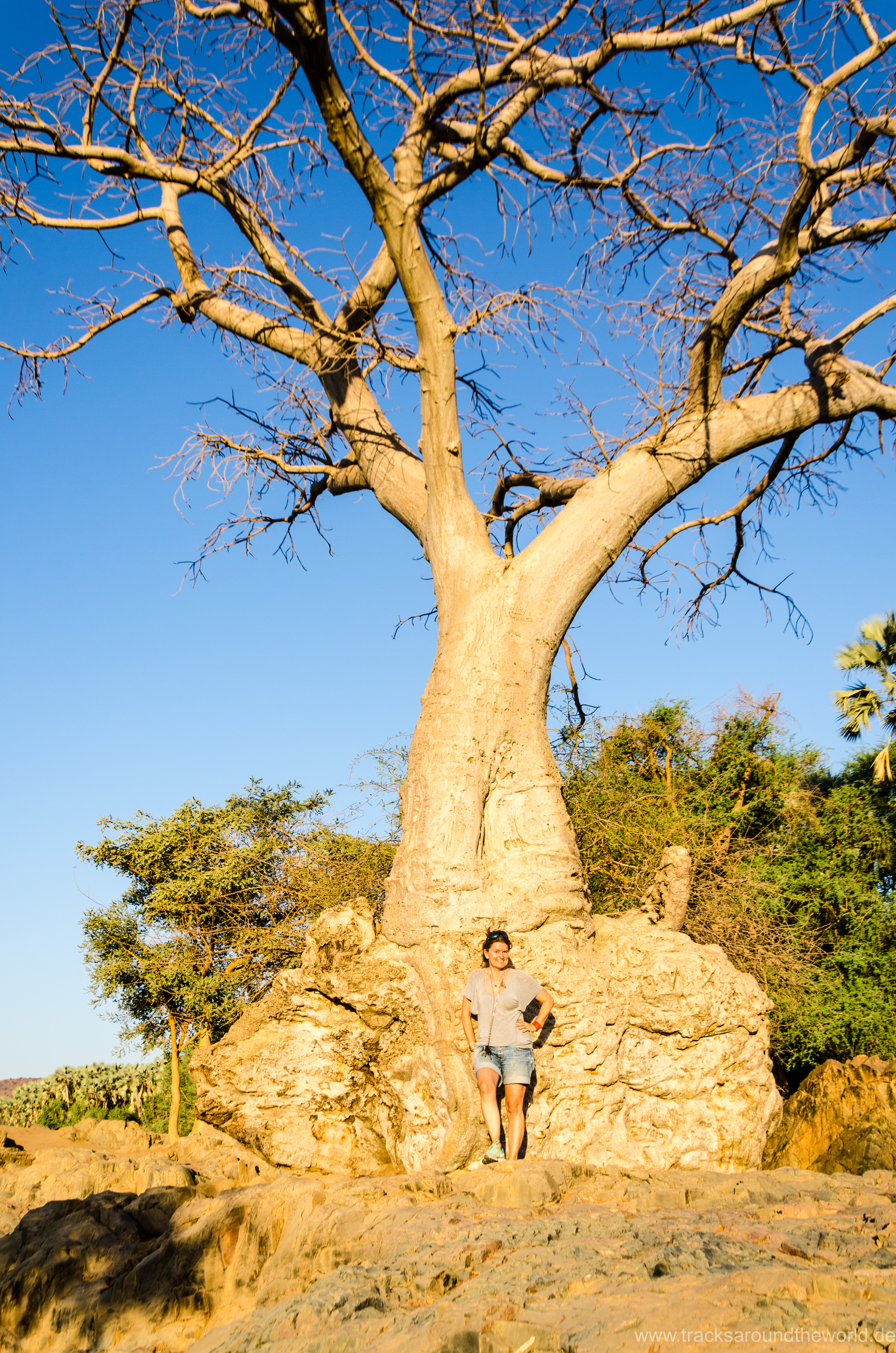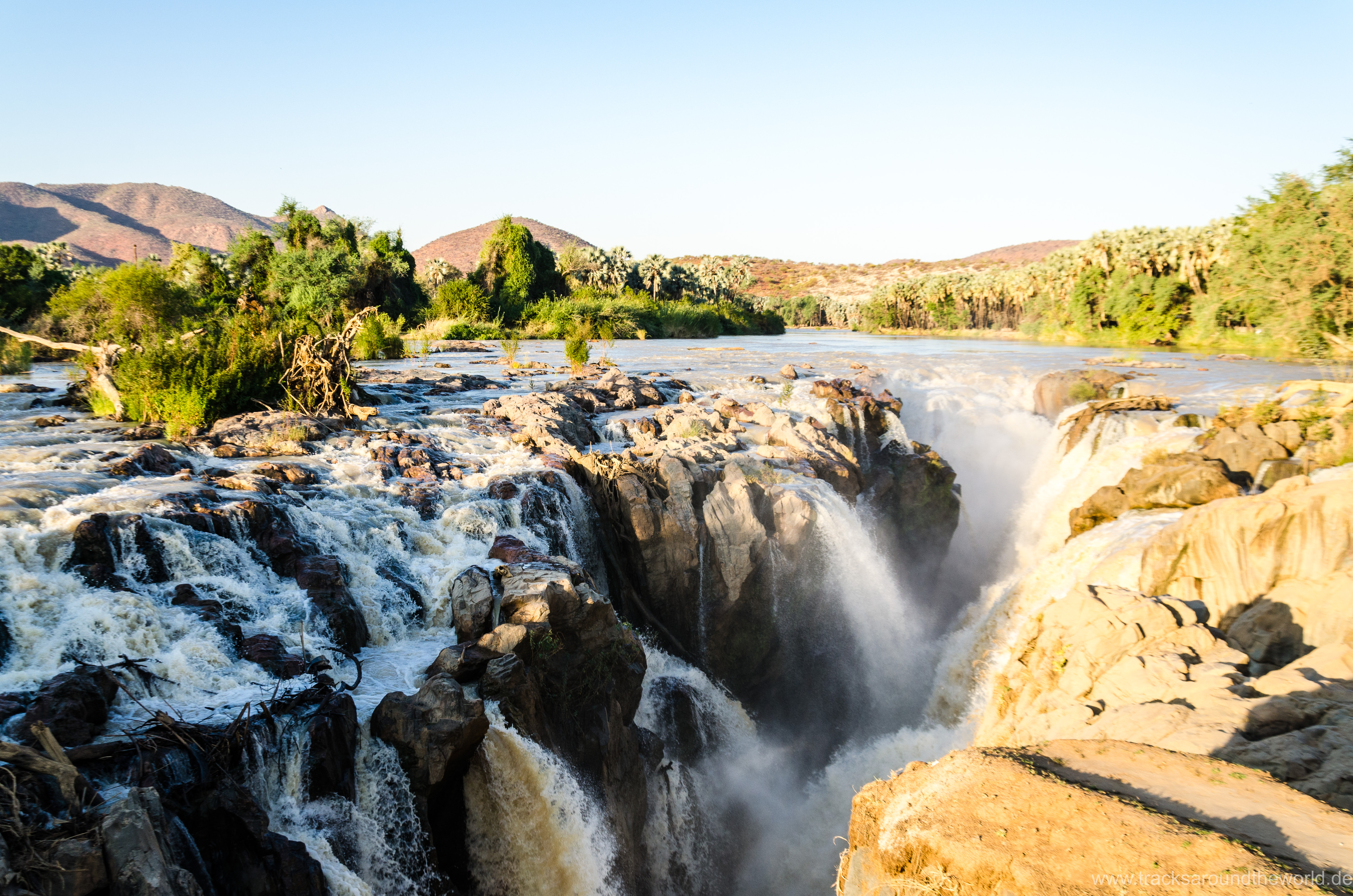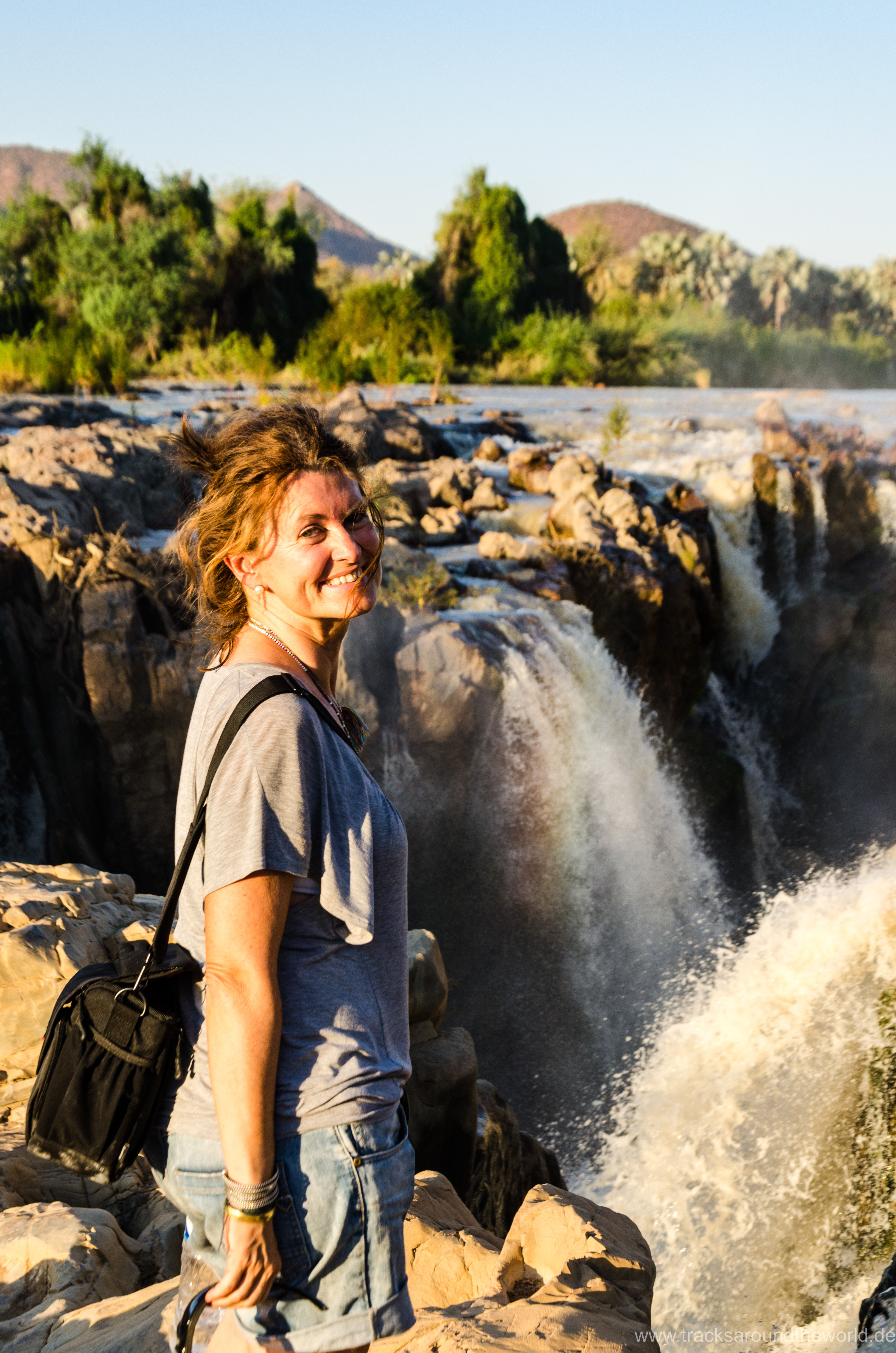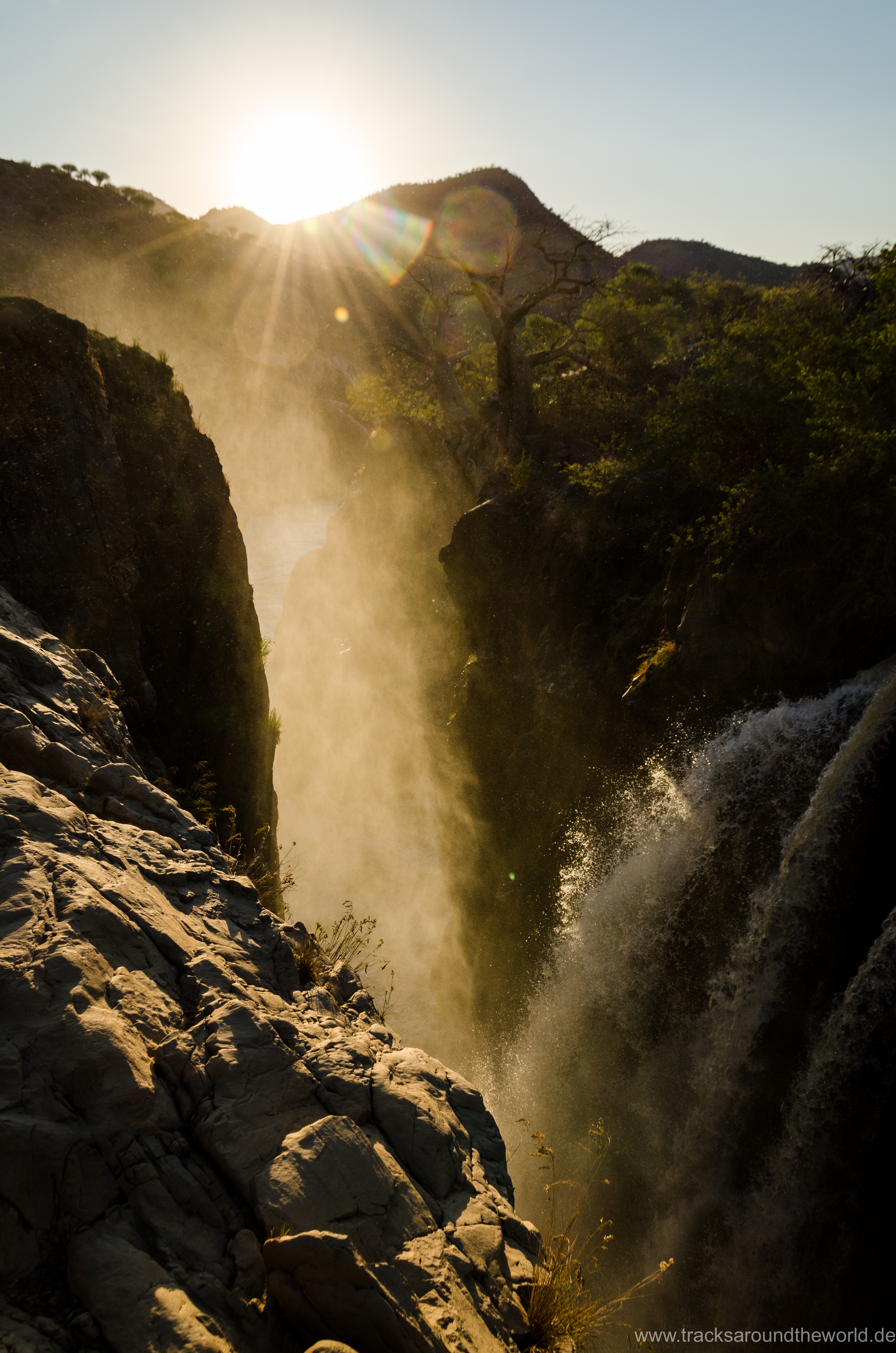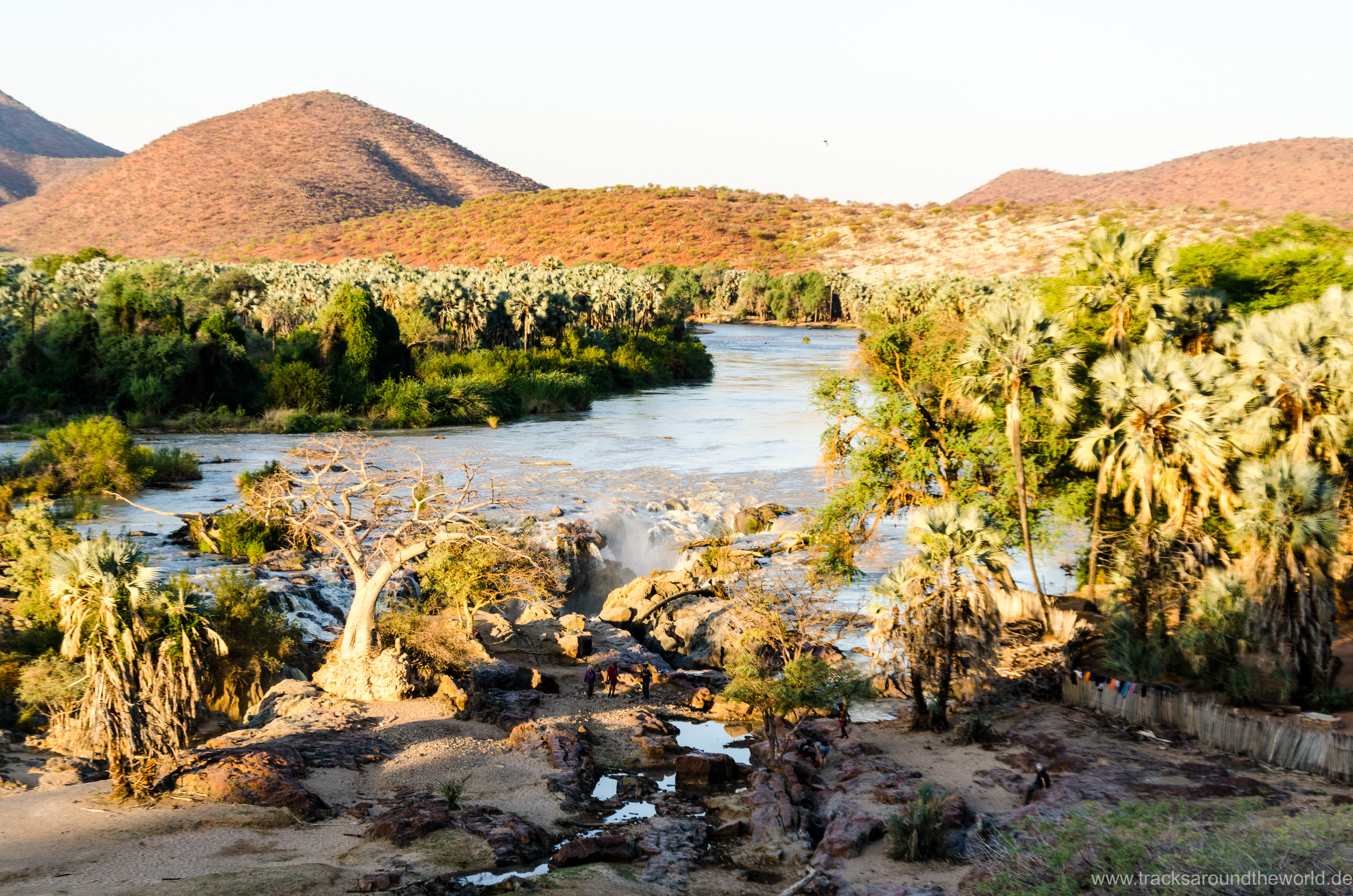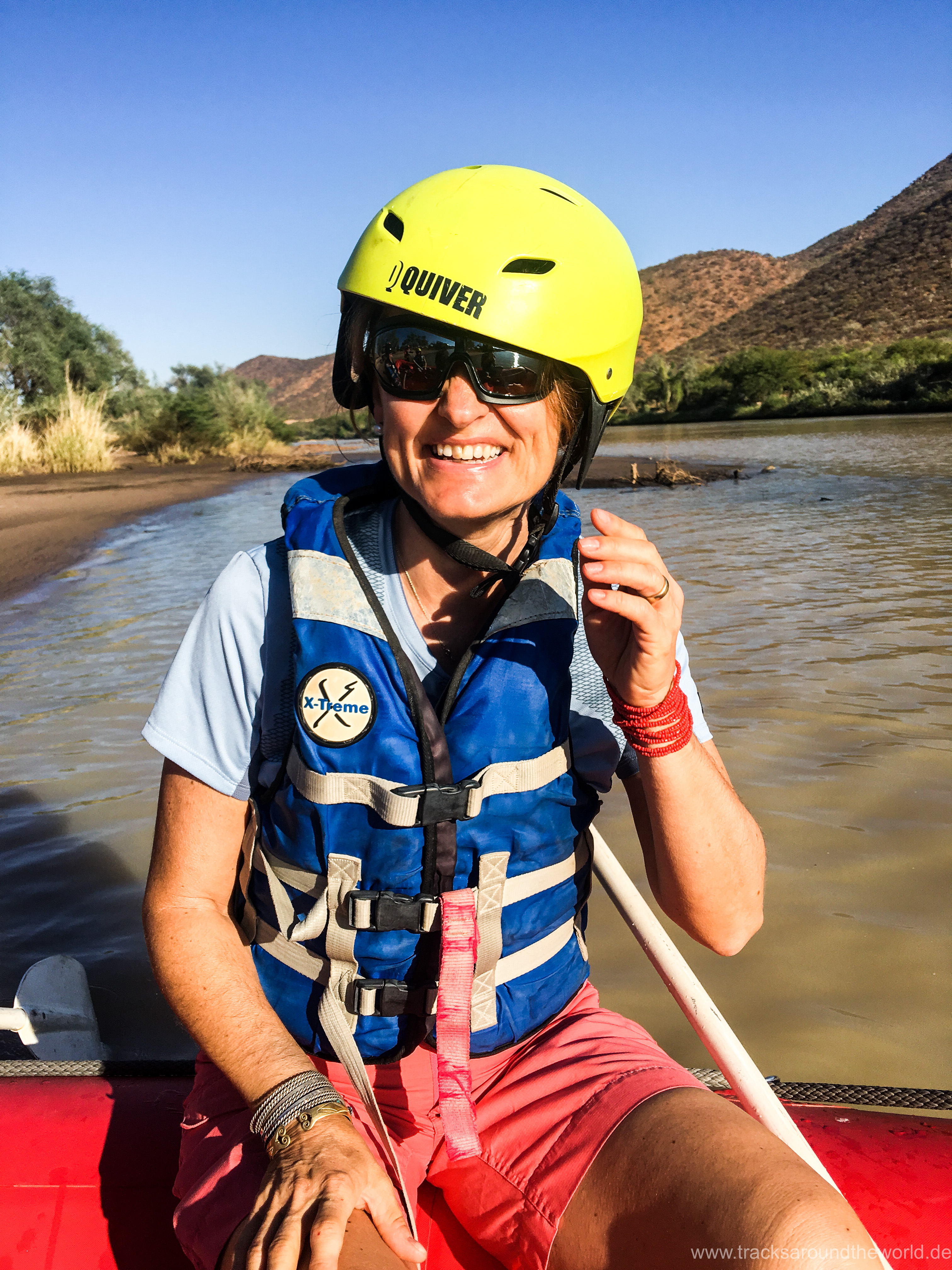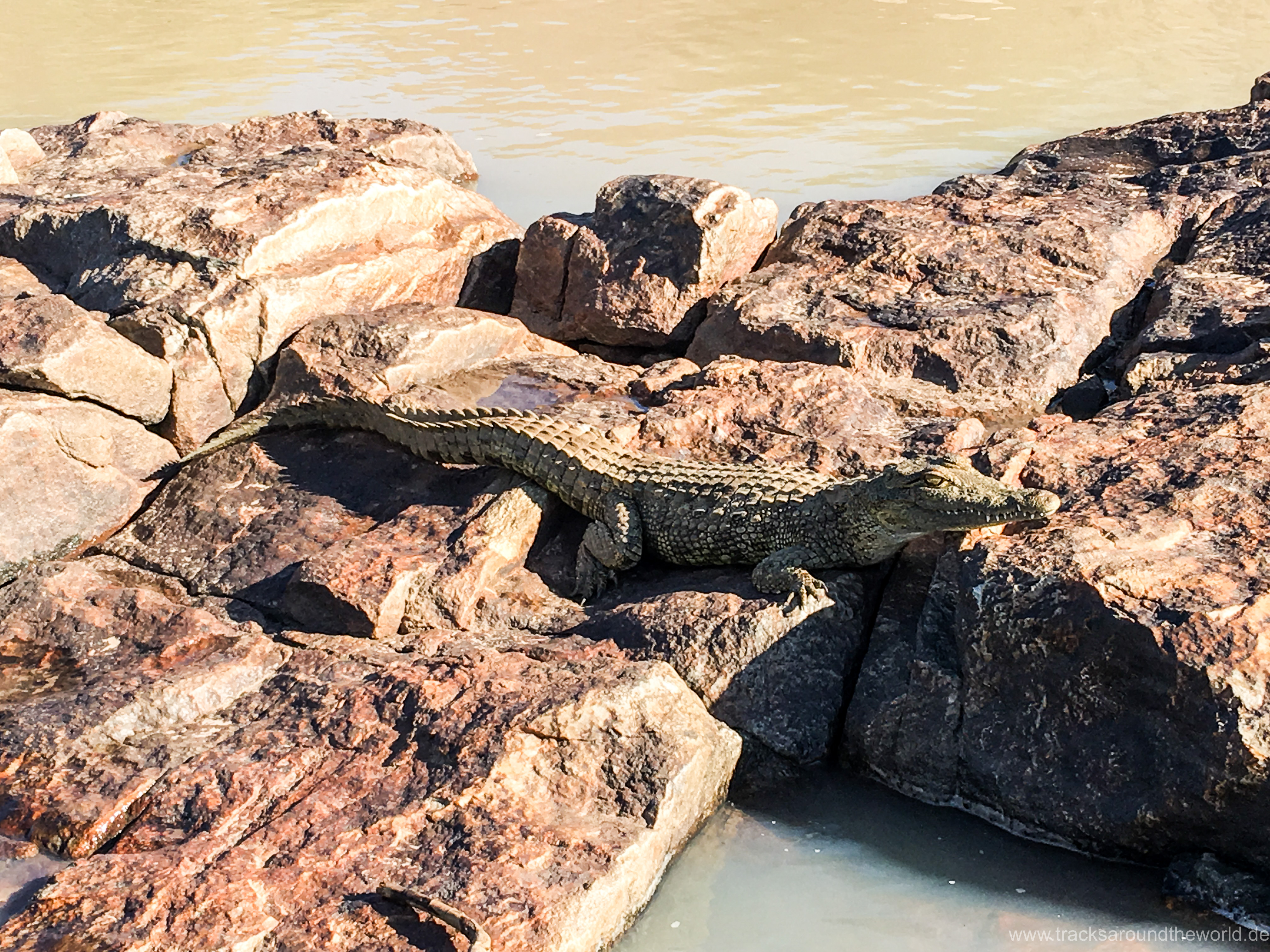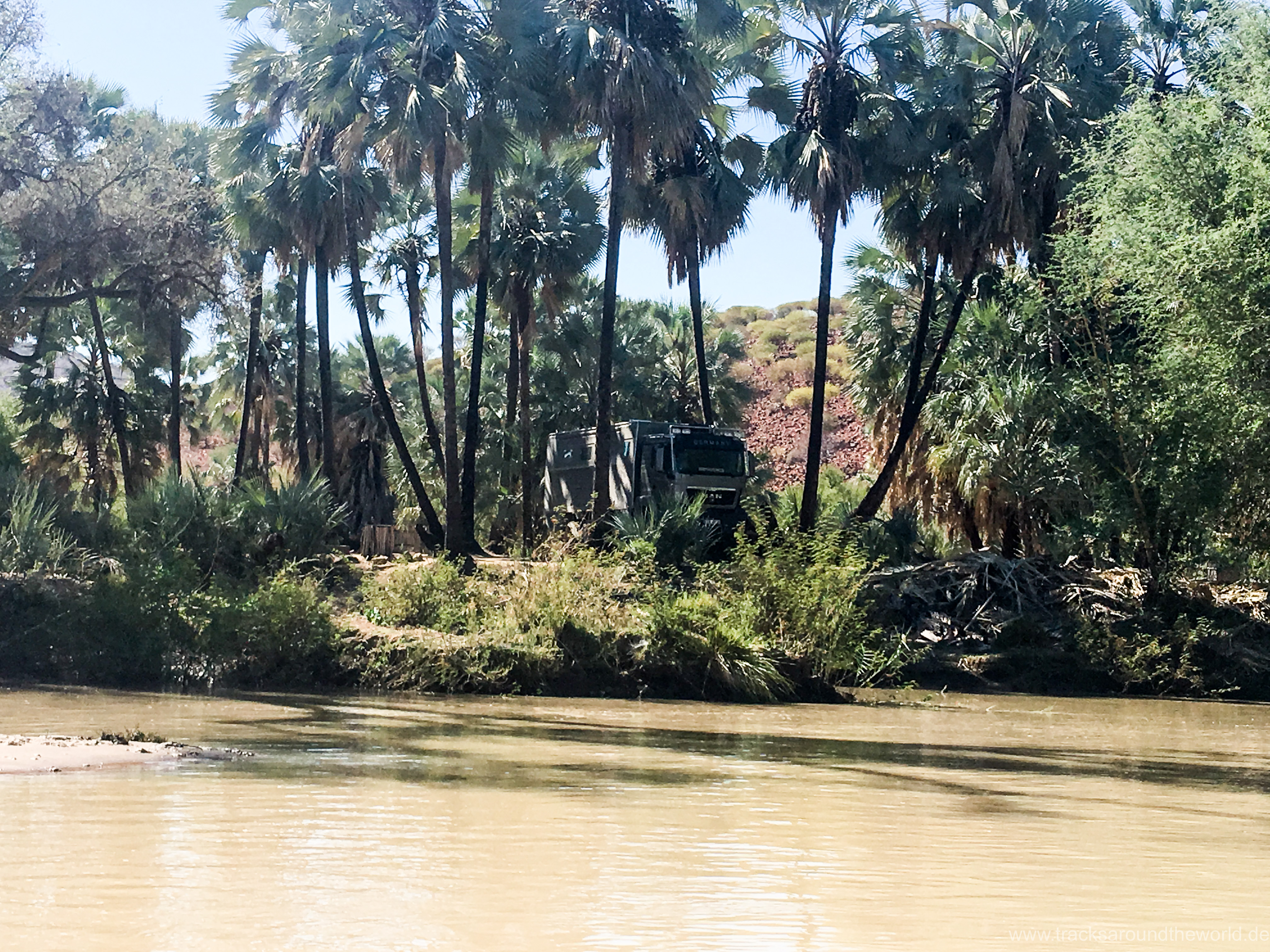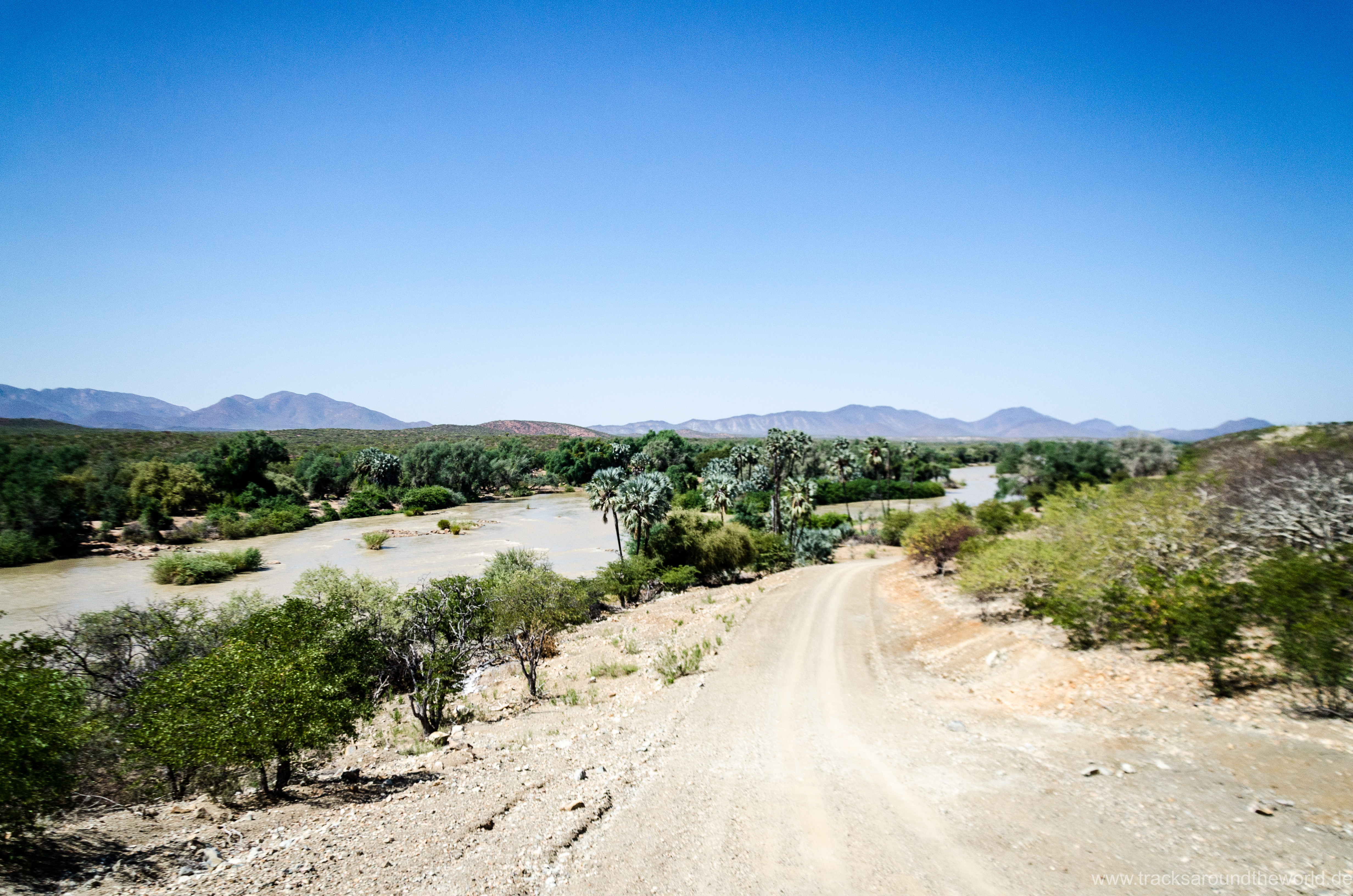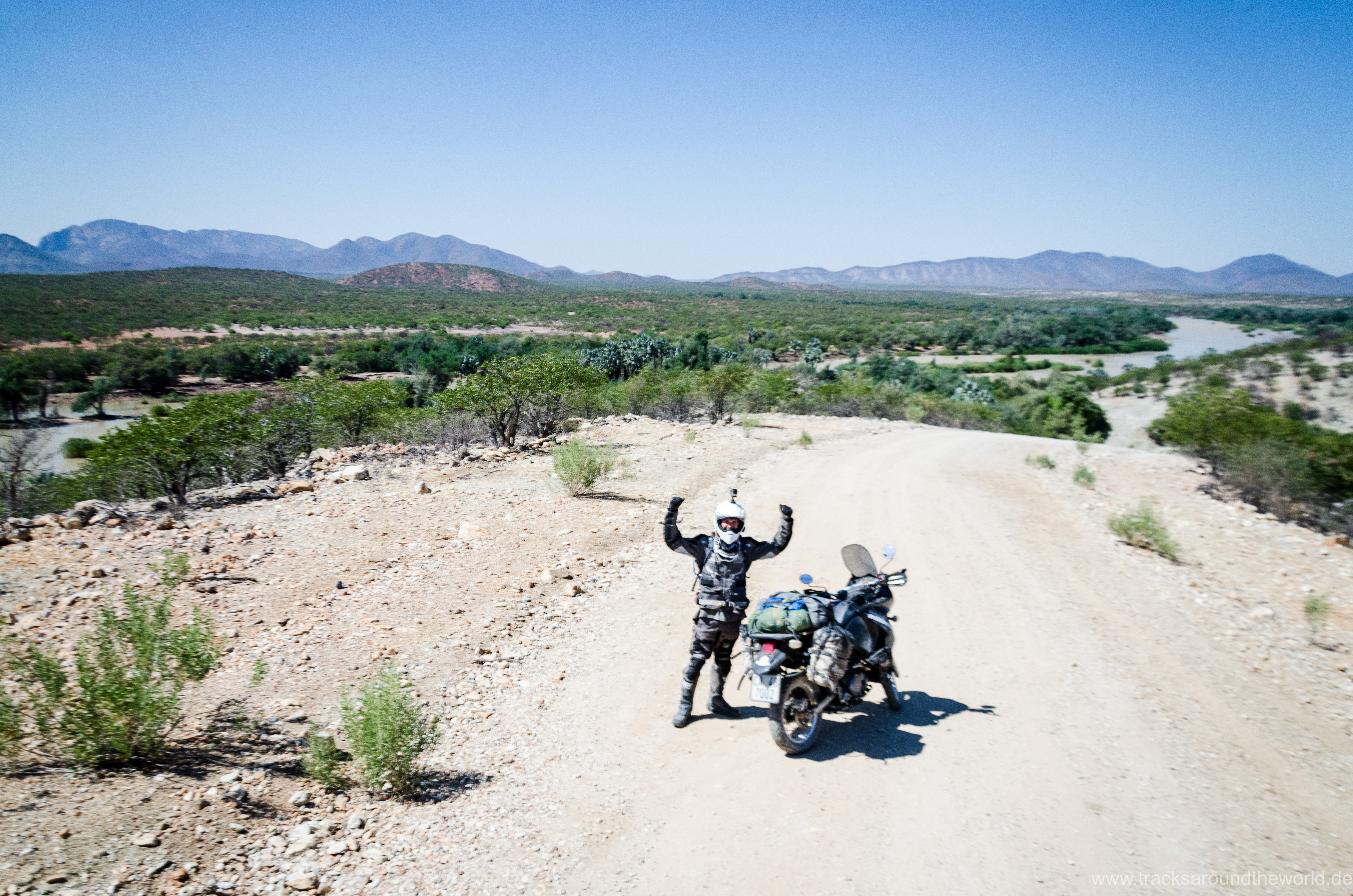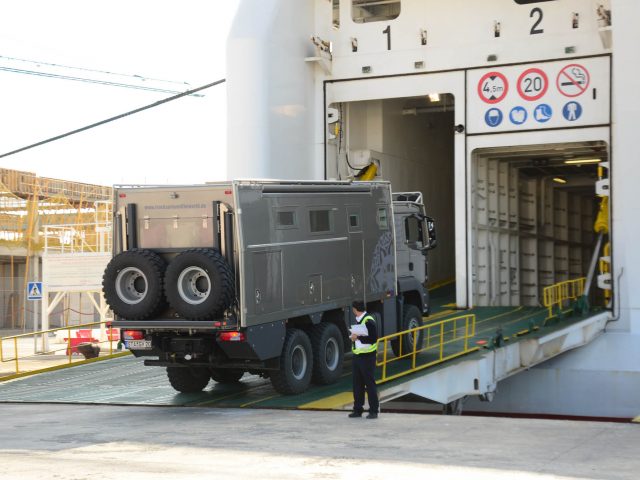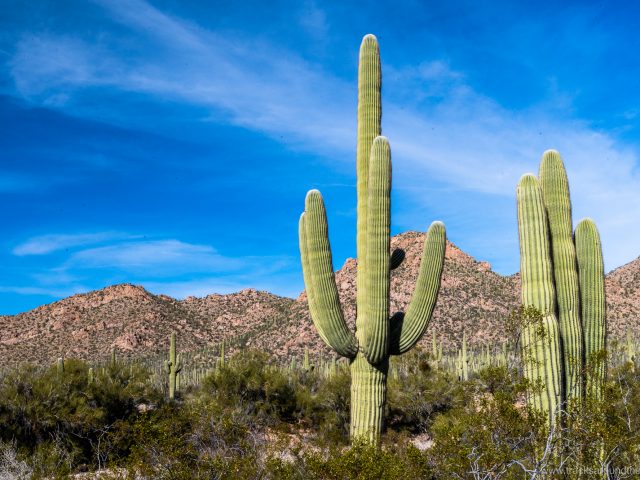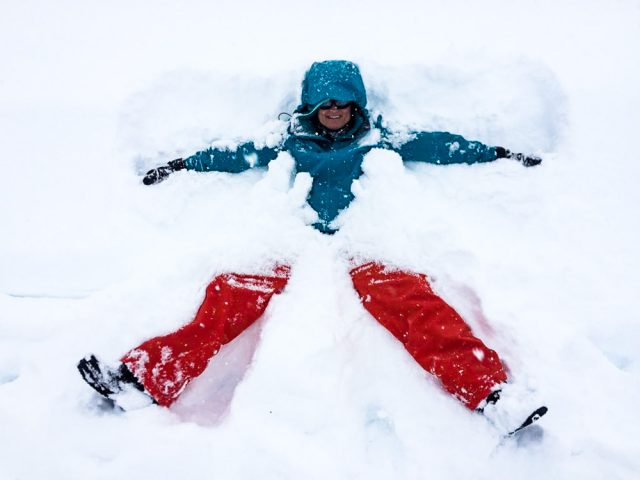The Kaokoveld is considered one of the loneliest and most impassable regions in the whole of southern Africa: it is recommended to undertake expeditions there with at least two vehicles, since hardly any help is possible in the event of a breakdown. The few slopes are hardly maintained and there are no supply options (gas, food, etc.). In this inhospitable seclusion, only a few Himba live and various areas are officially closed as they are private concessions of exclusive lodges that fly their guests into this solitude. Exactly the right thing for us: after all, we have changed our “continent sequence” and have not traveled from South America to Central and North America, but have decided to do Africa next.
To sum up: it was a terrific experience. We had no tire or other damage to the vehicle, despite various challenging situations. Only the starter batteries annoyed us again…
We start in the loneliness of small village Seesfontein, refuel once again diesel and water and plunder the few things we can need from the local tiny supermarket. Then off we go, along the Huab Rivier to the west: over the deep-sandy, dry riverbed it goes on and on to the Skeleton Coast. Only the desert elephants well known for this rivier do not want to show themselves. We even drive to a luxury concession lodge to inquire about the elephant’s current whereabouts. They are quite surprised when we arrive with Shujaa, and wonder how we made it here (all their guests are flown in by small aircrafts), but unfortunately, they tell us that the elephants have left into the fast remoteness of the Skeleton Coast. We drive afterwards to the limit of the road area – unfortunately without success. We spend the night in the dream dunes at Amspoort, where we see the fog moving from the Skeleton Coast into the desert in the evening. The next day we drive through the Hoarusib Canyon to the tiny settlement of Purros. Instead of finding elephants we find quite deep water and – more challenging for us – muddy river passages. After our special experiences in the superficially dried up lagoon in Northern Argentina, I wade through most of the river crossings by foot, to test the load-bearing capacity of the subsoil. Although Shujaa sometimes has to work harder through the mud, everything turns out to be fine. We realize during this passage that we have become very experienced in such situations in the meantime.
After having finished our lunch break at the extreme north / west end of Namibia – in the Hartmanns valley with completely bizarre dune / rock landscape – Shujaa does not start again. The batteries are again too weak, although we had changed them just over two weeks ago in Swapkopmund. Great frustration is spreading, but we are now experienced in self-starting ourselves with the use of our cabin batteries. Nevertheless, we ponder a lot around: have we just caught bad, too long-stored batteries or is there any other, deeper underlying problem? We decide to continue our tour through the Kaokoveld as planned, and to drive to the neighboring valley “Marienflusstal”. The slopes are more than challenging and Shujaa can fully exploit his superior talent of climbing across huge rockets. It is unbelievable what the vehicle can do when crossing deep, washed-out river crossings with lose ground. We sometimes think about turning around and then decide to give it a try and wonder how effortless Shujaa masters the sections. Fortunately, there are very few trees, so we rarely have to resort to our cutting equipment. More often we use the sledgehammer (to disassemble large stones that we cannot carry away) and the shovel (to straighten passages and to equalize deep holes). 150 km can be a day-filling exercise.
The Marienfluss valley lies a little further east and is therefore a bit greener than the completely barren Hartmanns valley. The green mopane trees on red sand are a great contrast and as we reach down the Kunene, the border river to Angola, we stand on the bank and hear the wind gently brushing through the reeds. The massive, high mountains of Angola raise right on the other side of the river. We pass completely original Himba villages and have seen only three cars in the last six days. Back in the direction of Opuwo, small provincial capital, we still have to pass several challenging technical challenges. We measure the batteries and have to realize that one is down again: from the dealer in Swapkopmund, where we have the batteries installed two weeks ago, we will be sent a replacement battery on guarantee. It actually arrives the next evening at our lodge, where we have quartered ourselves on the hotel parking lot for my birthday – an additional birthday present.
The mood is surprisingly good because of our beautiful experiences, despite the battery problem: Even after installation of the newly supplied battery, Shujaa still needs to be self-started by our body batteries. Can I finally manage to be more relaxed in such situations and trust that “there will always be a solution”?
We drive up to the Kunene River, this time to the Epupa Falls, where we also do a beautiful, very idyllic rafting tour. On the way we visit another Himba village. At the river we are on the same campground as on our holiday trip 6.5 years ago …. And again, we like it here very much. Interesting, because often the enthusiasm for the second time is less than the first time. Along the Kunene we go east to Ruacana and slowly back to civilization. In Kamanjab, we stay at the well-known Overlander place “Otti Koppi Camp” (but we are again on our own) and take care of the battery problem at a well-known workshop.


